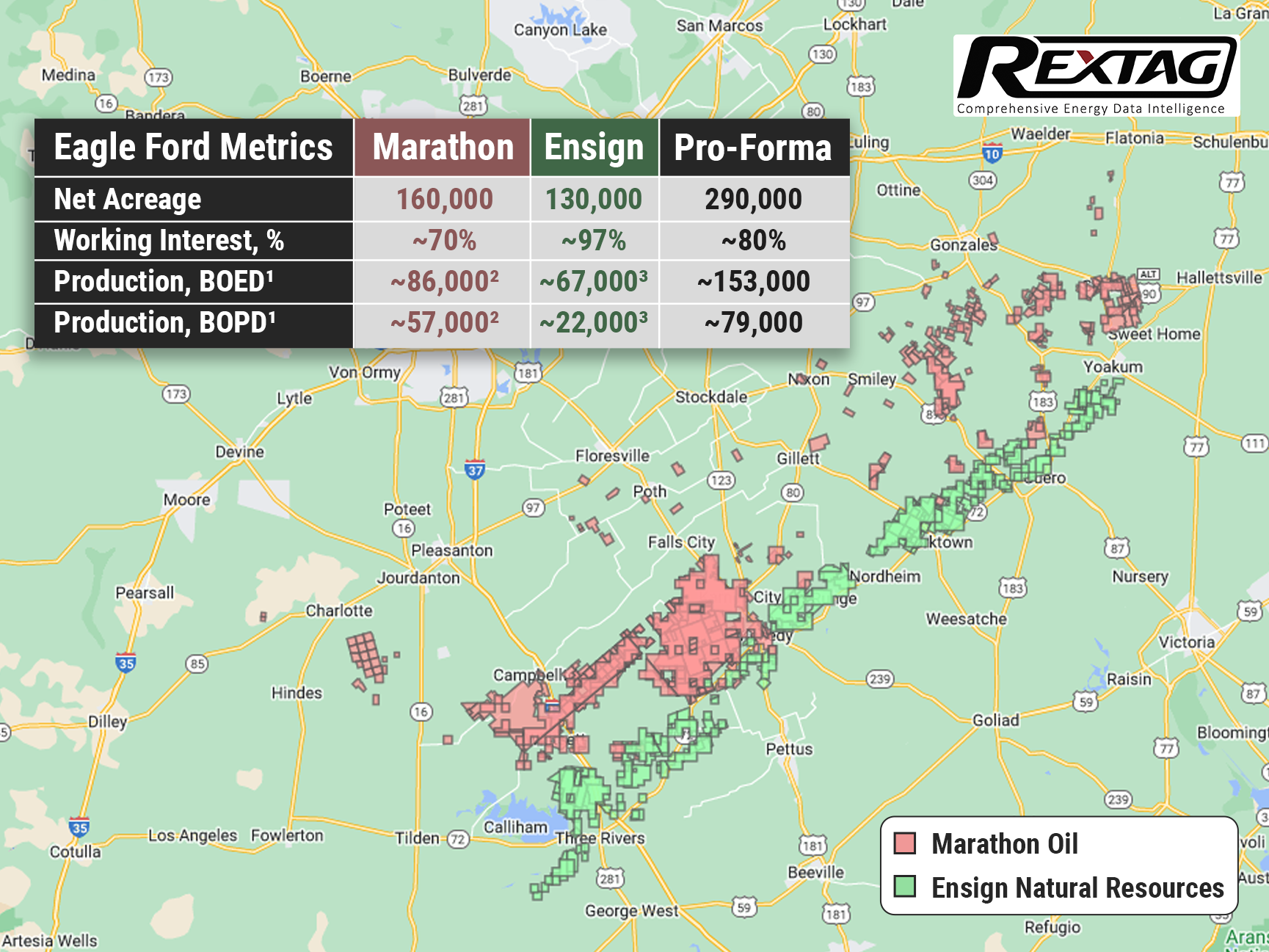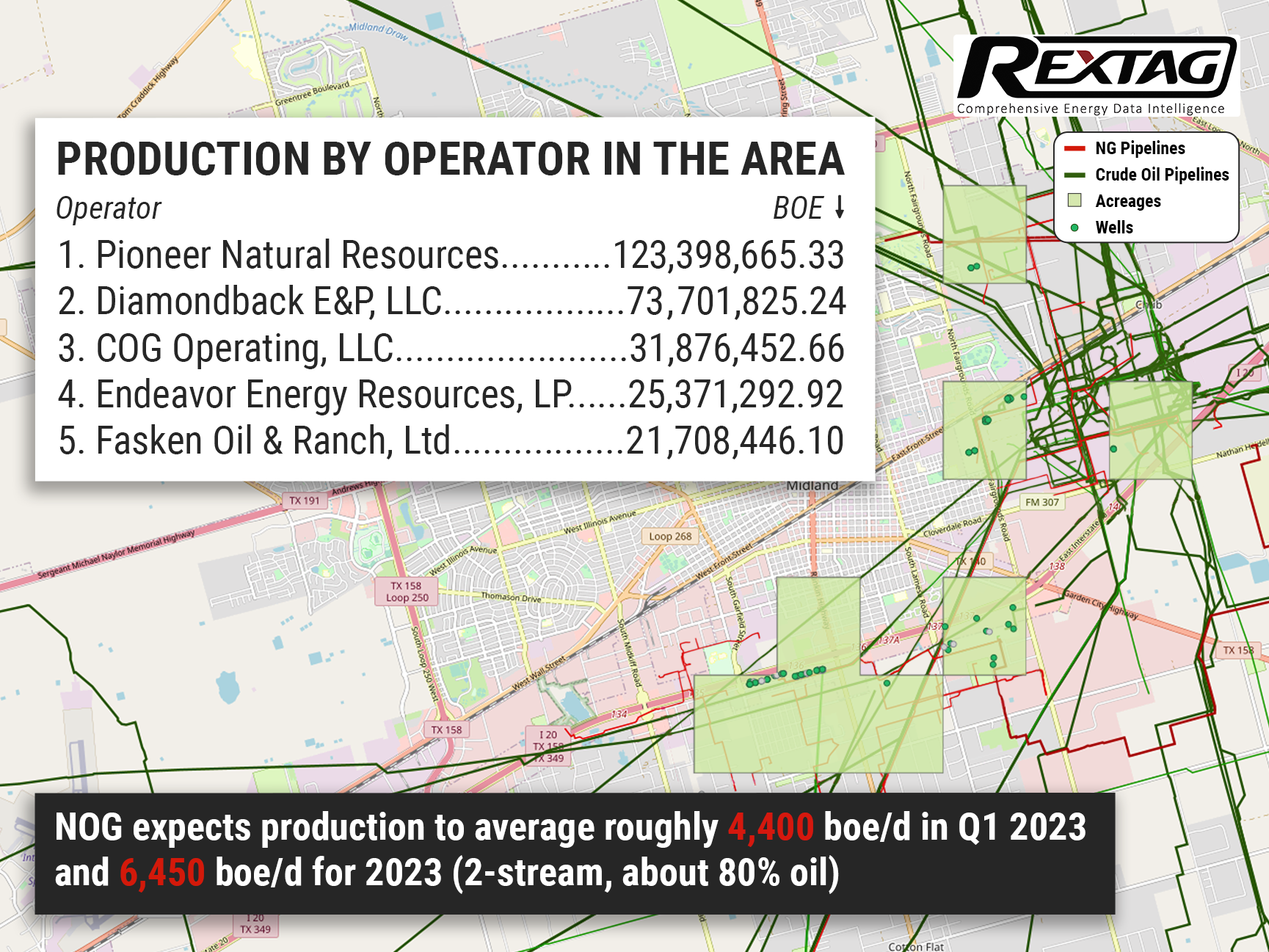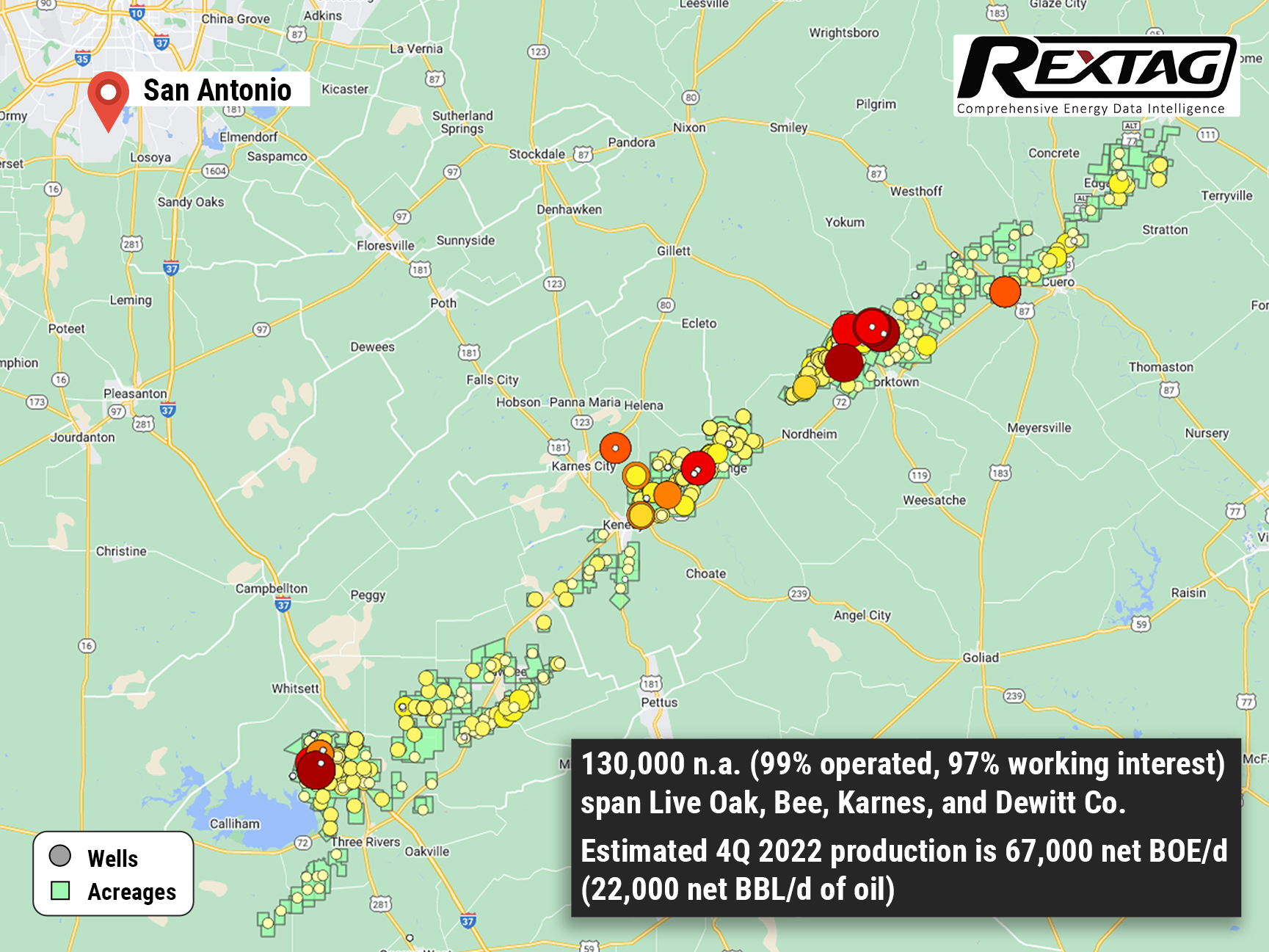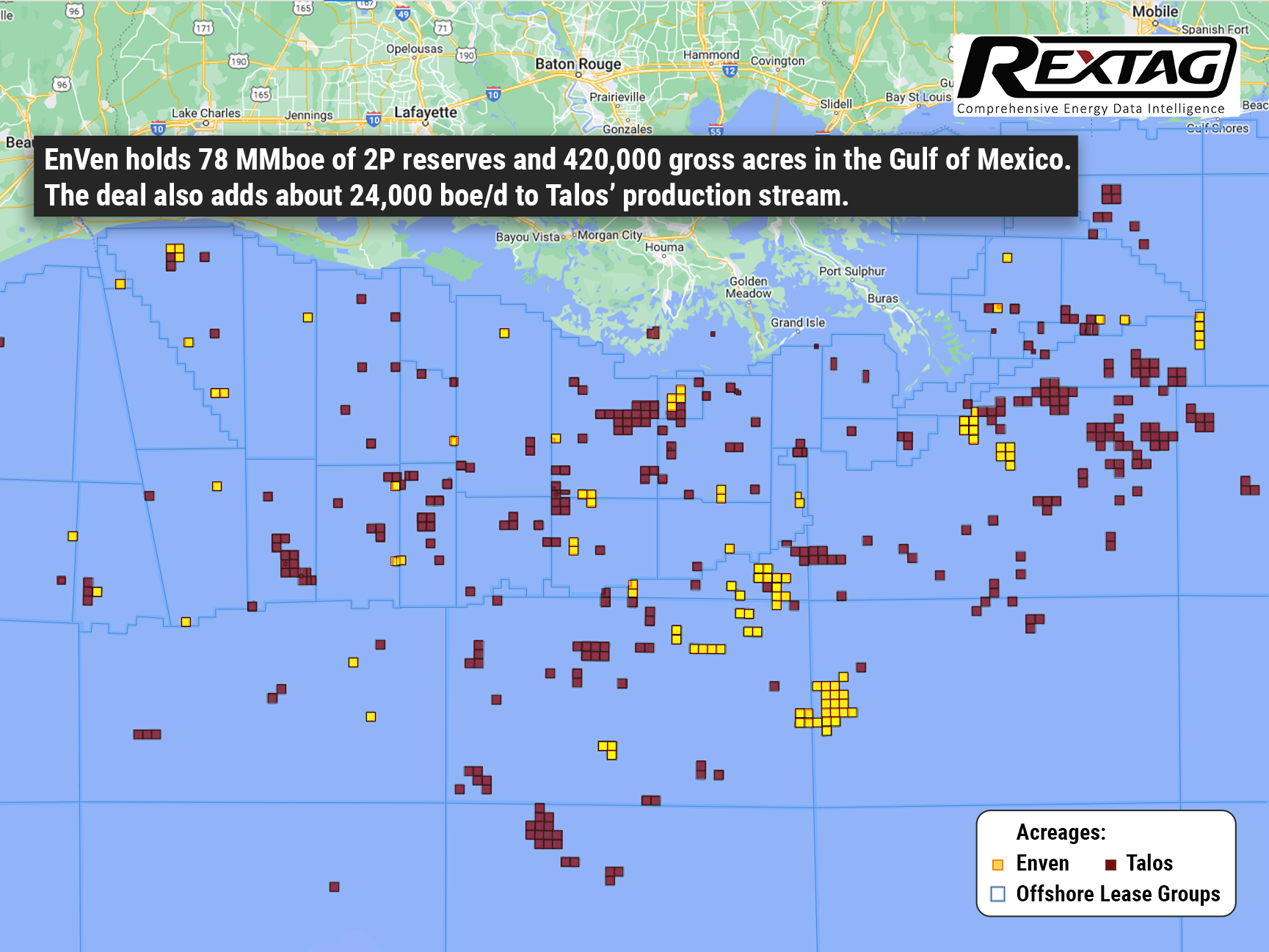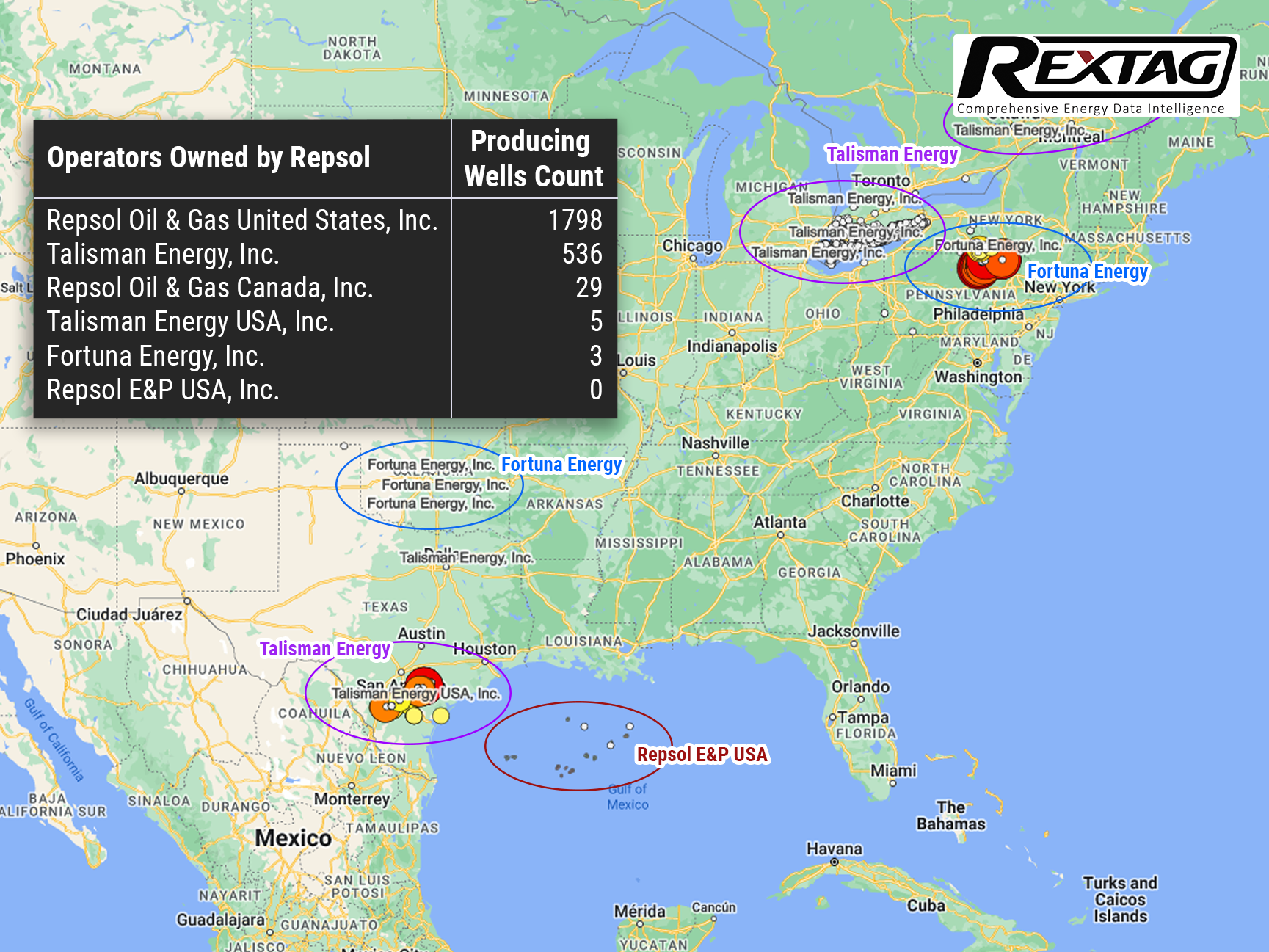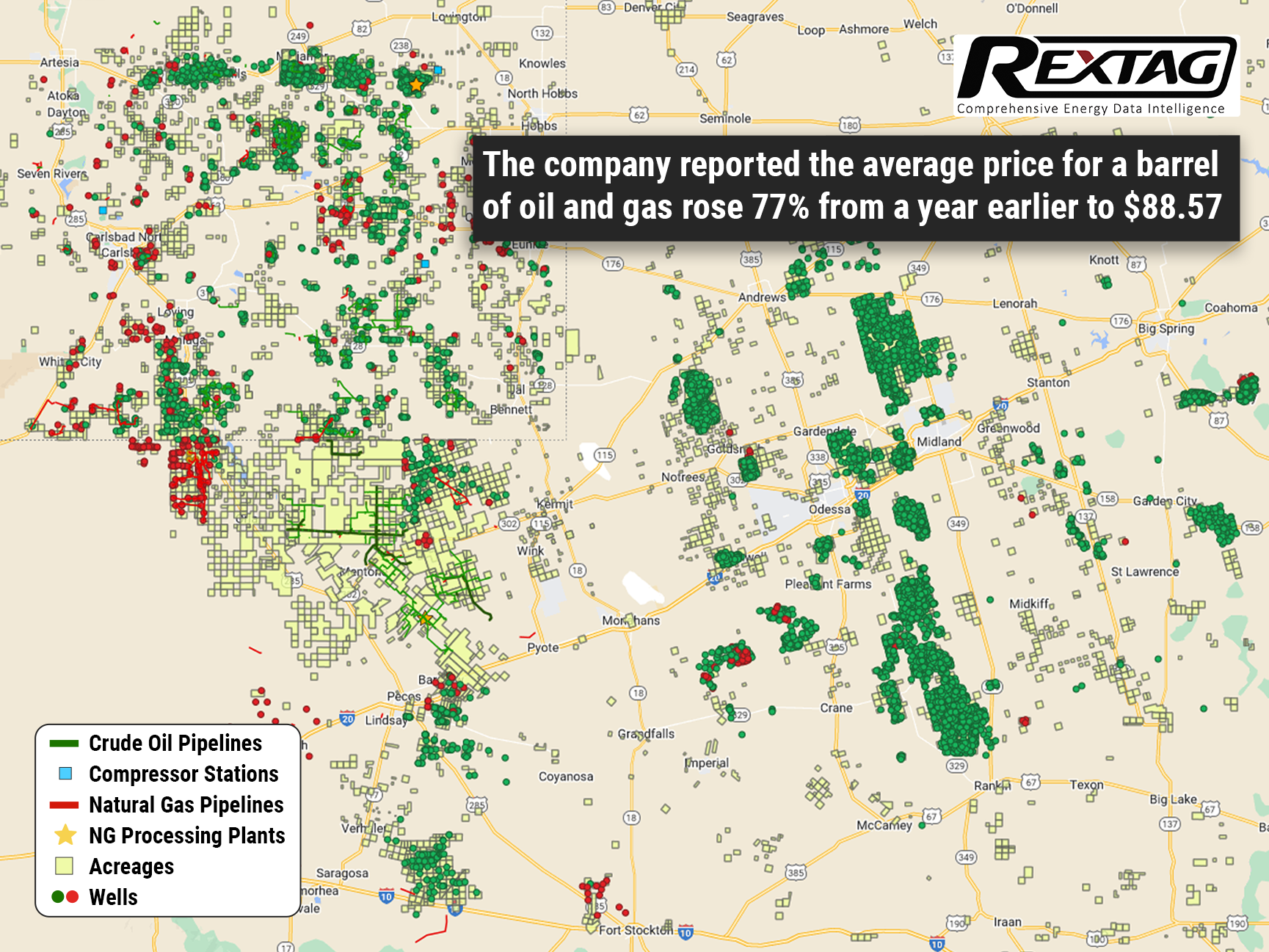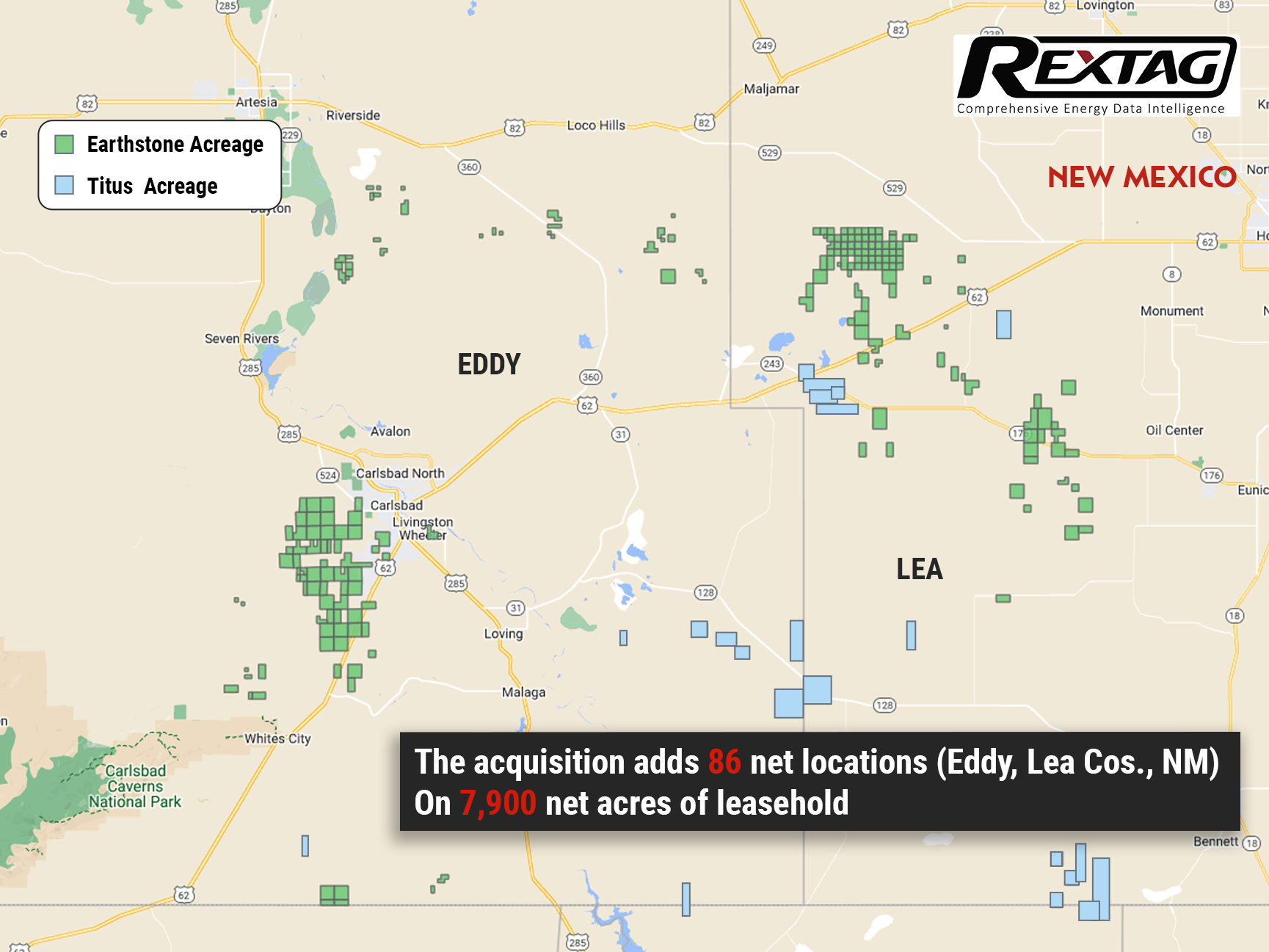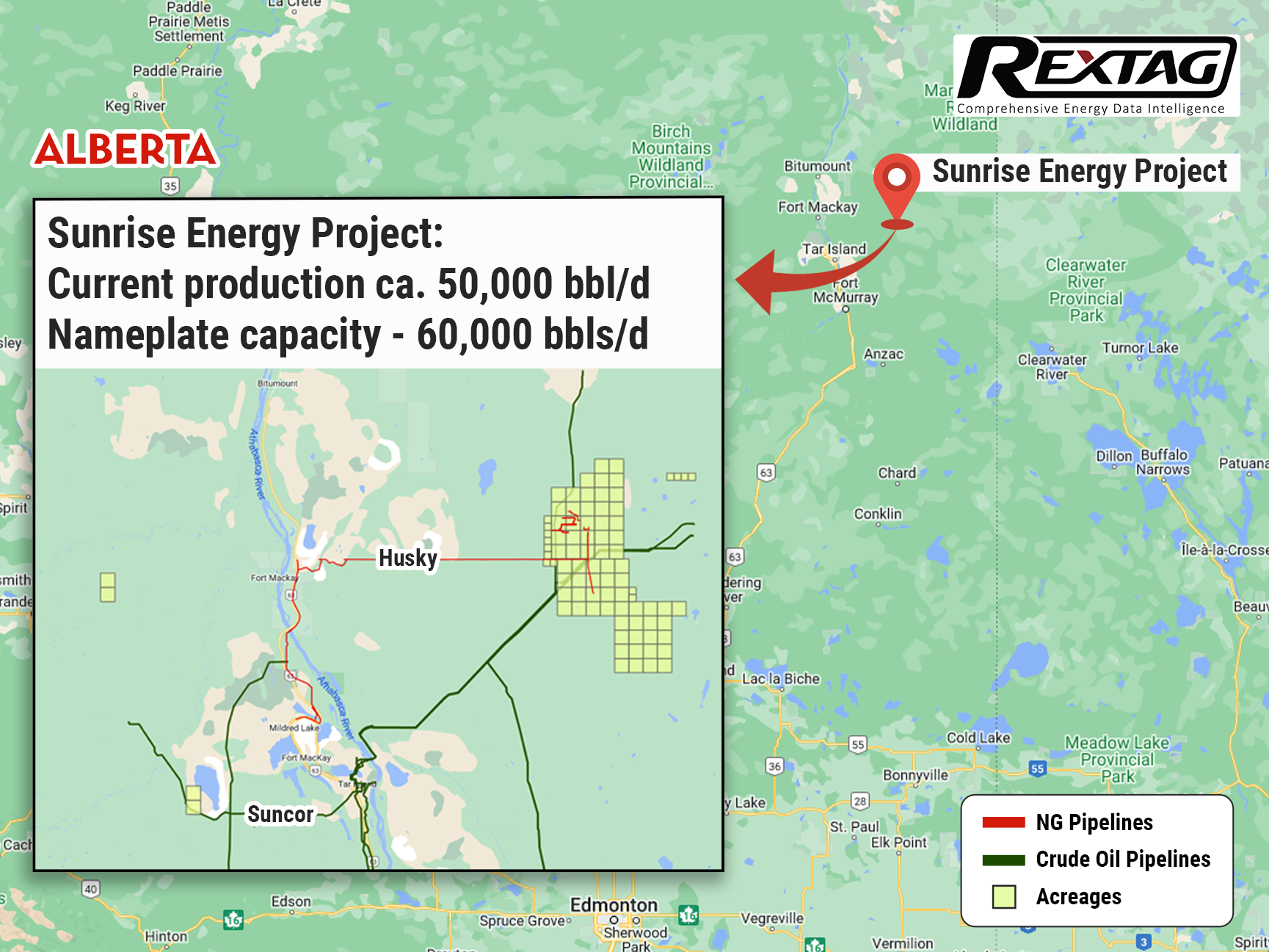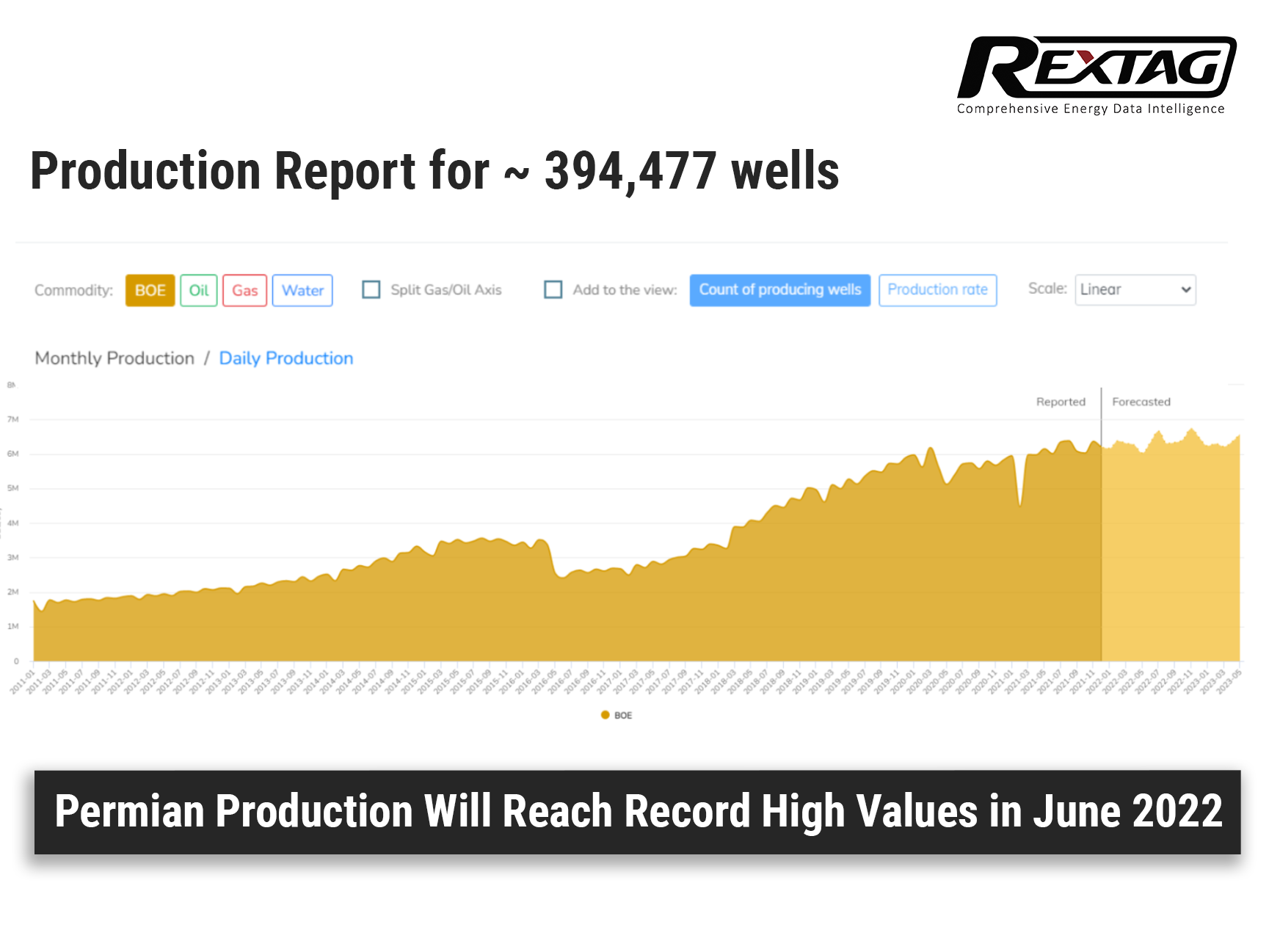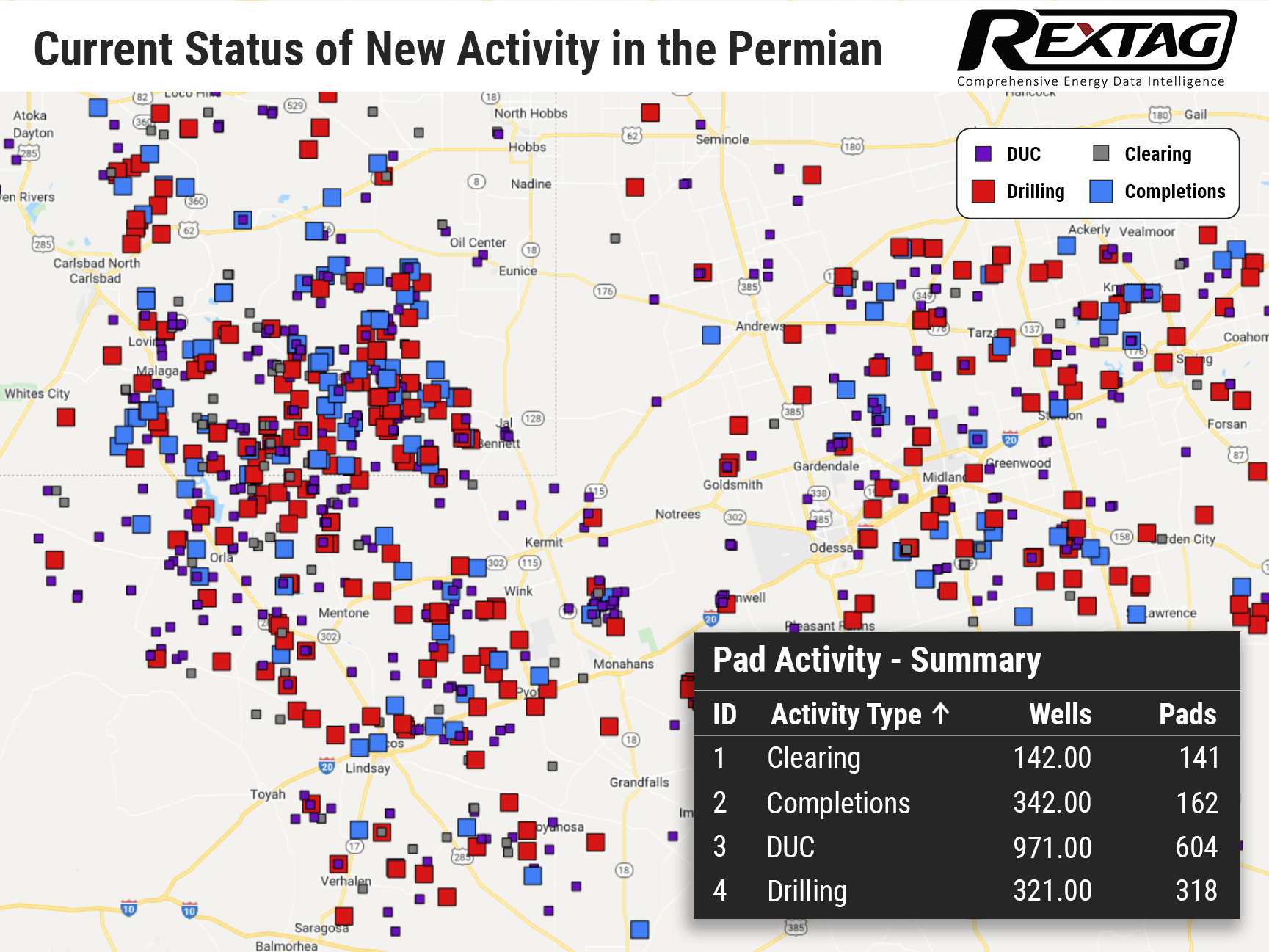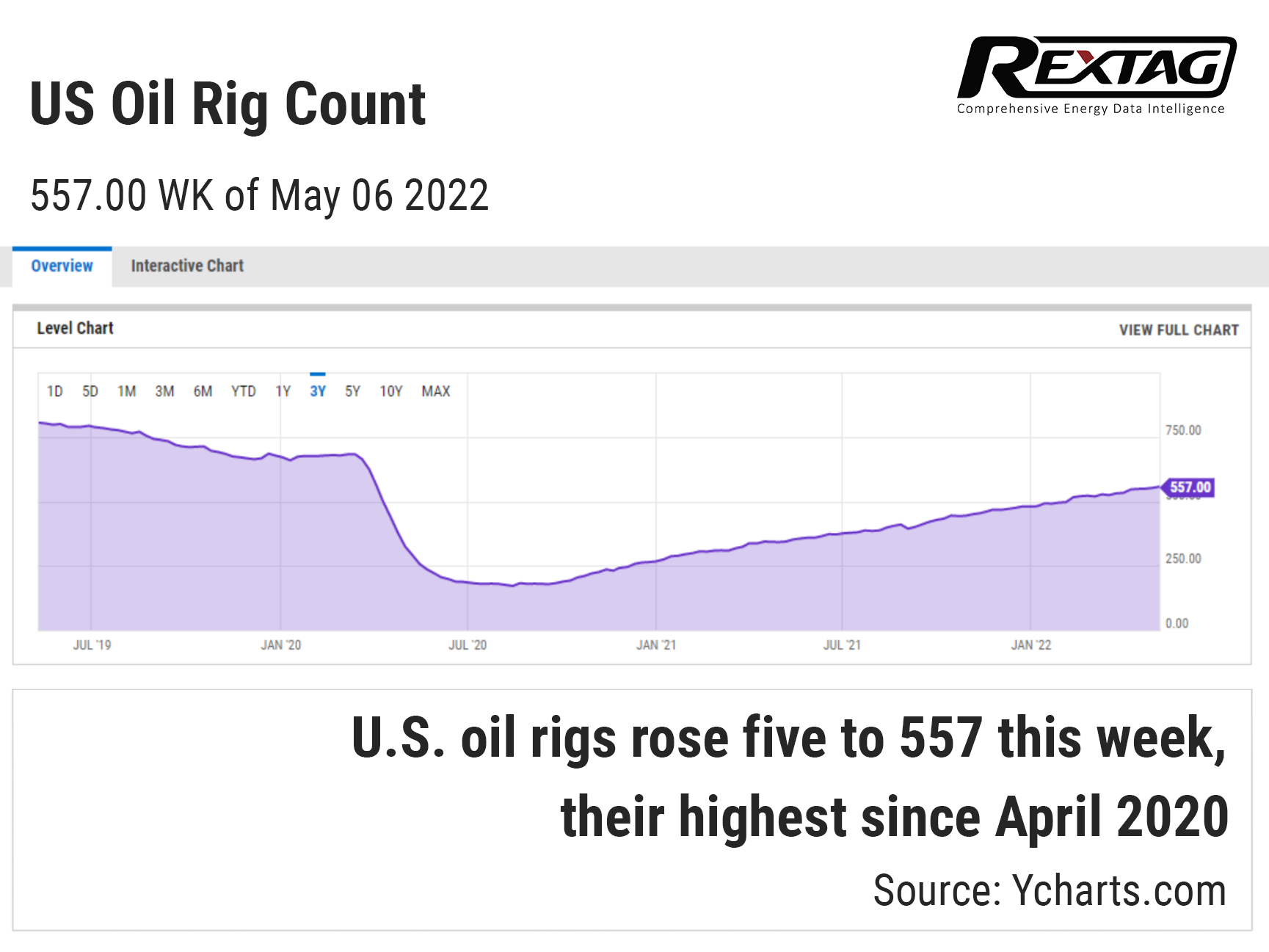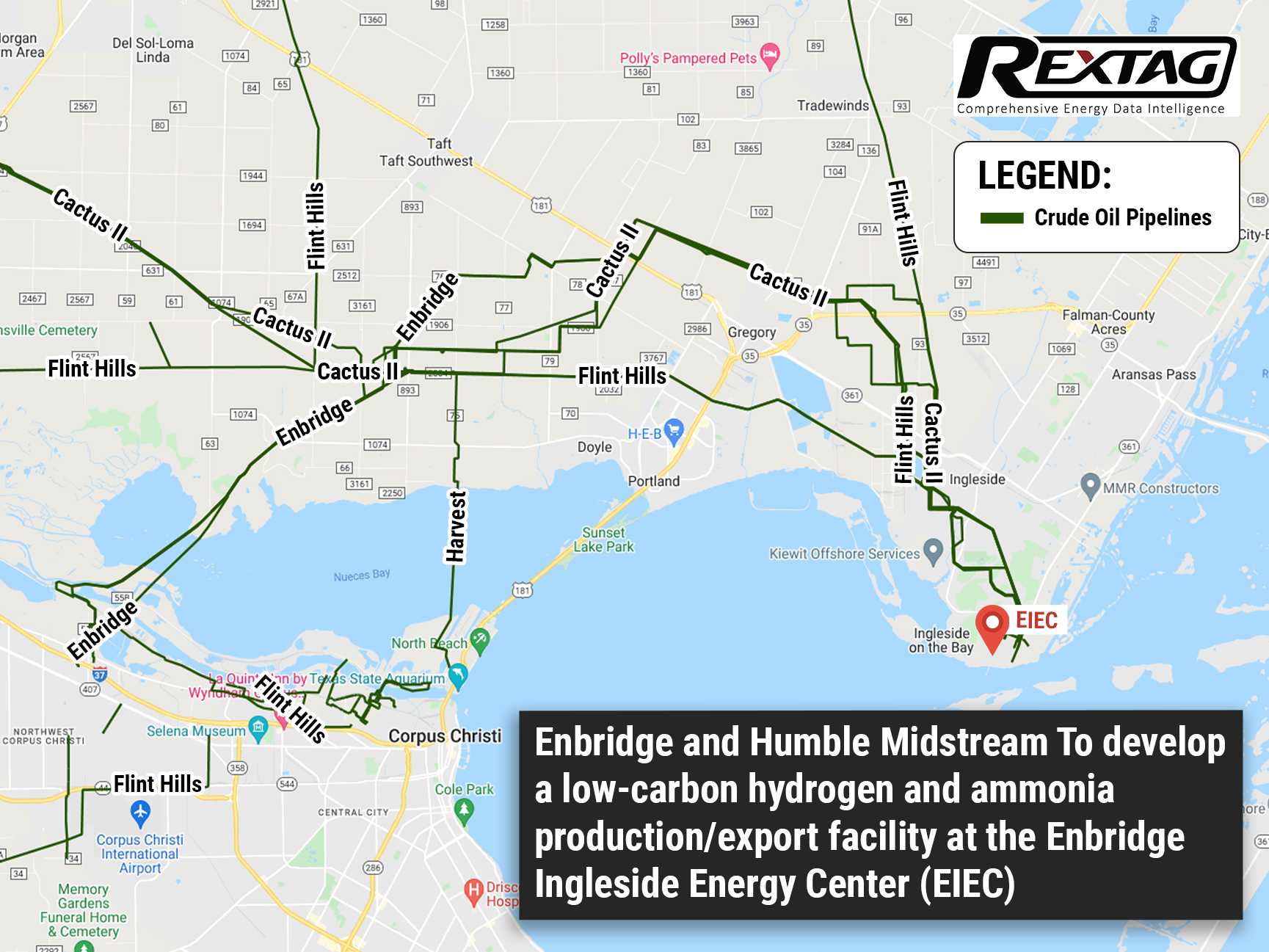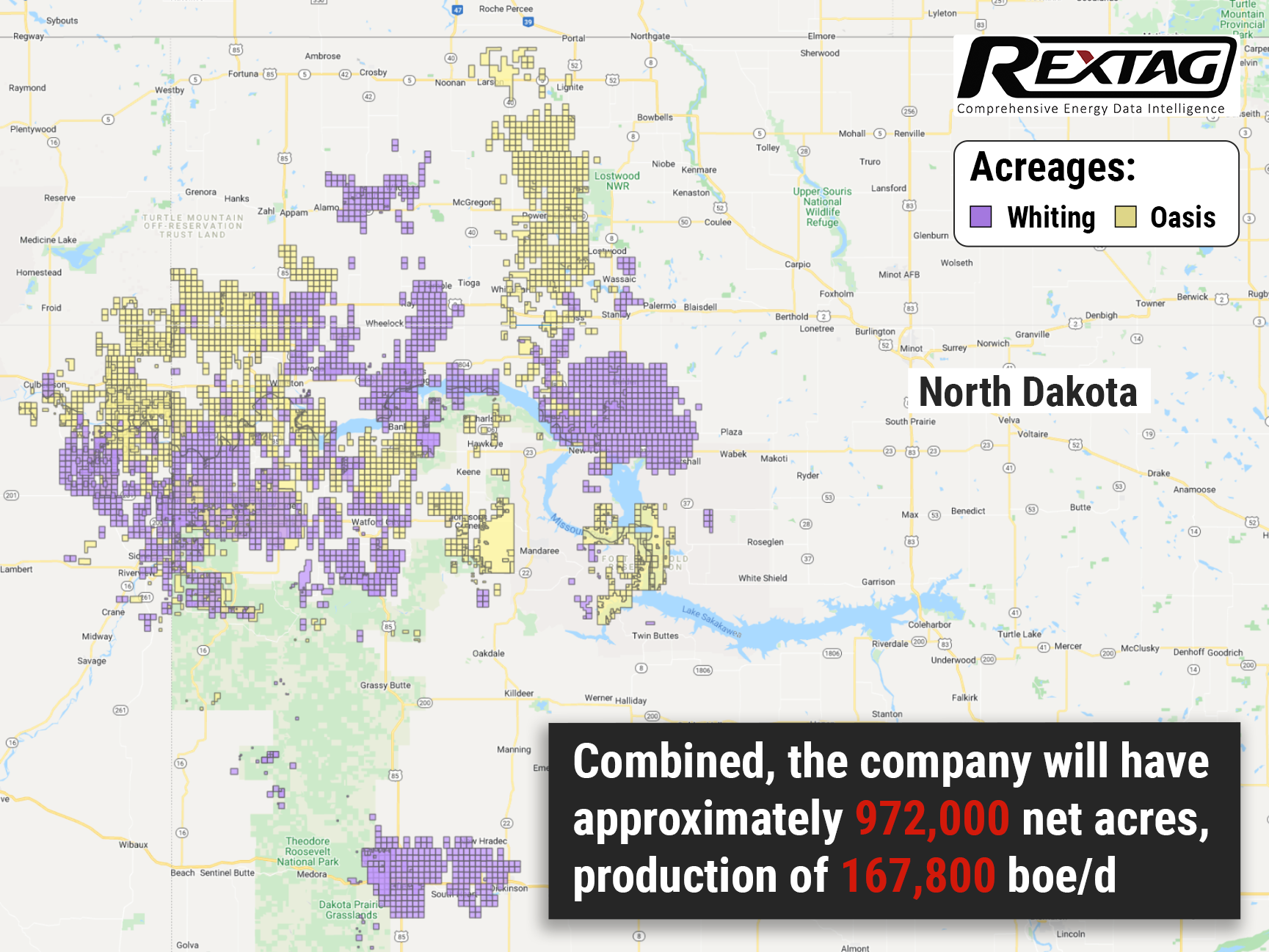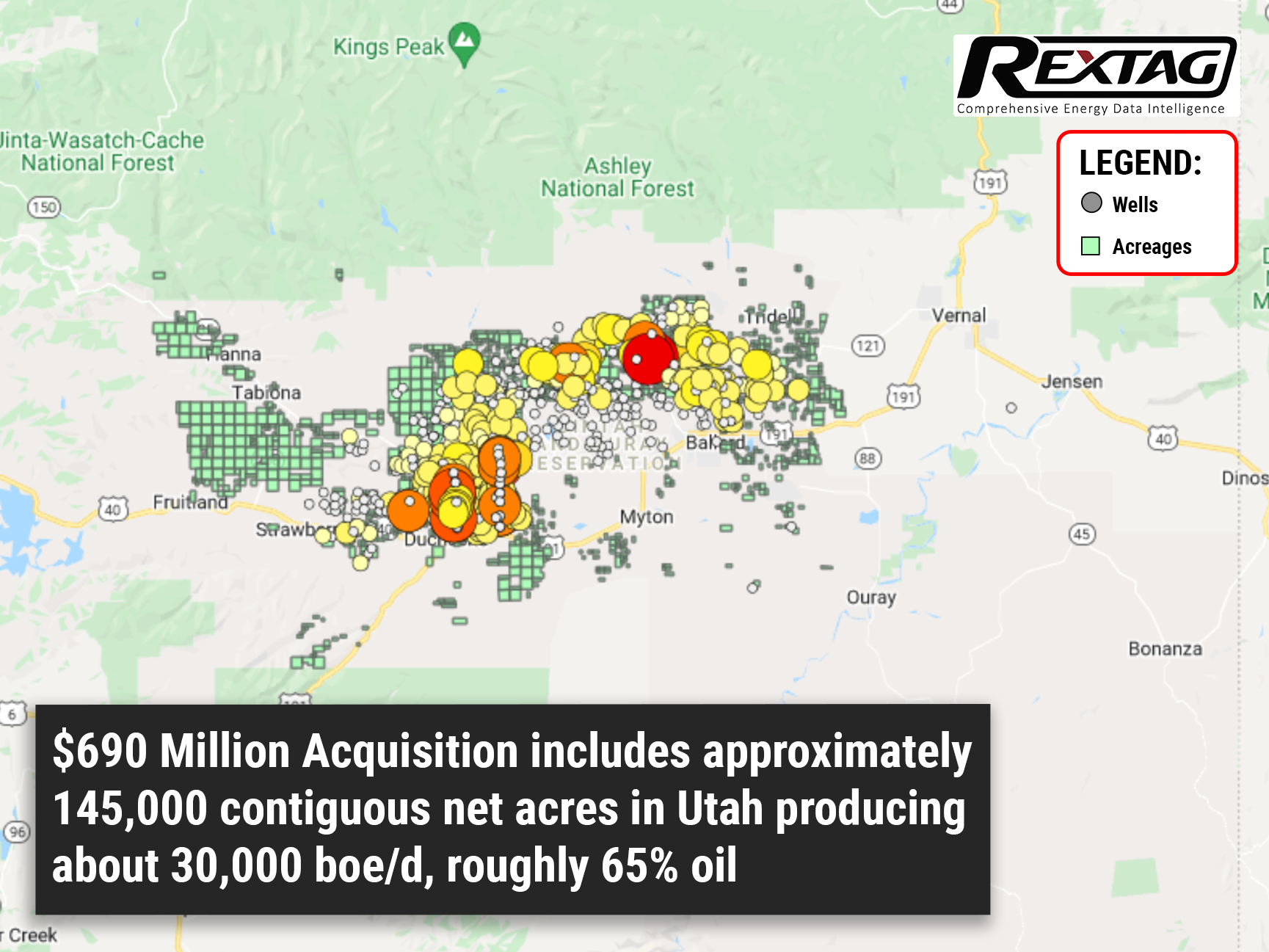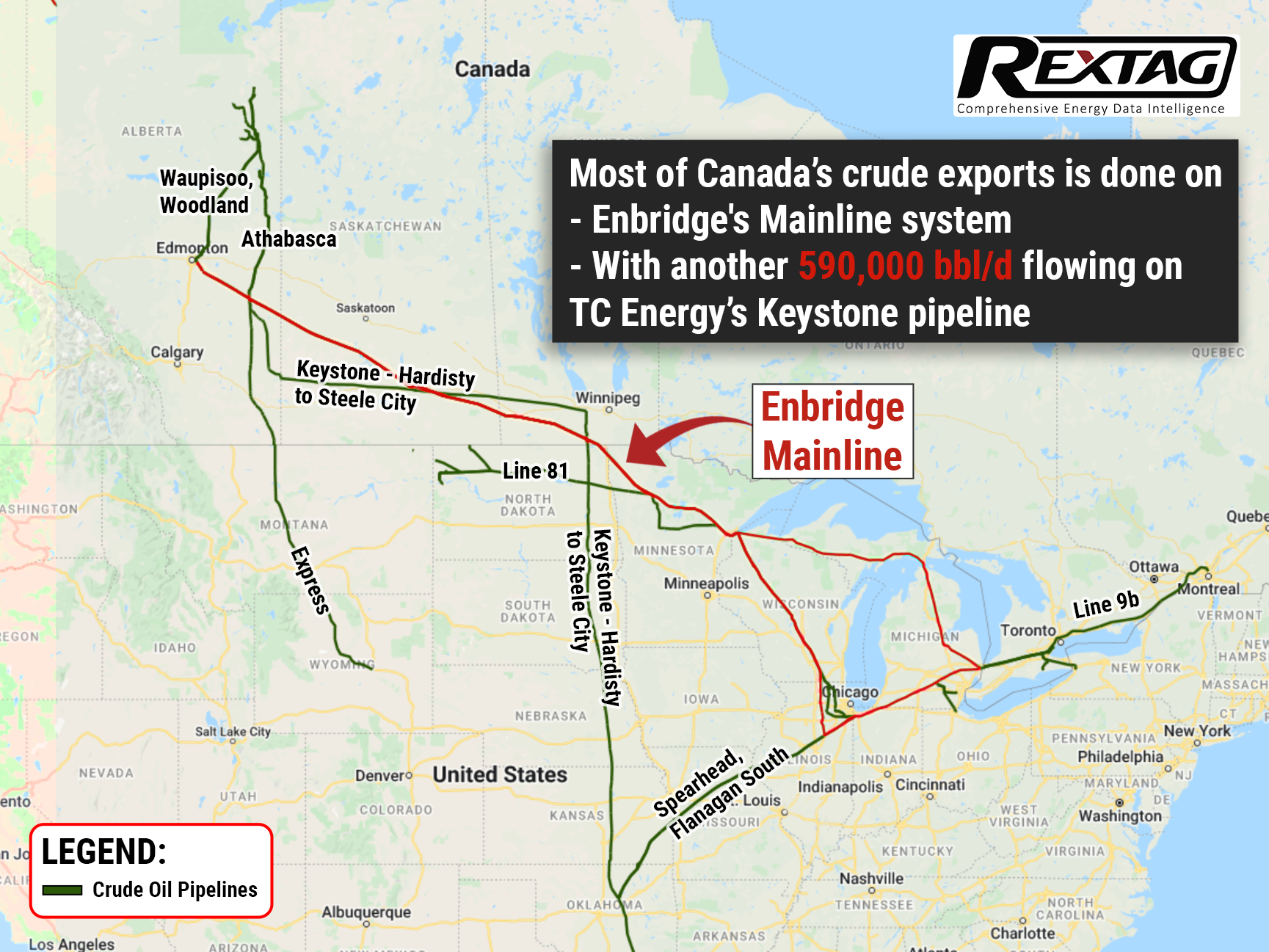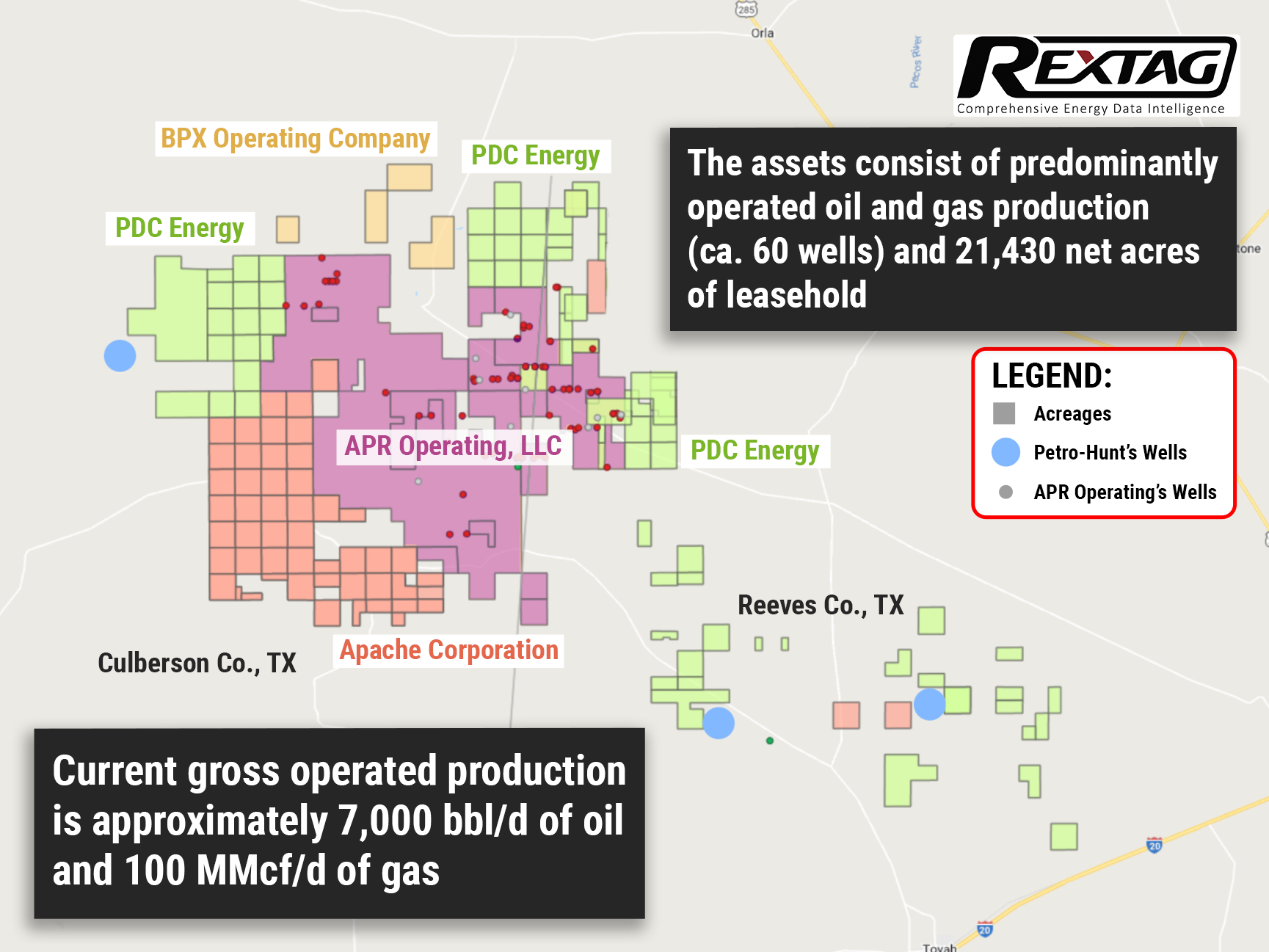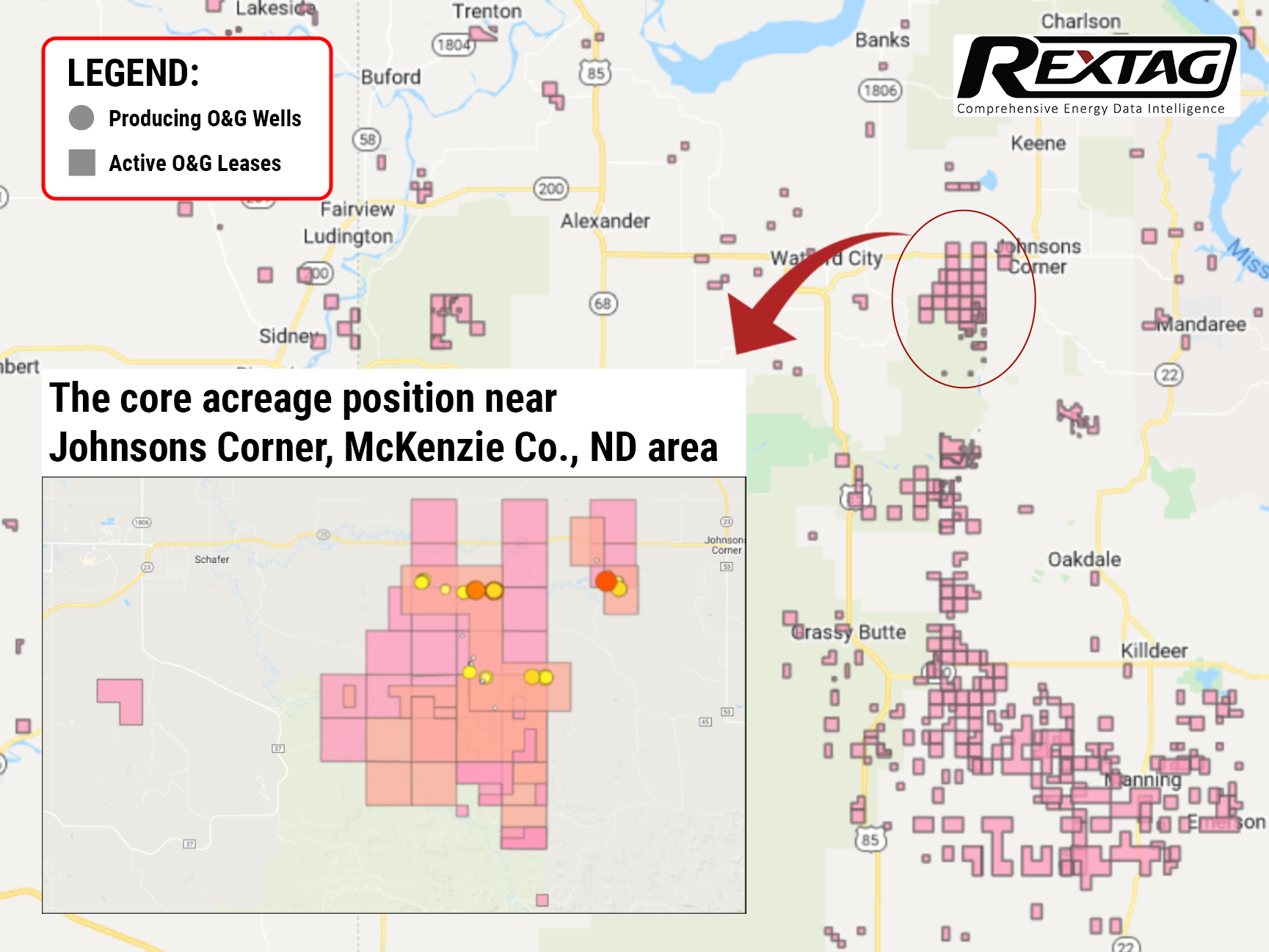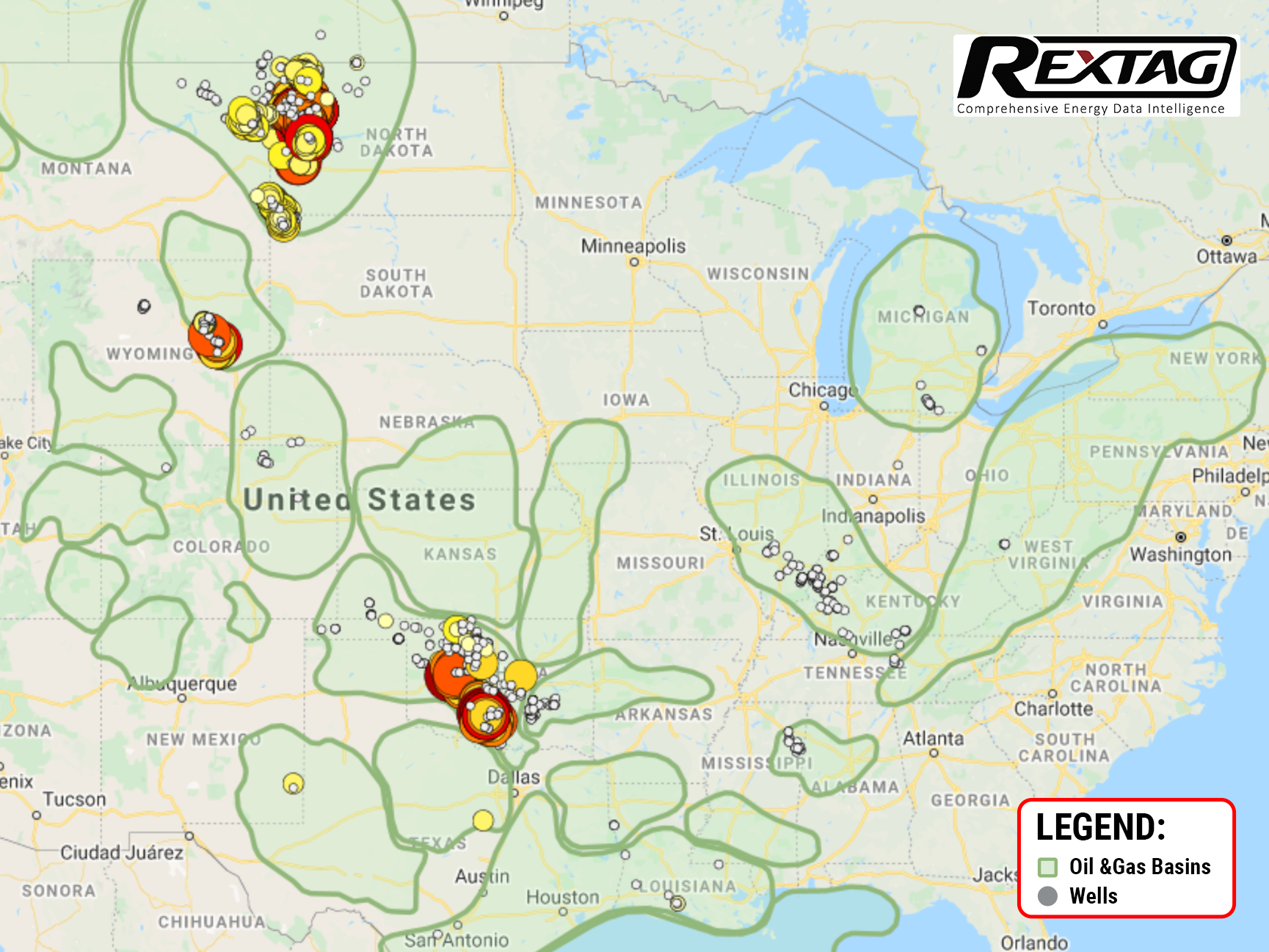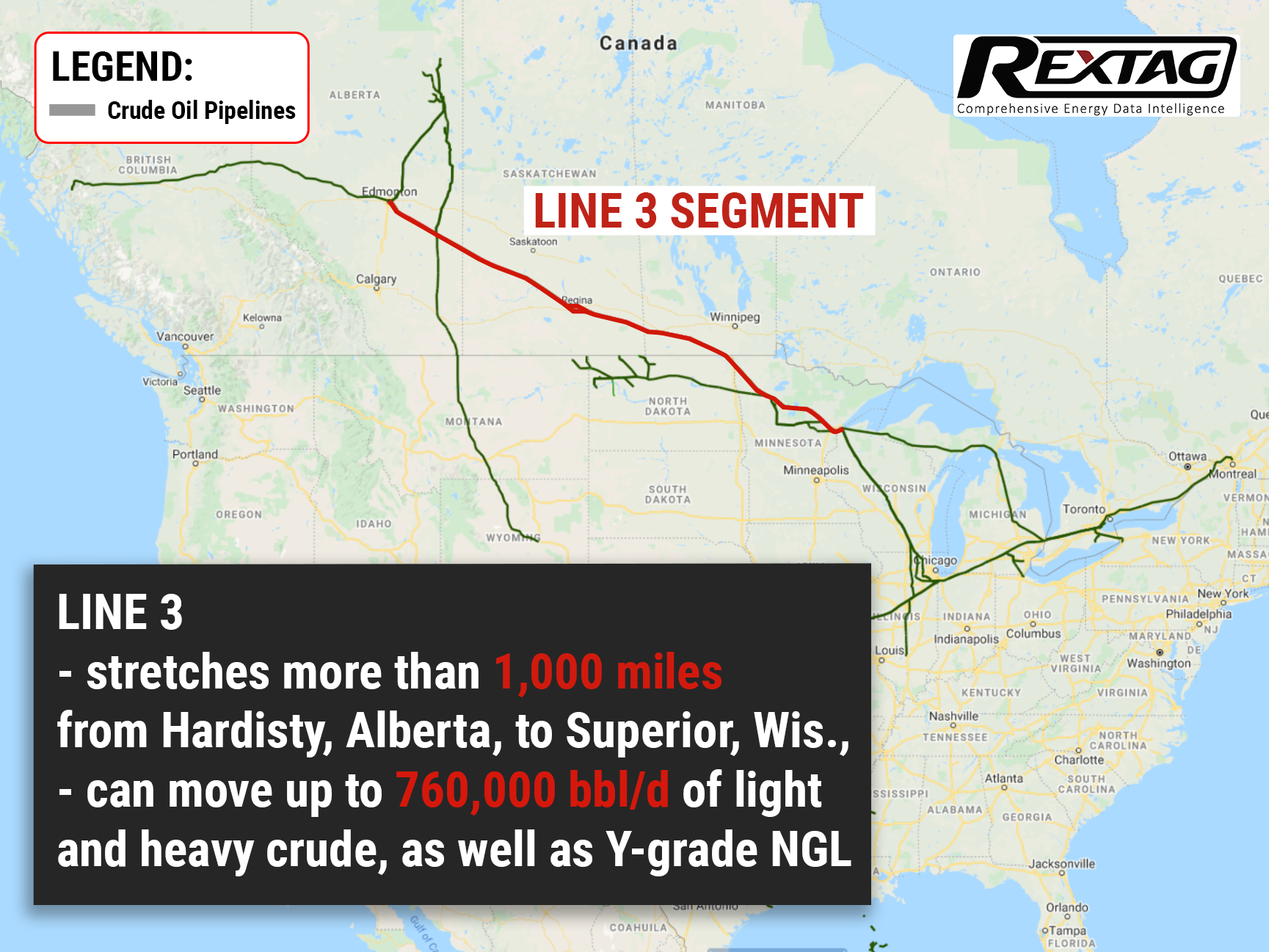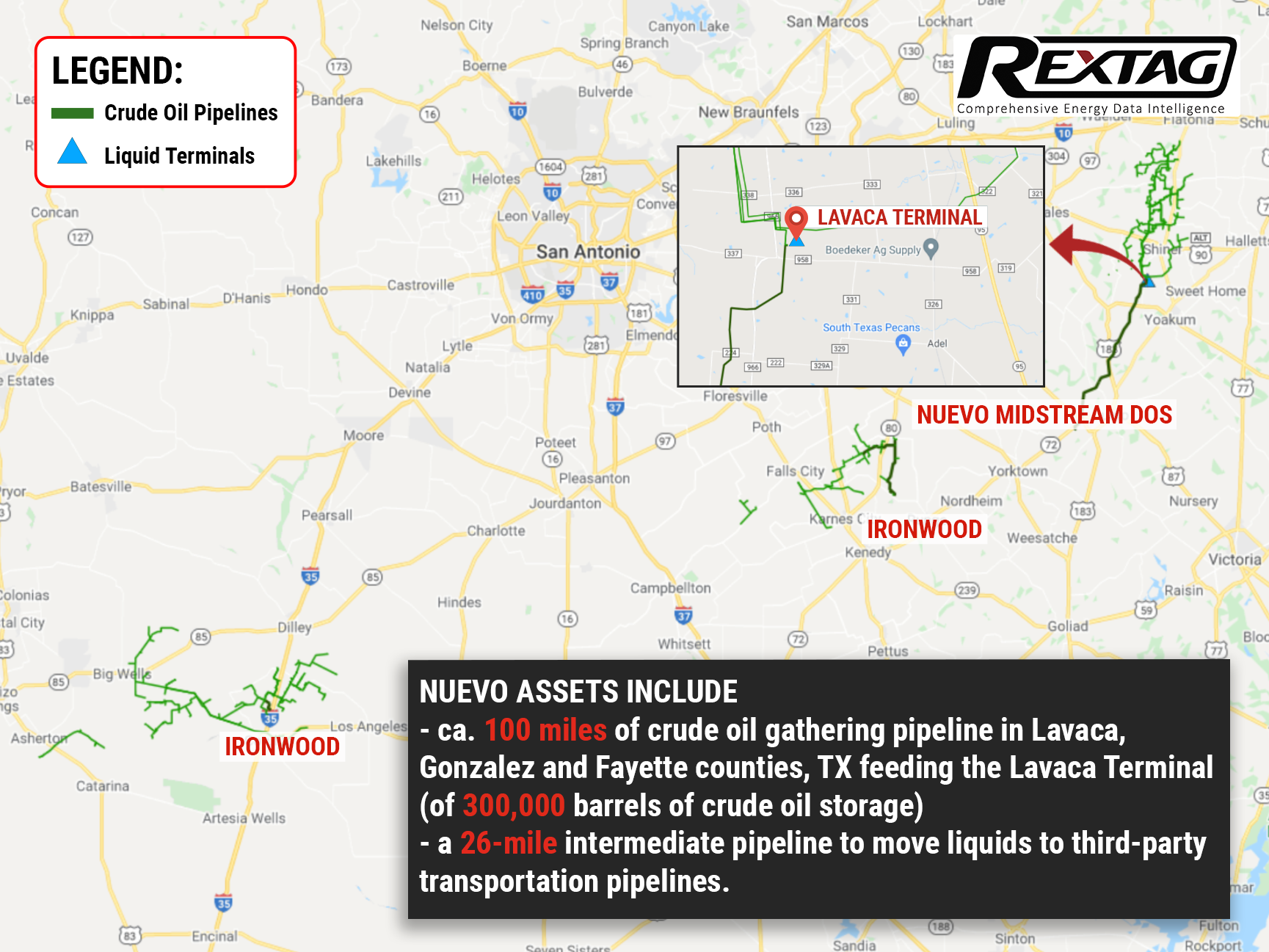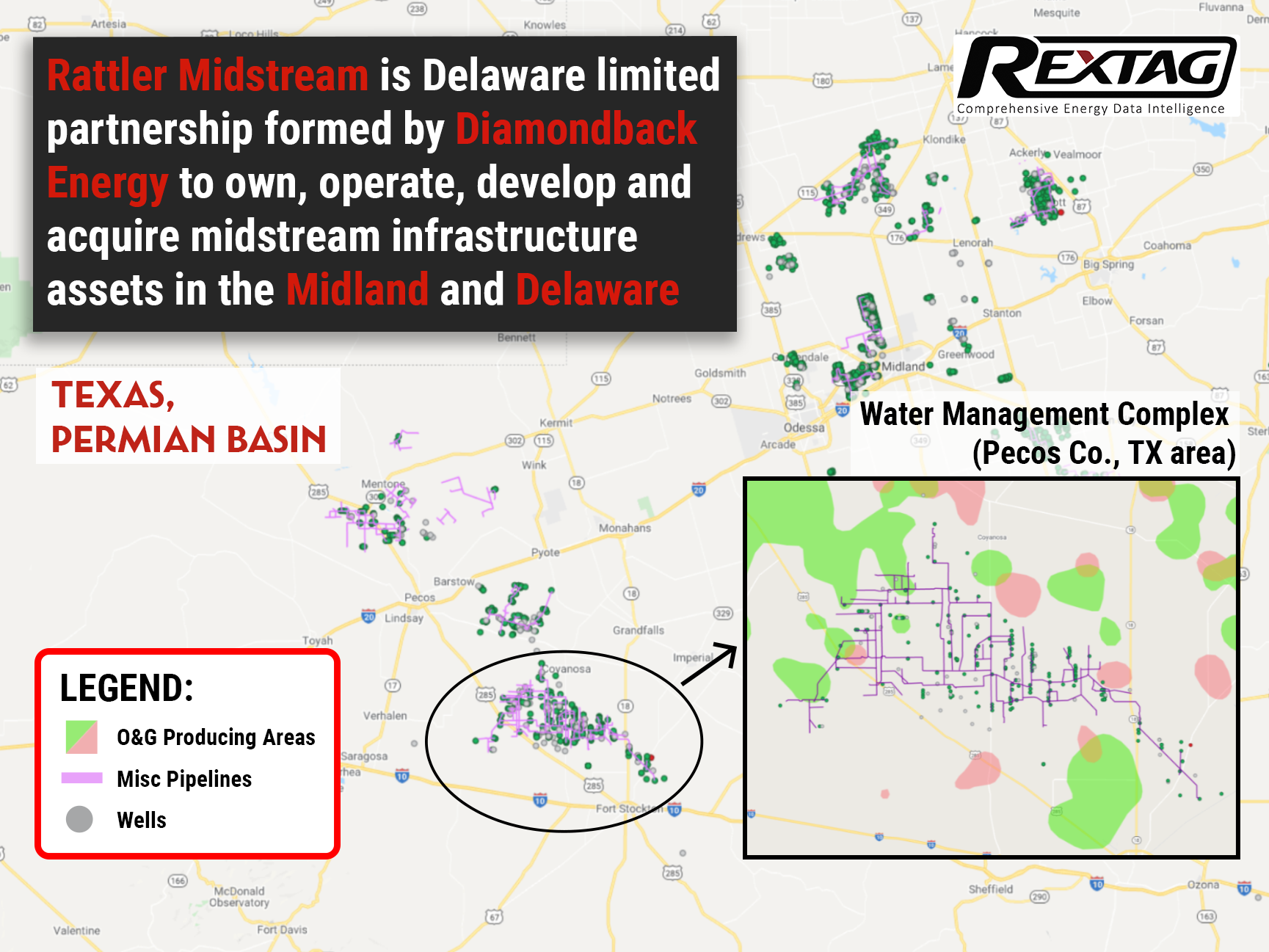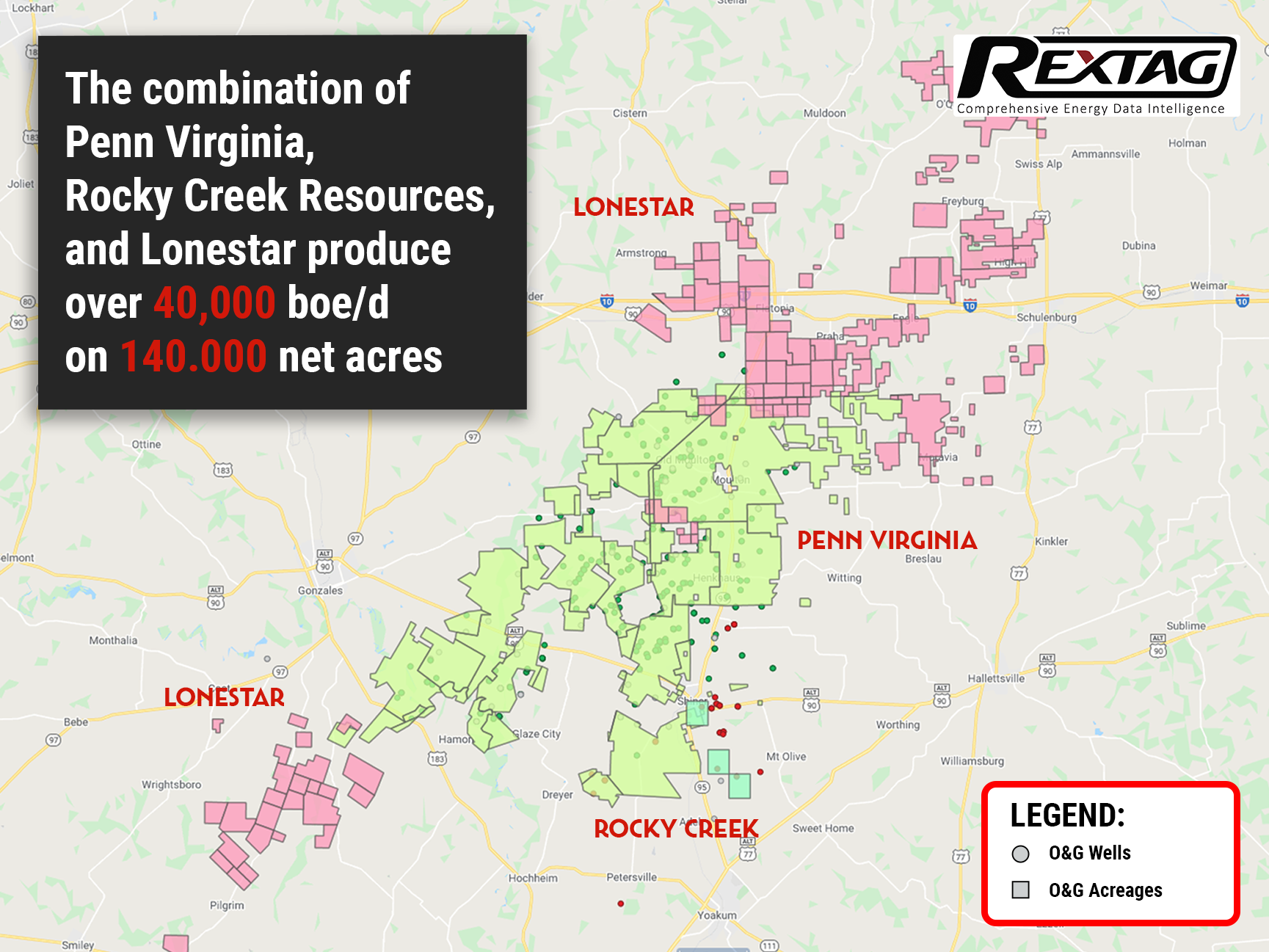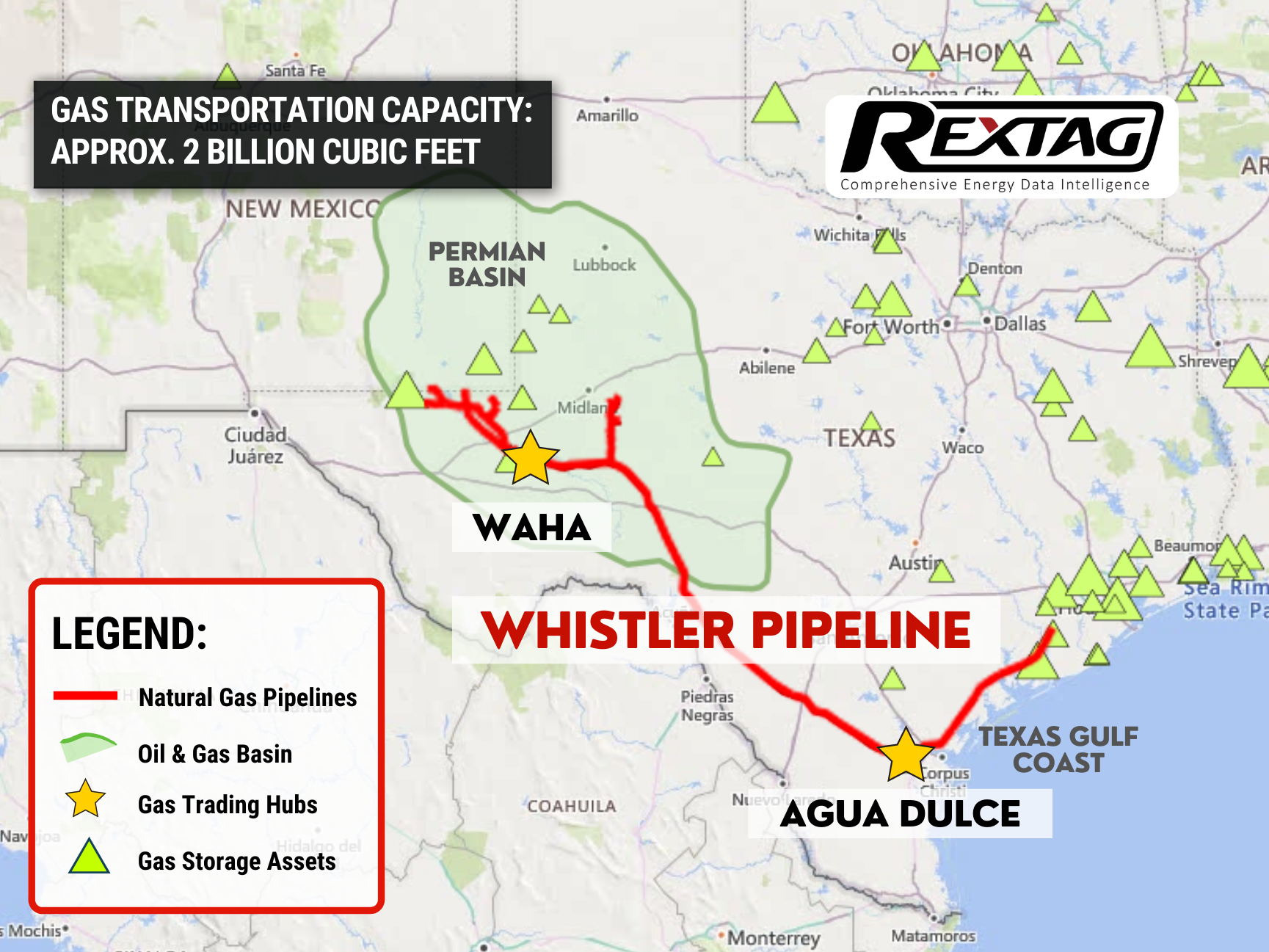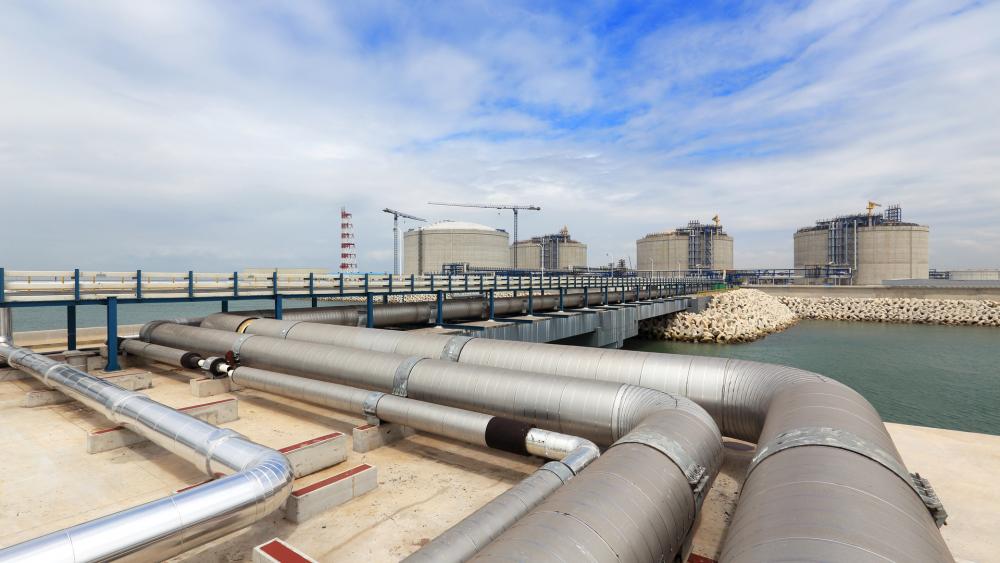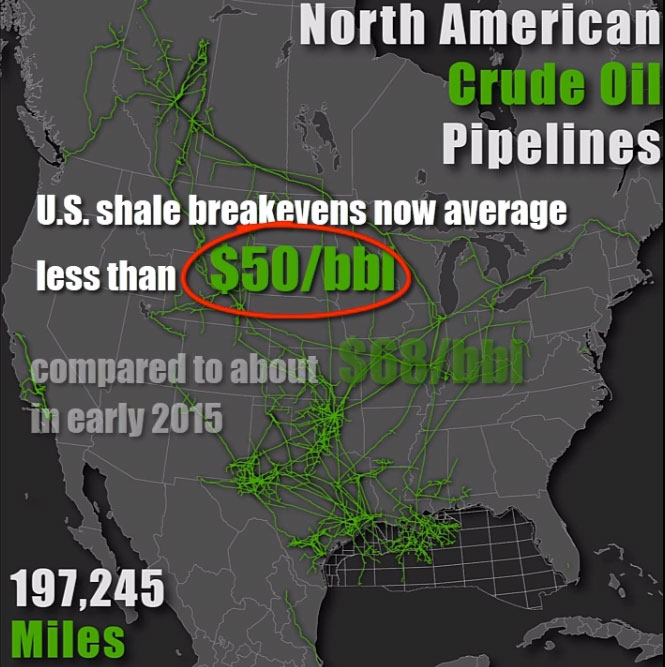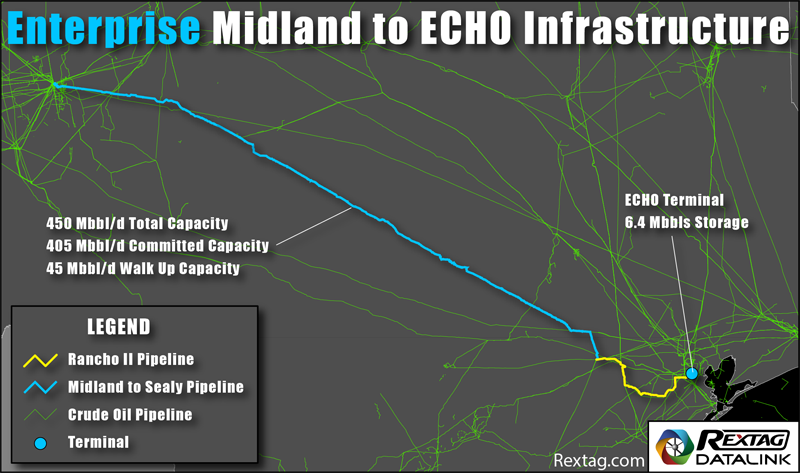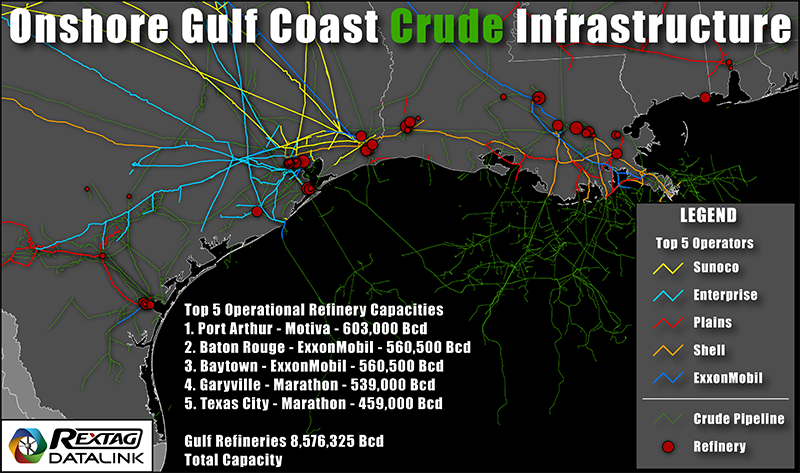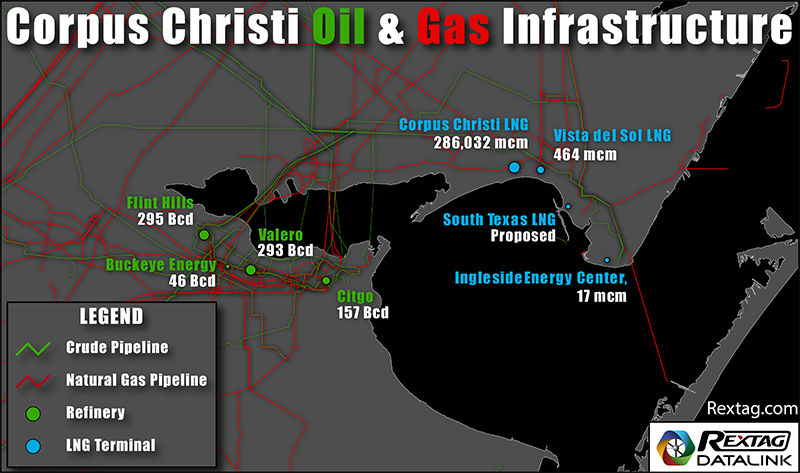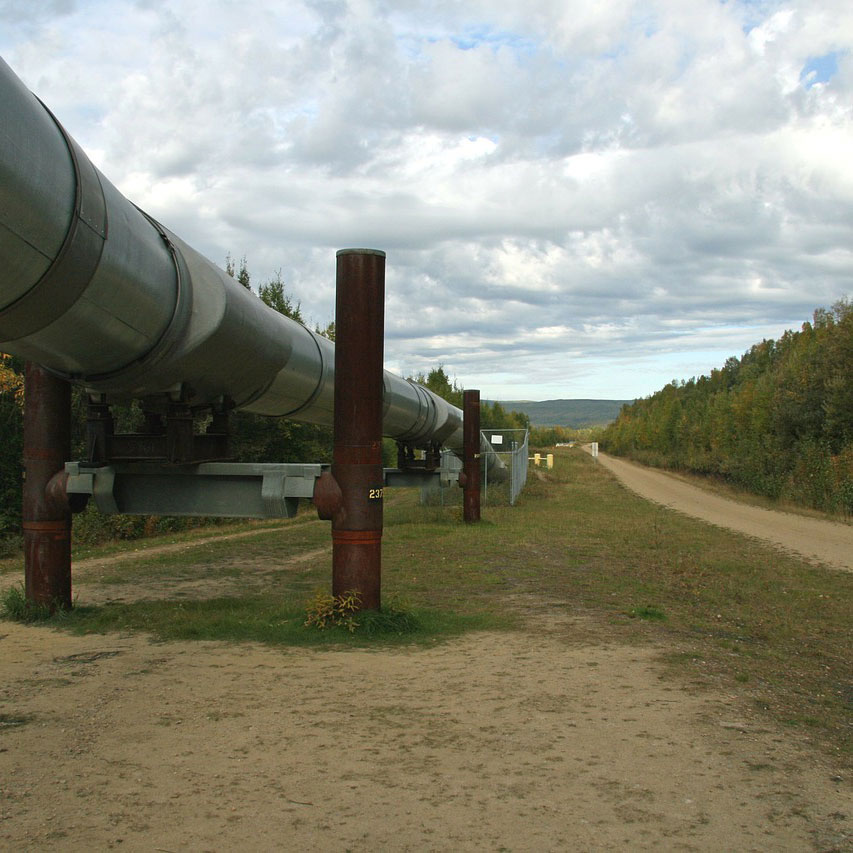Blog
Since days when shale oil and gas technologies were discovered, the U.S. energy industry has been evolving more rapidly than ever before. Many changes are amazing especially when you put them on an industry map. At Rextag not only do we keep you aware of major projects such as pipelines or LNG terminals placed in service. Even less significant news are still important to us, be it new wells drilled or processing plants put to regular maintenance.
Daily improvements often come unnoticed but you can still follow these together with us. Our main input is to “clip it” to the related map: map of crude oil refineries or that of natural gas compressor stations. Where do you get and follow your important industry news? Maybe you are subscribed to your favorite social media feeds or industry journals. Whatever your choice is, you are looking for the story. What happened? Who made it happen? WHY does this matter? (Remember, it is all about ‘What’s in It For Me’ (WIIFM) principle).
How Rextag blog helps? Here we are concerned with looking at things both CLOSELY and FROM A DISTANCE.
"Looking closely" means reflecting where exactly the object is located.
"From a distance" means helping you see a broader picture.
New power plant added in North-East? See exactly what kind of transmission lines approach it and where do they go. Are there other power plants around? GIS data do not come as a mere dot on a map. We collect so many additional data attributes: operator and owner records, physical parameters and production data. Sometimes you will be lucky to grab some specific area maps we share on our blog. Often, there is data behind it as well. Who are top midstream operators in Permian this year? What mileage falls to the share or Kinder Morgan in the San-Juan basin? Do you know? Do you want to know?
All right, then let us see WHERE things happen. Read this blog, capture the energy infrastructure mapped and stay aware with Rextag data!
From Beginnings to a $7.1 Billion Milestone: Deal-Making Histories of Energy Transfer and Crestwood - Complex Review by Rextag
Energy Transfer's unit prices have surged over 13% this year, bolstered by two significant acquisitions. The company spent nearly $1.5 billion on acquiring Lotus Midstream, a deal that will instantly boost its free and distributable cash flow. A recently inked $7.1 billion deal to acquire Crestwood Equity Partners is also set to immediately enhance the company's distributable cash flow per unit. Energy Transfer aims to unlock commercial opportunities and refinance Crestwood's debt, amplifying the deal's value proposition. These strategic acquisitions provide the company additional avenues for expanding its distribution, which already offers a strong yield of 9.2%. Energized by both organic growth and its midstream consolidation efforts, Energy Transfer aims to uplift its payout by 3% to 5% annually.
Murphy Oil Plans to Sell Less Essential Canadian Assets for $112 Million
Murphy Oil has entered into a purchase and sale agreement to sell a section of its Kaybob Duvernay assets and entire Placid Montney assets. A subsidiary of Murphy Oil Corp. has entered into an agreement to sell a "non-core segment" of its operated Kaybob Duvernay assets and its entire non-operated Placid Montney assets to a private company, as stated in the company's earnings report released on August 3rd. The transaction is set to take effect from March 1, 2023, and the closing is expected to be finalized in the third quarter of the same year.
Civitas Makes $4.7B Entry into Permian Basin
Civitas Resources Expands into Denver-Julesburg Basin through $4.7B Cash and Stock Deals for NGP's Tap Rock and Hibernia. Civitas Resources has recently secured two definitive agreements to expand its presence in the Permian Basin's Midland and Delaware basins. The company will achieve this expansion through the acquisition of two private exploration and production companies, namely Hibernia Energy III LLC and Tap Rock Resources LLC. The total value of the deal, paid in both cash and stock, amounts to $4.7 billion. Both Hibernia Energy III LLC and Tap Rock Resources LLC are supported by NGP Energy Capital Management LLC. These acquisitions reflect the increasing demand for oil and gas reserves in the Permian Basin, with companies specializing in the region actively seeking new opportunities. Currently, Civitas Resources' primary production operations are focused in the Denver-Julesburg Basin (D-J Basin).
US Midstream Research 2022 Overview: TOP Providers, Their Assets and Stories
The midstream sector plays a vital role in the oil and gas supply chain, serving as a crucial link. As the energy transition continues, this industry, like the broader sector, encounters various risks. Yet, existing analyses have predominantly concentrated on the risks faced by the upstream and downstream sectors, leaving the fate of the midstream relatively unexplored. In a nutshell, midstream operators differentiate themselves by offering services instead of products, resulting in potentially distinct revenue models compared to extraction and refining businesses. However, they are not immune to the long-term risks associated with the energy transition away from oil and gas. Over time, companies involved in transporting and storing hydrocarbons face the possibility of encountering a combination of reduced volumes, heightened costs, and declining prices.
Chevron Announces Intent to Divest Oil and Gas Properties in New Mexico and Texas
According to Reuters, Chevron has recently made additional assets available for acquisition in both New Mexico and Texas. As part of its strategy to streamline operations following significant shale acquisitions, Chevron is reportedly offering multiple oil and gas properties for sale in New Mexico and Texas. Marketing documents reviewed by Reuters reveal the company's intention to divest these assets. Despite its prominent position as the largest publicly-traded oil and gas producer and property owner with 2.2 million acres in the Permian Basin of West Texas and New Mexico, Chevron has been actively divesting properties in the region. This divestment aligns with Chevron's efforts to optimize its portfolio and focus on its core operations.
Black Bear Roars with Success: Mississippi Gas Gathering Assets Sold
Skye MS LLC purchased a package deal from Black Bear, which included over 120 miles of natural gas pipelines and eight active metered locations. Black Bear Transmission LLC, based in Houston, successfully finalized the sale of gas gathering assets owned by BBT Mississippi LLC (BBT MS) to Skye MS LLC of Columbia, Mississippi. The specific amount of the transaction remains undisclosed. BBT MS is the proud owner and operator of a fee-based, natural gas transmission system that efficiently supplies gas to utility, industrial, and power generation customers. It facilitates the connection of wellhead production in Mississippi to regional long-haul pipelines.
Chord Energy Corp. Expands Williston Basin Footprint with $375 Million Acquisition from Exxon Mobil
Chord Energy Corp.'s subsidiary has entered into an agreement to purchase assets in the Williston Basin from Exxon Mobil, and its affiliates for $375 million. Chord Energy, a US independent company, is strategically expanding its presence in the Williston Basin of Montana and the Dakotas. While industry attention remains fixated on the Permian Basin, Chord Energy recognizes the potential of the Williston Basin and is capitalizing on the opportunity to enhance its reserve portfolio. Chord Energy successfully completed the acquisition of 62,000 acres in the Williston Basin from XTO Energy for a substantial cash consideration of $375 million.
Crescent Energy Boosts Portfolio with Eagle Ford Acquisition: Expands Non-Operated Assets
Big announcement! Crescent Energy is set to bolster its inventory in the play by acquiring operated and working interests from Mesquite Energy. Crescent Energy Co. seals a $600 million cash deal to acquire assets in the Eagle Ford Shale from Mesquite Energy Inc. (formerly Sanchez Energy).
ONEOK Buys Magellan for $18.8 Billion: Overview of the Huge M&A Deal in the Pipeline Industry
In May, ONEOK (OKE) made an announcement regarding its acquisition of Magellan Midstream Partners LP (MMP) for a total value of $18.8 billion, which includes cash and stocks. This move drew attention as it positions ONEOK, primarily known for its involvement in the provision, gathering, and processing of Natural Gas (NG), to become one of the largest pipeline companies in the United States. The acquisition also allows ONEOK to expand its services by including Oil (CL), another significant energy commodity.
Global Oil Supply and Demand Trends Overview: Insights from Rextag
Global oil supply and demand saw notable changes in April 2023. Liquids demand declined by 0.7 MMb/d to 99.9 MMb/d, with gains in China and Europe offset by reduced demand in Japan and the Middle East. OPEC 10 production remained stable at 29.5 MMb/d, while Saudi Arabia increased output by 0.3 MMb/d. Non-OPEC production declined slightly, Russian production dropped further, and US shale production remained steady. Combined production in Iran, Venezuela, and Libya remained unchanged. Commercial inventories increased, and OPEC+ implemented production cuts. Economic sentiment remains uncertain amid rising global inflation.
Revolutionary Merger: ONEOK Set to Unleash $18.8 Billion Acquisition of Magellan Midstream Partners
ONEOK Inc. and Magellan Midstream Partners LP have announced a merger agreement that will result in the formation of a formidable midstream company headquartered in Tulsa, Oklahoma. The deal will bring together their respective assets and expertise, resulting in a powerful entity boasting an extensive network of approximately 25,000 miles of pipelines primarily focused on transporting liquids.
Callon Acquires $1.1 Billion Delaware Assets and Bows Out of Eagle Ford - Here's What You Need to Know
Callon is set to purchase Percussion Petroleum's Delaware assets for $475 million while selling its Eagle Ford assets to Ridgemar for $655 million. In a strategic step to optimize its operations, Callon Petroleum recently made headlines by sealing two deals on May 3, totaling a staggering $1.13 billion. The company is taking confident steps to bolster its presence in the Delaware Basin while bidding farewell to its stake in the Eagle Ford Shale.
Permian Resources Secures a Major Deal in the Thriving Delaware Basin
Permian Resources bolsters dominance in the Delaware Basin with strategic land acquisitions, expanding its portfolio by over 5,000 net leasehold acres and 3,000 royalty acres. In a stunning display of growth and strategic maneuvering, Permian Resources Corp., based in Midland, Texas, has made waves in the first quarter by securing a series of deals worth over $200 million in the highly sought-after Delaware Basin. This move solidifies their position as a player in the region.
Exploring the Energy Lifeline: A Tour of Williston Basin's Midstream Infrastructure
The Williston Basin, which spans parts of North Dakota, Montana, Saskatchewan, and Manitoba, is a major oil-producing region in North America. In order to transport crude oil and natural gas from the wells to refineries and other destinations, a vast pipeline infrastructure has been built in the area. The pipeline infrastructure in the Williston Basin consists of a network of pipelines that connect production sites to processing facilities, storage tanks, and major pipeline hubs
Matador Acquires Additional Land in Delaware from Advance Energy for $1.6 Billion
Matador Resources Co. is making a big move in the oil and gas industry by acquiring Advance Energy Partners Holdings LLC, a major player in the northern Delaware Basin. The acquisition, which comes with a hefty price tag of at least $1.6 billion in cash, includes valuable assets in Lea County, N.M., and Ward County, Texas, as well as key midstream infrastructure.
Breaking Barriers FireBird II, Empowered by Quantum Technology, Surpasses $500MM Funding Milestone for Permian Ventures
Following the success of FireBird Energy's $1.75 billion sale to Diamondback last year, the emergence of FireBird II signals a new chapter in the Permian Basin. Get ready for some exciting news from the energy industry. FireBird Energy II, the new player in the Permian Basin, has just secured $500 million in equity funding to fuel their acquisitions. With backing from the esteemed private equity firm Quantum Energy Partners, FireBird Energy II is poised to make waves in the industry.
Multi-Billion Dollar Deal: Ovintiv to Expand Midland Basin Portfolio with EnCap Acquisition and Exit Bakken
Ovintiv Strikes Billion-Dollar Oil Deal, Doubling Production in Permian Basin with EnCap's Black Swan, PetroLegacy, and Piedra Resources. The deal, which was approved unanimously by Ovintiv's board, is slated to close on June 30. With over $5 billion in transactions announced on April 3, Ovintiv is set to expand its oil production by snatching up 65,000 net acres in the core of the Midland Basin. The deal with EnCap will give them a strategic edge in Martin and Andrews counties, Texas, with approximately 1,050 net, 10,000-ft well locations added to their inventory.
Riley Permian Secures $330 Million Acquisition in Thriving New Mexico: A Strategic Move with Promising Returns
In a big move for Riley Permian, the company has just closed a deal to acquire top-of-the-line oil and gas assets in the heart of New Mexico. The acquisition, which was made in February, saw Riley Permian snapping up these highly sought-after resources from none other than Pecos Oil & Gas LLC for $330 million.
Massive Energy Deal Alert: Energy Transfer to Acquire Lotus Midstream in Permian Basin for $1.45 Billion!
Energy Transfer's recent acquisition of Lotus Midstream's infrastructure for $1.45 billion is a remarkable feat that is bound to shake up the energy industry. This strategic move grants Energy Transfer access to the highly prized Centurion Pipeline, as well as an additional 3,000 miles of crude gathering and transportation pipelines. These pipelines span across the vast Permian Basin of West Texas, stretching all the way from New Mexico and culminating at the bustling energy hub of Cushing, Oklahoma.
Energy Giant Baytex Makes a Bold Move: Snaps Up Ranger Oil in $2.5 Billion Deal
Baytex Energy Group has announced that it will acquire Eagle Ford exploration and production company, Ranger Oil, for approximately $2.5 billion in cash and stock, which includes taking over the company's existing debt. Upon the successful closure of the acquisition, Baytex will have a controlling stake of approximately 63% in the newly merged company, leaving Ranger shareholders with around 37%. This significant move is in line with a trend of substantial mergers and acquisitions in the Eagle Ford area, with Marathon Oil, Devon Energy, and Chesapeake Energy among the companies involved in recent transactions.
Fueling Up for Success: Harvest Midstream, Hilcorp's Affiliate, to Acquire Bakken and Eagle Ford Assets from Paradigm
Harvest Midstream, a Hilcorp affiliate, is set to acquire three midstream gathering systems that serve the Bakken, as well as system located in the Eagle Ford. Harvest, an affiliate of Hilcorp Energy Corp, has entered into an agreement to purchase three Bakken midstream gathering systems and one in the Eagle Ford from Paradigm. Paradigm is set to sell these midstream assets to Harvest in the near future.
Enbridge agreed to acquire the Tres Palacios gas storage facility in Texas for $335 million
Enbridge acquired Tres Palacios natural gas storage facility in Texas for $335 million, adding approximately 35 Bcf of natural gas storage to their portfolio. The facility uses salt caverns for storage and has a gas header pipeline system that spans 62 miles and links to 11 major gas pipelines. Crestwood Equity Partners LP intends to divest its interests in Tres Palacios by the second quarter.
U.S. Natural Gas Pipelines Infrastructure Overview by Rextag
The U.S. natural gas pipeline network is a complex system of pipelines that transport natural gas from production areas to consumers across the country. The pipeline network consists of three main types of pipelines: gathering pipelines, transmission pipelines, and distribution pipelines. Gathering pipelines are small-diameter pipelines that transport natural gas from production wells to processing facilities or larger transmission pipelines. Transmission pipelines are large-diameter pipelines that transport natural gas over long distances, sometimes across multiple states. Distribution pipelines operate at low pressure and are located in or near urban areas. They are often referred to as "utility pipelines" because they are typically owned and operated by local gas utility companies.
Chesapeake Divests More Eagle Ford Assets; 172,000 n.a. and 2K+ Wells Sold to INEOS For $1.4 billion
Chesapeake Energy Corp. has announced that it will receive $1.4 billion from INEOS Energy for the sale of its remaining Eagle Ford asset, just a month after selling its Brazos Valley assets for a similar amount. This brings the total value of Chesapeake's Eagle Ford assets to over $2.82 billion. The Oklahoma City-based company will continue to market its other Eagle Ford assets.
Vital (Formerly Laredo) Expands in Midland, Purchases Acreage From Driftwood Energy
Vital Energy Inc. has made a significant acquisition, purchasing 11,200 net acres in Upton and Reagan counties, Texas. The deal, which involved a combination of cash and stock, was worth almost $214 million. This move comes shortly after the company's rebranding from Laredo Petroleum just one month ago.
Permian O&G Basin 2022 Review
The Permian Basin is one of the most important oil and gas basins in the world, located in western Texas and southeastern New Mexico in the United States. Oil drilling and production in the Permian Basin began in the early 1920s. The first significant discovery in the region was made in 1923 in the Westbrook field in Mitchell County, Texas. This discovery led to a boom in oil exploration and production in the area. By the 1930s, the Permian Basin had become one of the major oil-producing regions in the United States, and it continued to grow in importance throughout the 20th century.
Streamlining ESG Management in Oil & Gas: Simplify Compliance with the Latest Standards
To effectively manage ESG issues in O&G companies, a comprehensive approach is required, addressing multiple managerial issues. First, ESG considerations must be integrated into the corporate strategy, setting goals that align with business objectives, reflected in budgeting, capital allocation, and risk management. Accurate and efficient collection, management, and reporting of ESG data is necessary for identifying relevant metrics and indicators, such as greenhouse gas emissions, water consumption, and social impact indicators.
Exploring ESG in Upstream Operations: Examining Achievements, Obstacles, and Emerging Patterns
ESG considerations are becoming increasingly essential for companies operating in the upstream sector. Failure to address ESG concerns may result in financial and reputational risks, given the growing focus from investors, regulators, and other stakeholders. Companies must prioritize ESG performance and engage with stakeholders to address concerns and mitigate risks. By doing so, they can improve their reputation, attract investment, and contribute to a more sustainable future
Arena Energy Makes a Deal with Cox in GoM, Adding ca. 1,000 net boe/d to Arena's Total Production
On January 24 Independent E&P Arena Energy LLC acquired Cox Operating LLC's interests in the Eugene Island 330 and South Marsh 128 oil blocks. Cox Operating, based in Dallas, Texas, includes interests to Arena's existing ownership interest in the Gulf of Mexico fields, which it purchased from GOM Shelf LLC.
A&Ds in O&G forecast for 2023, trends and factors that influence this
“Our view is in 2023 M&A picks up. There was some this 2022 year, but again, it was such a funky, weird macro world. We expect fewer surprises in 2023.” — Dan Pickering, Pickering Energy Partners. Modern companies in the world operate in a rapidly changing external environment, so the process of reorganization is one of the basic tools for solving the problem of adapting companies to new conditions. Recently, the number of Acquisitions and Divestitures in the oil and gas industry has been growing rapidly, i.e. it can be said that the market for these deals is dynamically developing.
2022 A&Ds in O&G Summary and Trends for the past 4 years
More than 60% of all A&D deals by value are in US oil and gas companies. Despite their leading market position, U.S. fields are developing unevenly, and investors are quite cautious about investing in them at this stage. The top 5 oil & gas industry A&D deals in 2022 were concluded by Omega Acquisition, Tokyo Gas, Diamondback Energy, Suncor Energy, and IMM Private Equity. The main motives of oil and gas companies to carry out A&D transactions can be considered the achievement of the synergy effect, and the presence of fundamental shocks in the market.
ESG - what are the criteria O&G companies should meet?
Most companies have plans in place to identify and manage the normal operational risks of enterprise asset management (EAM). But, it is equally important to consider the potential emergence of ESG risks that a company may face. While predicting events such as hurricanes, pandemics, and regulatory violations is difficult, preparing for or mitigating the impact can avoid potentially devastating effects on an asset-rich organization, as well as its employees and shareholders. As a reminder, ESG investing looks at three elements: environmental (E), social (S), and governance (G) issues, with stakeholders looking not only at the financial parameters of a transaction but also the non-financial parameters. For example, oil and gas companies should develop plans to restore power lines or pipelines after an earthquake or other natural disaster. These plans should describe procedures for how employees will access remote sites, which assets will be prioritized, what additional equipment will be needed, and how it will be obtained.
Blockchain as a technology for smart contracts in O&G
The oil and gas industry has long relied on the recommendations of trusted experts to make key supply chain decisions. The growing popularity of Blockchain technology could significantly disrupt these relationships by providing an unbiased methodology for sourcing, tracking, and executing transactions on behalf of customers with transparent data sets across supply chain endpoints. Blockchain technology has already been used by many global companies in the last two years in various areas such as IoT (Internet of Things), smart contracts, and cryptocurrencies. It has enabled businesses to benefit from the inherent trust and transparency of the technology.
Mascot Project Acquisition: NOG says Midland Basin Deal Is Completed
On January 5 Northern Oil & Gas (NOG) concluded a deal to acquire working interests in Midland-Petro D.C. Partners LLC (MPDC)'s Mascot Project in the Midland Basin, according to a January 9 press release. Firstly estimated at $330 million in cash, the deal was signed with an additional 3.25% working interest added to the 36.7% agreed upon when the transaction was announced on October 19. NOG paid $29 million more for the additional interests, which now totalled 39.958%. Finally, the deal closed for $320 million in cash and $43 million in debt at signing in October with the finance of Minnetonka, Minn.-based NOG with cash on hand, operating free cash flow, and assistance from its revolving credit facility.
Talos Energy Plans to Close the EnVen Acquisition Soon: Stockholders to vote on $1.1B Deal on February 8
Talos Energy Inc. is closing its $1.1 billion purchase of private operator EnVen Energy. A special meeting for Talos’ stockholders to vote on the deal and other matters is set on February 8, according to a prospectus filed on January 11 with the Securities and Exchange Commission. Shareholders are being asked to approve the EnVen merger, which as the company considered in September would raise its Gulf of Mexico production up to 40%. According to a January 11 press release, Talos asserted that it anticipates closing the transaction soon after the meeting. Talos Energy Inc. supposes that adding EnVen would double its operated deepwater facility footprint, extending key infrastructure in existing Talos operating areas. More than 80% of the combined assets will be deepwater, with the company operating more than 75% of the acreage it holds interests in. Talos is one of the largest independent operators in the U.S. Gulf of Mexico, with production operations, prospects, leases, and seismic databases spanning the basin in both Deep Water and Shallow Water. The company aims to actively grow through a balanced focus on asset optimization, development, and exploration while also seeking to add to its portfolio through acquisitions and business development.
NOG Grows Its Acreage Position in Delaware
According to the company’s press release on December 19, Northern Oil and Gas Inc. (NOG) closed its announced deal with a private seller of non-operated interests in the Northern Delaware Basin for $131.6 million in cash. The acquisition was announced with a $13 million deposit in October and is the third Permian Basin acquisition since August, adding to NOG’s $400 million of Permian Basin acquisitions in 2022. The assets of 2,100 net acres are primarily operated by a private company Mewbourne Oil Co., with production anticipated to total almost 2,500 boe/d in 2023. Also, Coterra Energy Inc. and Permian Resource Corp. are operators of the assets. The assets contain high-quality, low breakeven development that is leveraged to some of NOG’s top operating partners, as our investors have come to expect.
Ensign’s Assets Are Acquired by Marathon for $3 Billion
Marathon Oil Corp. closes the acquisition of Ensign Natural Resources’ Eagle Ford assets for $3 billion cash, according to the company’s release on December 27. The purchase includes 130,000 net acres (99% operated, 97% working interest) in acreage adjacent to Marathon Oil’s existing Eagle Ford position. Ensign’s estimated fourth-quarter production will average 67,000 net boe/d, including 22,000 net bbl/d of oil.
NOG Acquires Working Interest in the Mascot Project, Midland Basin
Northern Oil and Gas Inc. (NOG) made a $330 million purchase in the Permian Basin, according to the release on October 19. NOG revealed an agreement to purchase a 36.7% working interest in the Mascot Project from Midland-Petro D.C. Partners LLC (MDPC). The acquisition will be funded with cash on hand, operating free cash flow, and borrowings. The Mascot Project is operated by Permian Deep Rock Oil Co., an affiliate of MPDC, which is a David H. Arrington-owned business based in Midland, Texas. NOG anticipates that the production from the acquired properties to average almost 4,400 boe/d in the first quarter of 2023 and 6,450 boe/d for the full-year 2023 (2-stream, about 80% oil).
Talos Energy Buys EnVen for $1.1 Billion to Expand
Talos Energy Inc. is acquiring EnVen Energy Corp. for $1.1 billion to raise Talos’ Gulf of Mexico production by 40%. The purchase of EnVen, a private operator, increases Talos' operated deepwater facility footprint 2 times, expanding key infrastructure in existing Talos operating areas. Almost 80% of the assets will be deepwater, with Talos operating more than 75% of the acreage it holds interests in. During a conference call on September 22, it was announced that the EnVen purchase “just checks a lot of boxes” in terms of scale, assets, similar strategies, and what Talos is doing from a technology standpoint. EnVen holds 78 MMboe of 2P reserves and 420,000 gross acres in the Gulf of Mexico. The deal also includes about 24,000 boe/d to Talos’ production stream. Consideration for the transaction consists of 43.8 million Talos shares and $212.5 million in cash, plus the assumption of EnVen's net debt upon closing, currently valued to be $50 million at year-end 2022.
EIG Buys 25% of Repsol’s Oil and Gas Unit for $4.8 Billion
Spanish energy group Repsol is putting a 25% stake in its oil and gas exploration division on the market. U.S. fund EIG purchases it for $4.8 billion and builds up a war chest for renewables projects due to the transition of the energy industry to a lower-carbon future. As Reuters reported earlier this year, the deal values the whole business at $19 billion including debt, and may conduct a U.S. stock market listing of a stake in the unit after 2026, according to Repsol’s statement. The process commenced with an unsolicited offer from EIG, Reuters said in June, increasing Repsol's shares to a 14-year high. Moreover, shares grew up after an announcement on September 7 before declining 1.8% by 7:46 GMT. Nevertheless, they outperformed the European oil and gas index, which was down 2.3%.
$5 Billion Returns for ConocoPhillips’ Shareholders as Prices Grow
Shareholder’s payout target was increased by 50% after the largest U.S. independent oil producer surpassed Wall Street’s earnings estimates on growing energy prices, said Houston-based Conoco Phillips Co. on Aug. 4. Due to Western sanctions on major producer Russia throttling energy supply amid a rebound in demand from pandemic lows, oil and gas #prices have soared. Crude has been trading more than 25% higher since the start of the year and results also benefited from high natural gas prices. Meanwhile, shares were down a fraction, to $91.03, in early trading but are up about 26% year to date. Conoco Phillips stated, that the average price obtained for a barrel of oil and gas accelerated 77% from a year earlier to $88.57. The company acknowledges that it has not hedged any of its oil and gas sales to make the most of higher market prices. The capacity of 1.69 million boe/d was in line with Wall Street estimates, however, the company expected the current quarter’s output would be between 1.71 million and 1.76 million boe/d.
Earthstone Expands Due to Acquisition of Titus’ Delaware
Earthstone Energy Inc., based in Texas, announced the transaction on June 28: the acquisition of Titus Oil&Gas which will raise production in the Delaware Basin by 26%. The $627 million acquisition fills the Permian Basin in Eddy and Lea counties, N.M. with 86 net locations on 7,900 net acres of leasehold, while it is not clear how much of the leasehold might be on federal acreage It is Earthstone’s seventh acquisition since 2021, a span that includes the closing of approximately $1.89 billion in acquisitions in the Permian Basin. The purchase of Titus Oil & Gas Production LLC and Titus Oil & Gas Production II LLC, privately held companies backed by NGP Energy Capital Management LLC, is estimated at $575 million in cash and it is the equivalent of $52 million in stock (3.9 million shares of its Class A common stock based on the June 24 closing price). Titus shared that its net production in June was 31,800 boe/d. The company had reserves of approximately 28.9 MMboe. Earthstone is sure its net production will increase, at the midpoint, by 20,500 boe/d (65% oil) in the fourth quarter.
Targa Resources: $3.55 Billion Cash Transaction to Acquire Lucid Energy
On June 16 Targa Resources Corp. decided to acquire Lucid Energy Group, located in the Permian Basin, which is a part of Riverstone Holdings LLC and Goldman Sachs Asset Management. Firstly, Targa enlarged due to the recent “blot-on” acquisition of Southcross Energy in the Eagle Ford for $200 million and it will become bigger thanks to the $3.55 billion cash transaction. Targa’s financial position allowed it to utilize convenient opportunities to extend its company so it bought #Lucid using available cash and debt with an estimated pro forma year-end 2022 leverage around 3.5 times. According to Targa’s estimates, the acquisition of Lucid will increase the number of natural gas pipelines by 1,050 miles and add about 1.4 Bcf/d of cryogenic natural gas processing capacity in service or under construction located mainly in Eddy and Lea counties of New Mexico. The investment-grade producers source approximately 70% of current system volumes. According to the press release, a full-year standalone adjusted EBITDA is expected to be between $2.675 billion and $2.775 billion and reported year-end leverage ratio of about 2.7 times. Targa’s updated financial expectations assume NGL composite prices average $1.05 per gallon, crude oil prices average $100/bbl, and Waha natural gas prices average $6 per MMBtu for the remainder of 2022.
Mutually Profitable Transaction for CA$600 Million Between BP and Cenovus
BPPlc agreed on June 13 to exit the Canadian oil sands in an asset swap with Cenovus Energy Inc. potentially worth up to CA$1.2 billion. 50% non-operated interest in the #SunriseOilSands project will be sold by BP in an agreement reached with Cenovus Energy, a company based in Alberta. Two companies agreed on the following conditions: total consideration for the transaction includes CA$600 million in cash, additionally, a contingent payment with a maximum aggregate value of CA$600 million expiring after two years, and concerning Cenovus, it will have a 35% position in the undeveloped Bay du Nord project offshore Newfoundland and Labrador. Current production from the Sunrise Oil Sands asset is about 50,000 bbl/d and the company anticipates achieving a nameplate capacity of 60,000 bbls/d through a multi-year development program.
$7 Billion Merger of Colgate and Centennial, the 2 Largest Permian Operators
Despite the circulating rumors concerning Colgate’s attempt to launch an IPO, on May 19 the company decided to combine with Centennial Resource Development Inc. This merger of equals is estimated at $7 billion and will found the biggest pure-play E&P company in the Delaware Basin of the Permian. The transformative combination essentially enlarges companies’ potential and hastens the growth across all financial and operating metrics. According to Centennial CEO Sean Smith, the combined company is anticipated to furnish shareholders with quickened capital return program due to a fixed dividend coupled with a share repurchase plan. Due to a recent report, the merger would increase production 7%, to 145,000 boe/d by the fourth quarter would further ratchet up next year. By third-quarter 2023, the company predicted 160,000 boe/d based on a drilling program of 140 wells per year. Colgate Energy was reported to be getting an IPO last December that sources said would value the company at approximately $4 billion. The combined company will have over 15-years of drilling inventory, assuming its current drilling pace, the companies will produce over $1 billion of free cash flow in 2023 at current strip prices.
Staying on Top of Drilling Activity Trends in the Permian Basin
Oil output in the Permian Basin in Texas and New Mexico is supposed to go up 88,000 bbl/d to a record 5.219 million bbl/d in June, as the U.S. Energy Information Administration (EIA) announced in its report on May 16. Additionally, gas productivity in the Permian Basin and the Haynesville in Texas, Louisiana and Arkansas will rise to record highs of 20 Bcf/d and 15.1 Bcf/d in June, respectively. Given that this growth has been expected, recent global market changes make forecasting the output even more challenging. Learning how production will change is easier with early activity tracking, a new service recently launched by Rextag – Pad Activity Monitor. With the help of PAM, you are able to monitor well pad clearing, drilling operations, fracking crew deployment and completions with new data collected approximately every 2 days. Additionally, it cuts down activity reporting lag times by at least 98%, from 120-180 days down to just 5-8 days. In order to access reports, charts, tables, and mapping visualizations via Rextag’s Energy DataLink use a web-based application allowing users to filter, download and identify activity on a map or data table. Moreover, customers will be able to set up daily, weekly, and monthly email report notifications.
EIA: Permian Basin Oil and Gas Output is Thought to Beat Record in June
The EIA forecasts that total output in the main U.S. shale oil basins will increase 142,000 bbl/d to 8.761 million bbl/d in June, the most since March 2020. Oil productivity in the Permian Basin in Texas and New Mexico is supposed to go up 88,000 bbl/d to a record 5.219 million bbl/d in June, as the U.S. Energy Information Administration (EIA) announced in its report on May 16. In the largest shale gas basin, the productivity in Appalachia in Pennsylvania, Ohio and West Virginia will grow up to 35.7 Bcf/d in June, its highest since beating a record 36 Bcf/d in December 2021. Gas output in the Permian Basin and the Haynesville in Texas, Louisiana and Arkansas will rise to record highs of 20 Bcf/d and 15.1 Bcf/d in June, respectively. Speaking of the Permian future output, putting hands on upcoming changes in production has recently been made easier with the new Rextag's service - Pad Activity Monitor. Thanks to satellite imagery and artificial intelligence, customers are able to monitor the oil and gas wells and are provided with near real-time activity reports related to drilling operations. However, it is noticed that productivity in the largest oil and gas basins has decreased every month since setting records of new oil well production per rig of 1,544 bbl/d in December 2020 in the Permian Basin, and new gas well production per rig of 33.3 MMcf/d in March 2021 in Appalachia.
Persistent Production Uptick in the Permian Basin
No sooner had the crude prices soared above $100/bbl than the industry professionals believed in an incredible growth of drilling activity in North America’s largest shale patch. Analysts speculate that additional output of 500,000 barrels of oil daily would become a significant part (4%) of overall U.S. daily production. That is going to flatter oil and gasoline prices. Drilling permits in the Permian Basin are persistently growing, averaging approximately 210 at the beginning of April. Moreover, the permits trend is noticed as an all-time high as a total of 904 horizontal drilling permits were awarded last month. Nowadays, learning and analysing the current situation and predicting the future development become easier with early activity tracking, a new service recently launched by Rextag. Rextag's Pad Activity monitor (PAM) allows you to see well pad clearing, drilling operations, fracking crew deployment and completions with new data collected approximately every 2 days with the help of satellite imagery and artificial intelligence. While the increase in drilling will result in higher production, U.S. shale producers will have to overcome several hurdles including labor shortages and supply constraints.
7th week of Oil and Gas Rigs’ Growth
In the midst of the high prices and the U.S. government’s pushing, in the last week, the number of oil rigs increased by 5 and in total makes 557, its highest since April 2020, according to Baker Hughes Co BKR.N. Concerning the gas rigs, they gained 2 to 146, their highest since September 2019. Moreover, crude production was aimed to rise from 11.2 million barrels per day (bpd) in 2021 to 12.0 million bpd in 2022 and 13.0 million bpd in 2023, according to federal energy data. Given that this growth has been expected, recent global market changes make forecasting the output even more challenging. Learning how production will change is easier with early activity tracking, a new service recently launched by Rextag’s Pad Activity monitor (PAM). The overall amount of rigs in the U.S. would grow to an average of 684 in 2022 and 783 in 2023, due to U.S. investment bank Piper Sandler forecast. As Baker Hughes claimed that compares with an average of 478 in 2021.
Crude Pipelines Infrastructure Developing at Enbridge Ingleside Energy Center
The joint project to improve and market a low-carbon hydrogen and ammonia production and export facility was presented on May, 6 by Enbridge Inc. and Humble Midstream LLC. Deployment of the facility is taken under the Enbridge Ingleside Energy Center (EIEC) basis close by Corpus Christi. Being the premier export facility on the U.S. Gulf Coast, the EIEC plays a vital role in world energy security and sustainability. Companies plan to develop a utility-scale efficiently low carbon production facility, able to combine both low-carbon hydrogen and ammonia to meet the growing global and domestic demand. It is expected to sequester up to 95% of CO2 generated in the production process in carbon capture facilities, especially ones owned and operated by Enbridge which makes this process a fully integrated low-carbon solution.
Merger of Equals: Whiting and Oasis $6B Deal
The two Bakken shale producers announced in a joint statement on March 7 that they had reached an agreement to unite in a $6 billion "merger of equals." Combining these two companies will create a leading Williston Basin position with assets covering approximately 972,000 net acres, production of 167,800 boe/d, and an enhanced free cash flow generation that will generate capital returns to shareholders. A historic collapse in oil prices prompted both Whiting and Oasis oil companies to file for Chapter 11 bankruptcy protection in 2020. Thus, the merger can be viewed as a preventive measure to avoid going out of business.
$690 Million Deal Moves Ahead: Crescent Energy to Complete Purchase of EP Energy's Uinta Assets
Crescent Energy closed the acquisition of Uinta Basin assets in Utah that were previously owned by EP Energy for $690 million, a few hundred million dollars below the original price. The accretive deal increases Crescent's Rockies position and adds significant cash flow and a portfolio of high-quality oil-weighted undeveloped sites. In addition to its acquired Uinta assets, Crescent's pro forma year-end 2021 provided reserves totaled 598 million boe, of which 83% was developed, 55% was liquid, and its provided PV-10 was $6.2 billion.
To Be or Not To Be: Bakken Assets Could Fetch $5 Billion for Exxon Mobil
Exxon Mobil Corp. is weighing prospects of selling its assets in North Dakota’s Bakken, after gauging interest from potential buyers — 5 billion is the issue price, at least according to rumors. The price point came about after the news that the oilgiant is in the final round of hiring bankers to help launch the sale. Yet Exxon Mobil itself stays tight-lipped regarding the situation.
As Countries Shun Russian Crude, Canada Plans to Boost Its Oil Exports
Canada is looking at ways to increase pipeline utilization to boost crude exports as Europe seeks to reduce its reliance on Russian oil At the moment, oil exports from Canada to the U.S. are approximately 4 million barrels of oil per day, with a portion reexported to other countries. At the end of 2021 Canadian oil companies exported a record amount of crude from the U.S. Gulf Coast, mostly to big importers India, China, and South Korea. And this will only increase in the future.
Winds of Change: Admiral Sold Its Assets in Delaware Basin
And Petro-Hunt E&P is the new sheriff in town with 21,430 net acres of leasehold in the Basin, production of which surpasses 7,000 bbl/d and 100 MMcf/d respectively. To take advantage of it, Petro-Hunt plans to begin an active development drilling program on these assets in the coming months heavily upgrading the numbers of its 775 operating oil wells and contributing to over 8,100 non-operated wells. Time will tell, however, whether or not this move will be able to deliver such results.
Lime Rock Resources Starts the Year With a Bang — a Money Bang!
Still waters run deep: after patiently waiting for 2 years, Lime Rock Resources starts the year with a pair of acquisitions worth $358.5 million The two acquisitions include Abraxas Petroleum’s Williston Basin position in North Dakota: about 3,500 acres of land and 19,400 boed of net production, as well as properties situated in Burleson, Milam, and Robertson in Texas from a third party, that contain 46,000 contiguous net acres and produce 7,700 boed as of the closing of the deal. The company intends to intensify its focus on low-risk opportunities and margins, which will significantly boost Lime’s market position going further.
Continental Resources Raises Dividends Following a Quarter of Profit
The future of shale is looking bright: economic recovery and a spike in travel lifted oil prices to multi-year highs, helping Continental Resources to a fourth-quarter profit that exceeded Wall Street expectations. Coming off such a high note, the company plans to increase its dividend rates by 15% to 23 cents per share!
Colgate Energy's owners are planning to go public
Colgate Energy is planning to float its shale oil producer in the Permian's Delaware Basin on the stock market. If successful, this IPO would be the first major U.S. oil producer offering since Jagged Peak Energy's IPO in January 2017. Looks like investors’ confidence in the sector is returning as U.S. crude prices hit their highest in seven years late last year S&P energy index delivered roughly twice the return of the S&P 500 in 2021.
Delays Are Finally Over: Enbridge Reports Strong Third Quarter 2021
Enbridge Inc. finally delivered on several of its long-overdue promises, including the $4 billion Line3 Replacement project. Which consisted of replacing an existing 34-inch pipe with a new 36-inch one for 13 miles in North Dakota, 337 miles in Minnesota, and 14 miles in Wisconsin. Midstream companies, in general, had a stunning Q3. It was the first quarter in two years that no midstream index members cut their dividends.
Expansion Is The Goal: Ironwood II Completes Asset Merger And Assumes Management of Nuevo Midstream Dos’ Eagle Ford Assets
Ironwood Midstream expanded its operations in the Eagle Ford region through its merger with Nuevo Midstream. Thanks to this, Ironwood II has increased its crude oil and natural gas throughput capacities in the famous shale to approximately 400,000 bbl/d and 410 MMcf/d, respectively. With 390 miles of pipelines, the company manages 245,000 acres of dedicated land.
Non-core Permian assets to be sold for $160 million by Diamondback Energy in a massive Drop-Down Transaction
Diamondback Energy is willing to sell some of its Permian Water Assets in order to reduce debt and ensure a steady oil supply through the end of the year. The brokered deal will bring the company some $160 million in cash. Consolidation seems to be the trend in the industry, but for how long?
Restructuration is in a full-speed: Comstock to sell Bakken for $154 million
Comstock Resources decided to go through with asset divestment, selling its Bakken Shale actives for $150M to Northern Oil and Gas. The proceeds from these sales will be reinvested by Comstock Resources Inc. into the Haynesville Shale, at which point the company may acquire additional leasehold and fund drilling activities starting in 2022. Meanwhile, Northern clearly gunning for the pack leading position in the Texas shale play, but whether they succeed or not is remains to be seen.
There is a new guy on the block: Penn Virginia rebrands to Ranger Oil
Penn Virginia announced a rebranding to Ranger Oil on 6 Oct. following the close of the Lonestar acquisition. This Texas oil & gas giant reinvents itself anew, shifting its energy development in the lone star state towards safer and more efficient oil and gas operations. The company's consolidated assets now amount to over 140,000 net acres strategically positioned in the Eagle Ford play of south Texas, making it one of the biggest players. It is anticipated that the full rebranding will be complete by the year-end of 2021. For the full rundown of the situation visit our blog.
The growth of the U.S. oil and gas industry in 2022 will come from smaller companies and private businesses
Forecast: Bank of America expects to see a major bump in US crude oil production in 2022. Such growth from a non OPEC member will impact world oil market balances in times of tight supplies. Still, crude prices should hold well above $70/bbl next year and could, potentially, jump as high as $100/bbl. By 2022, oil output is expected to grow by 800,000 bbl/d, and more than half of that growth will come from #privately-held producers. For a more in-depth analysis of the forecast check out our blog.
A major U.S. shale oil producer is looking to start a land selloff in the lone star state
Pioneer Natural resources is looking to divest properties in the lone star state. According to Rextag, Pioneer’s Delaware assets on sale have a trailing 12 month production of just over 22 MBOE against a total Permian Basin production of almost 212 MBOE. (The sale, if it happens, will effectively lead to a 10% decrease of Pioneer’s asset base in terms of the previous year's production.)

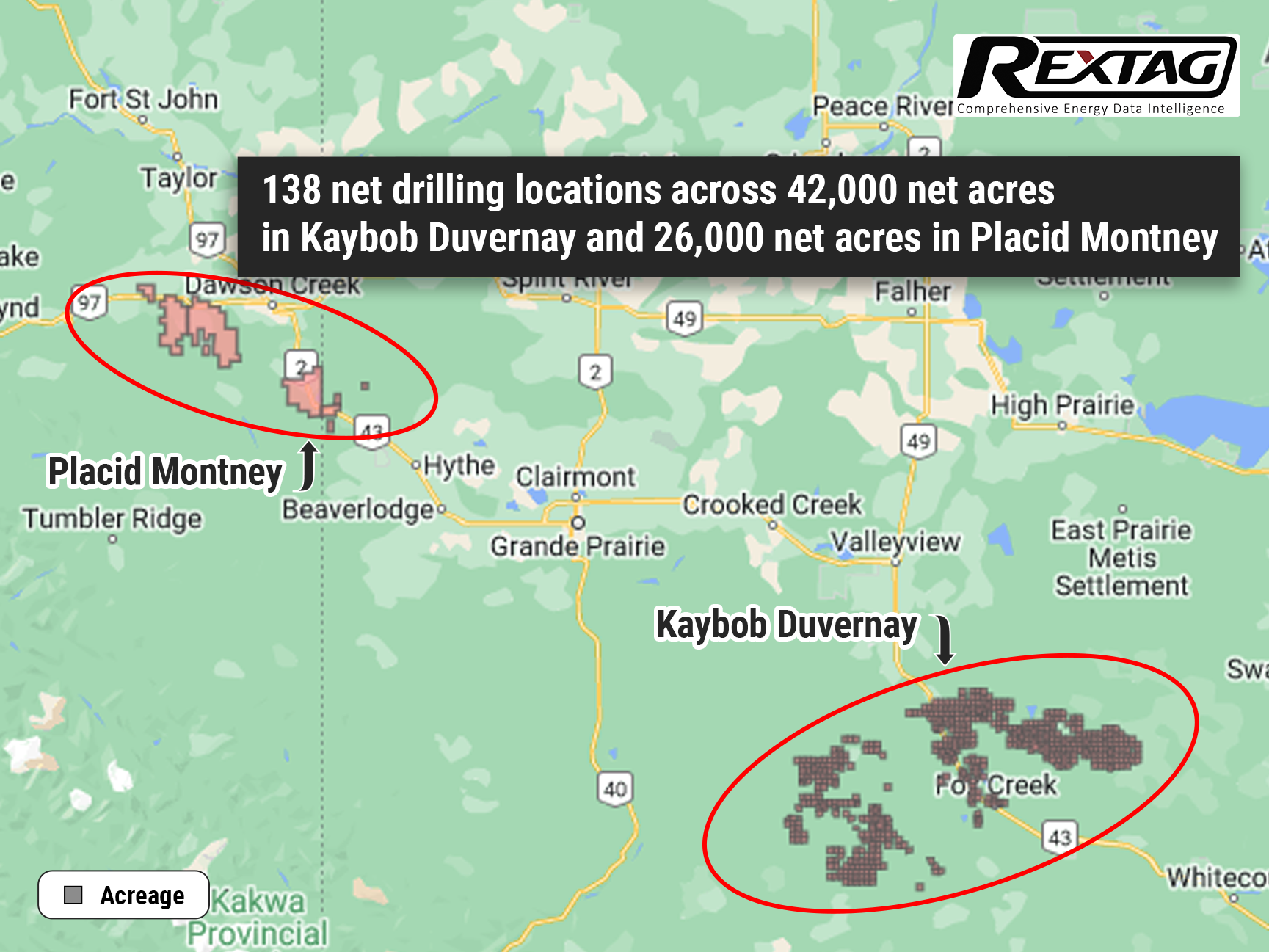
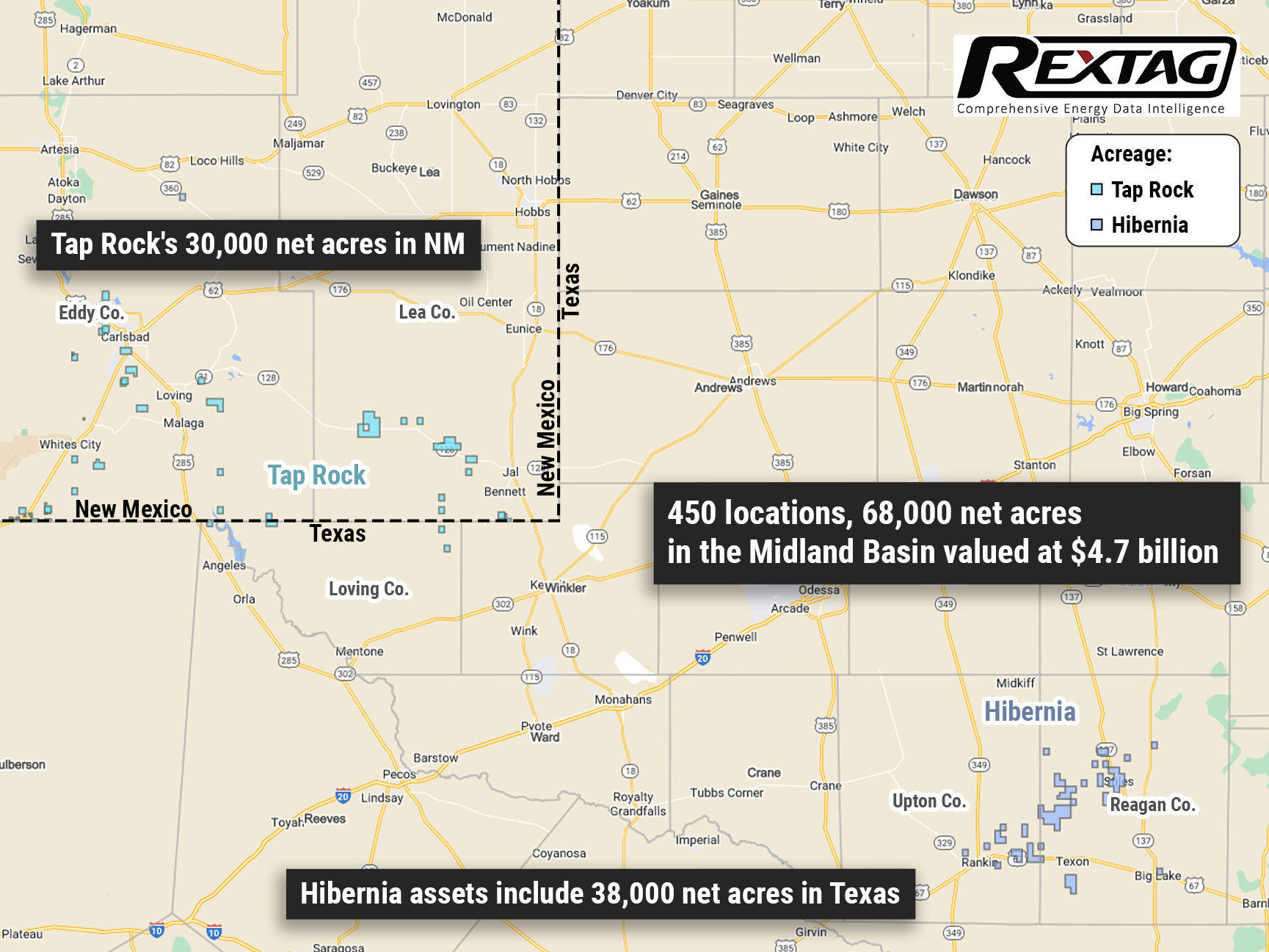

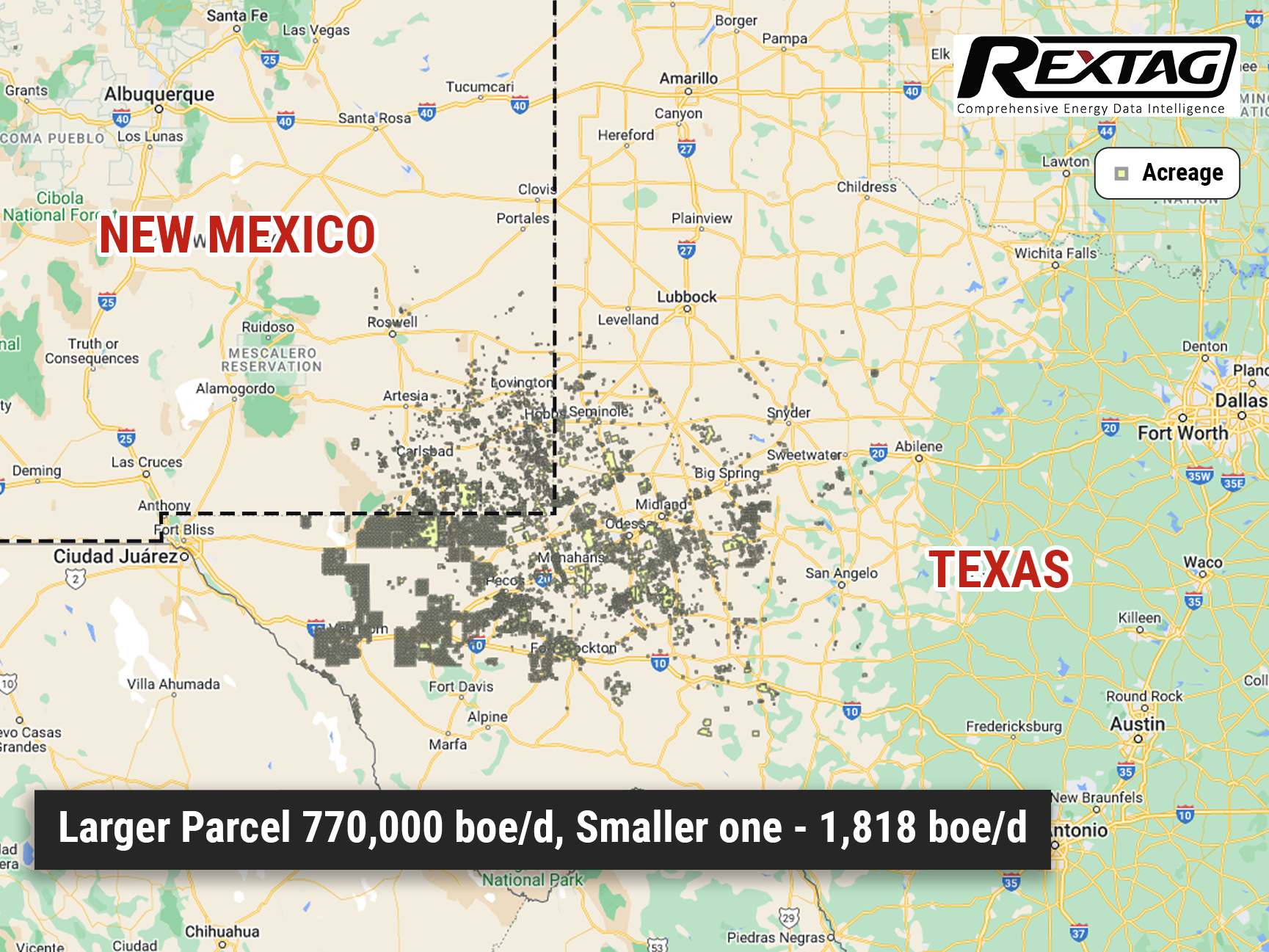
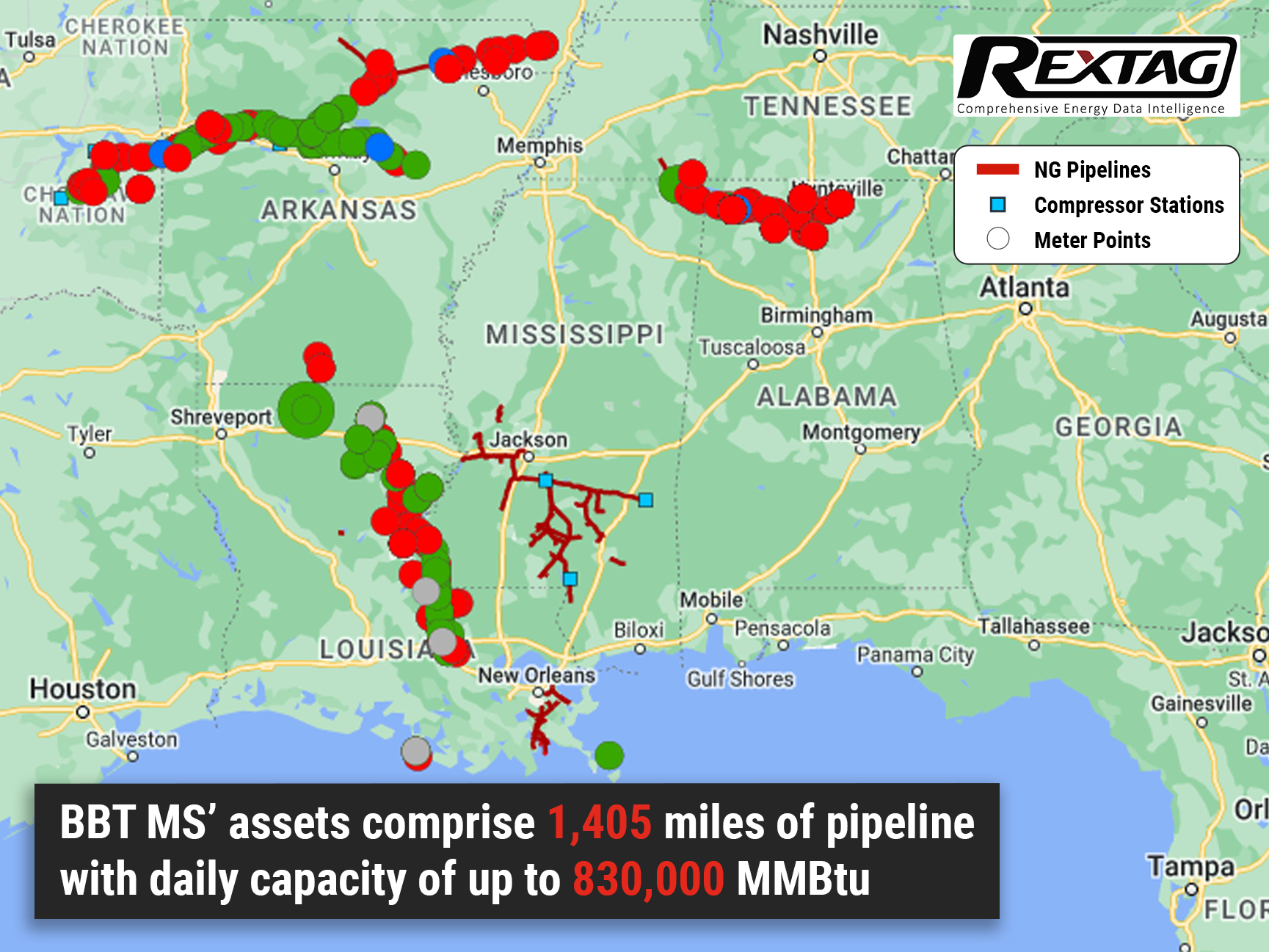
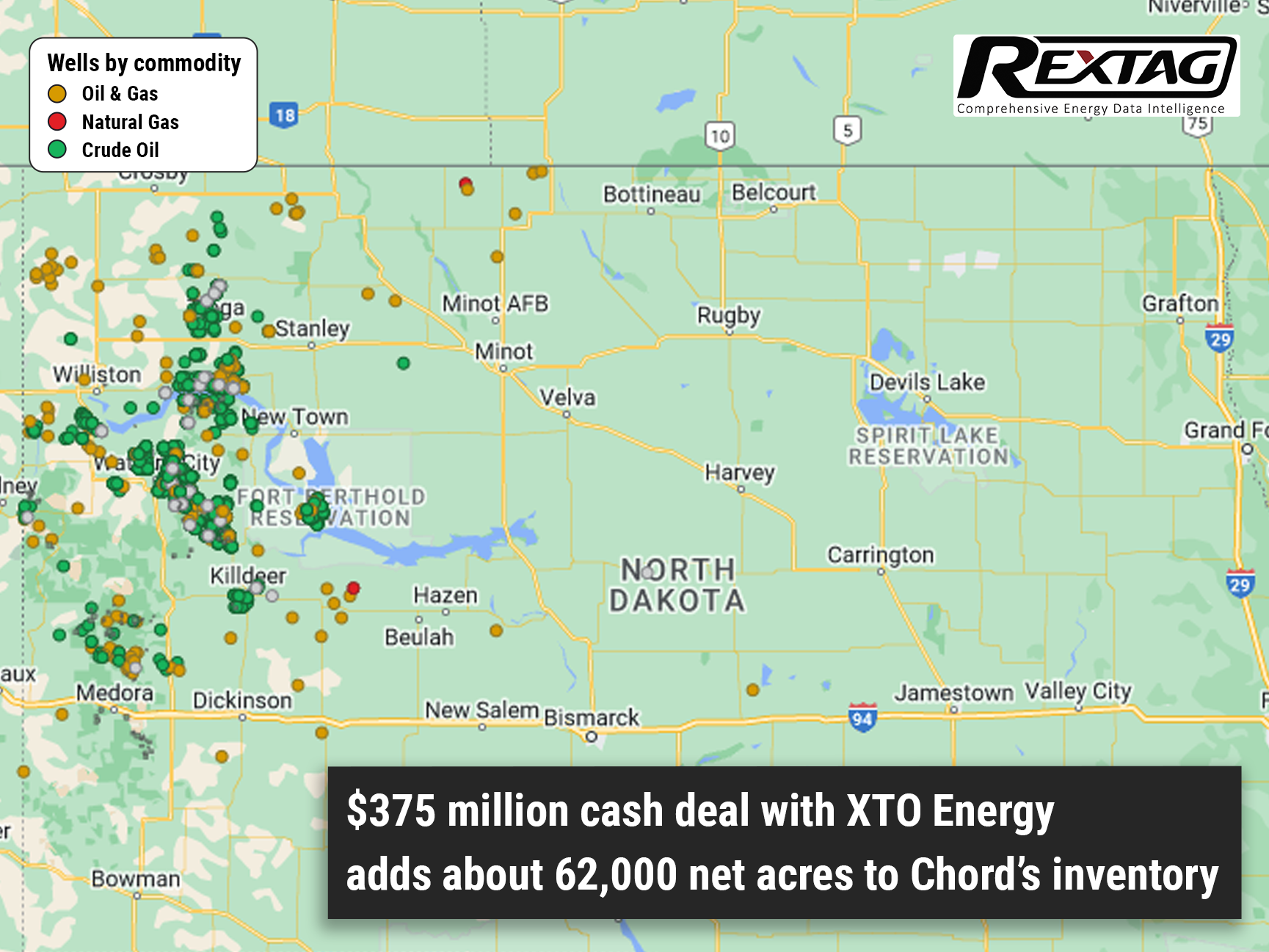
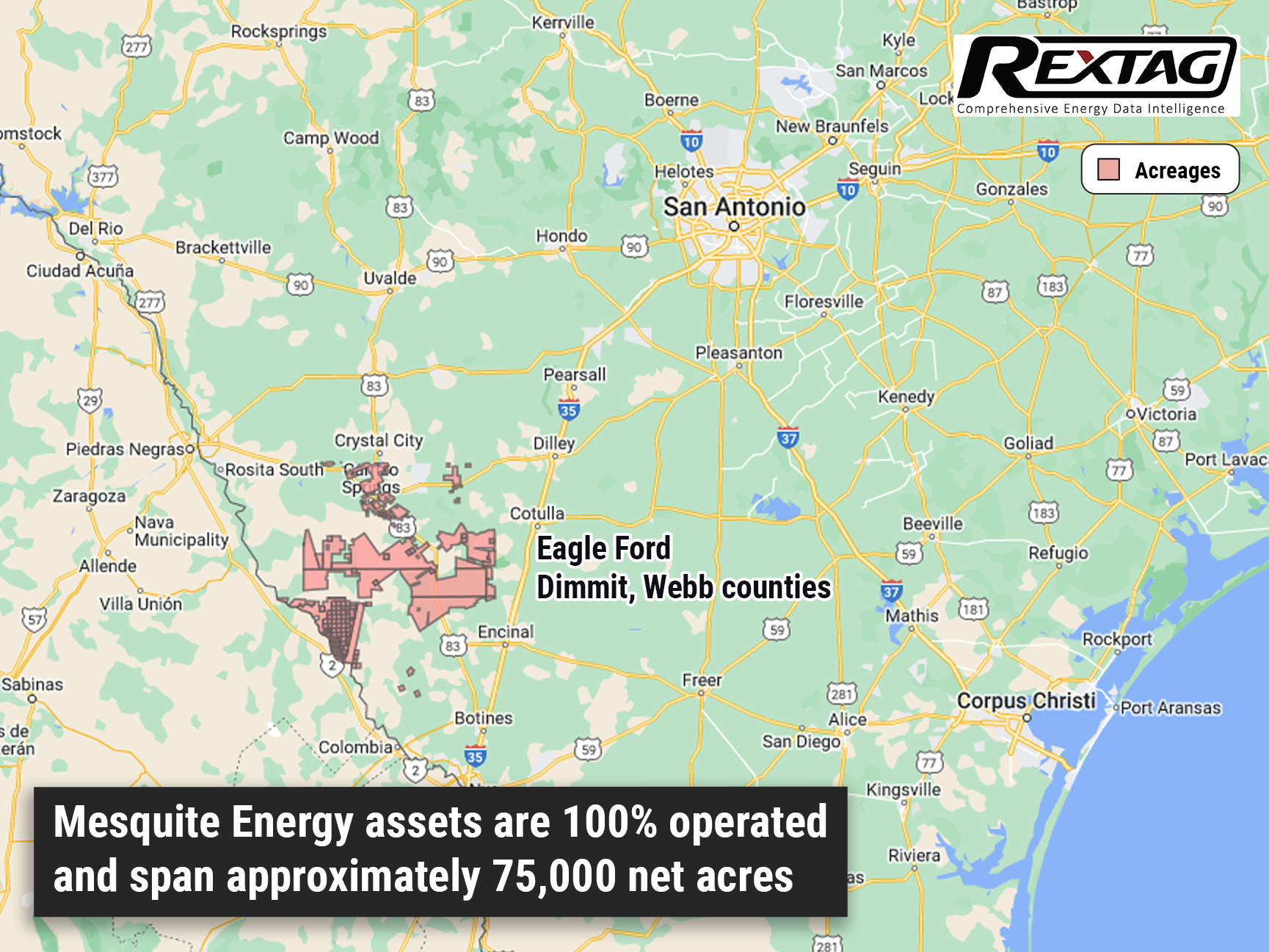
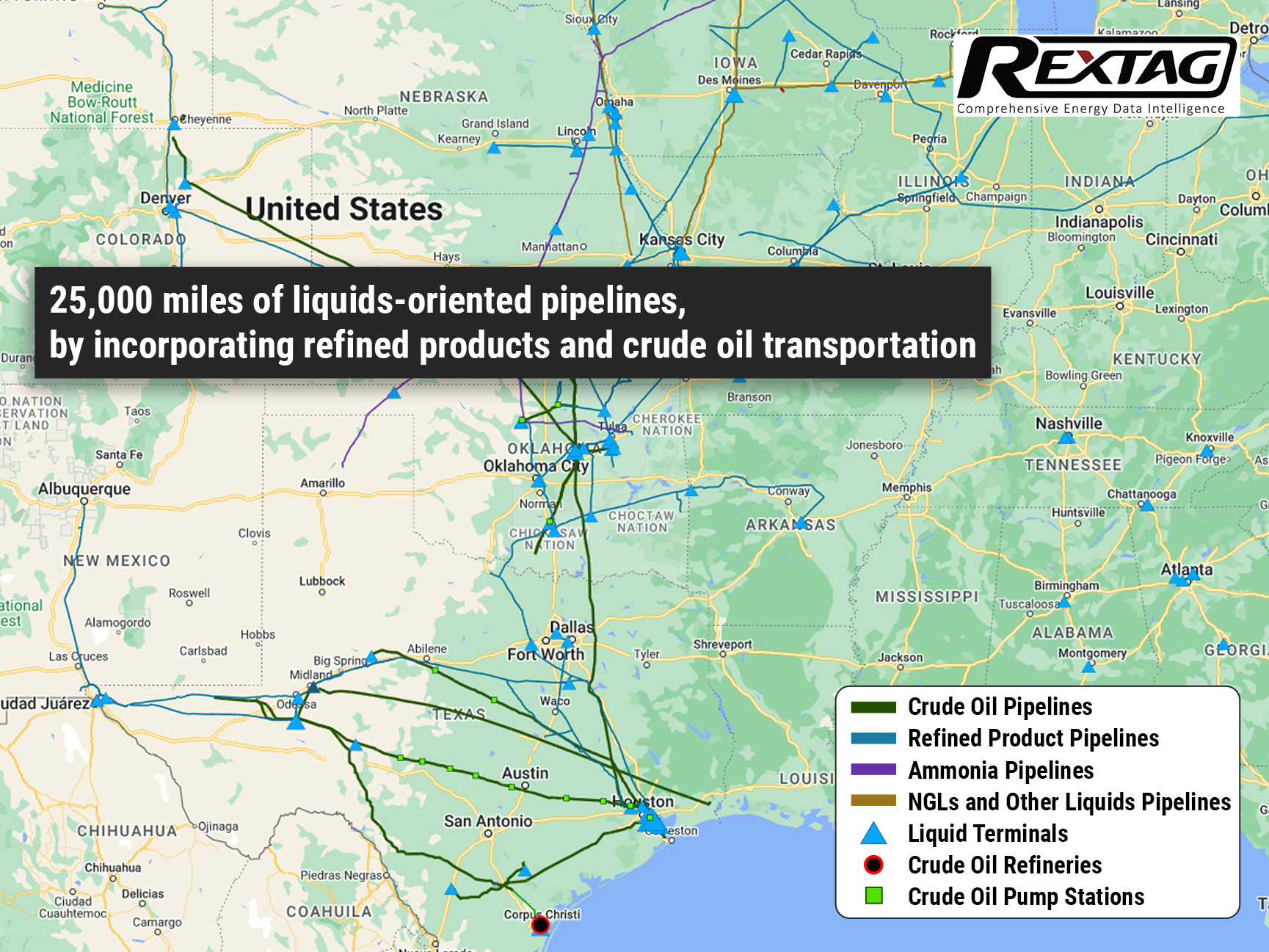
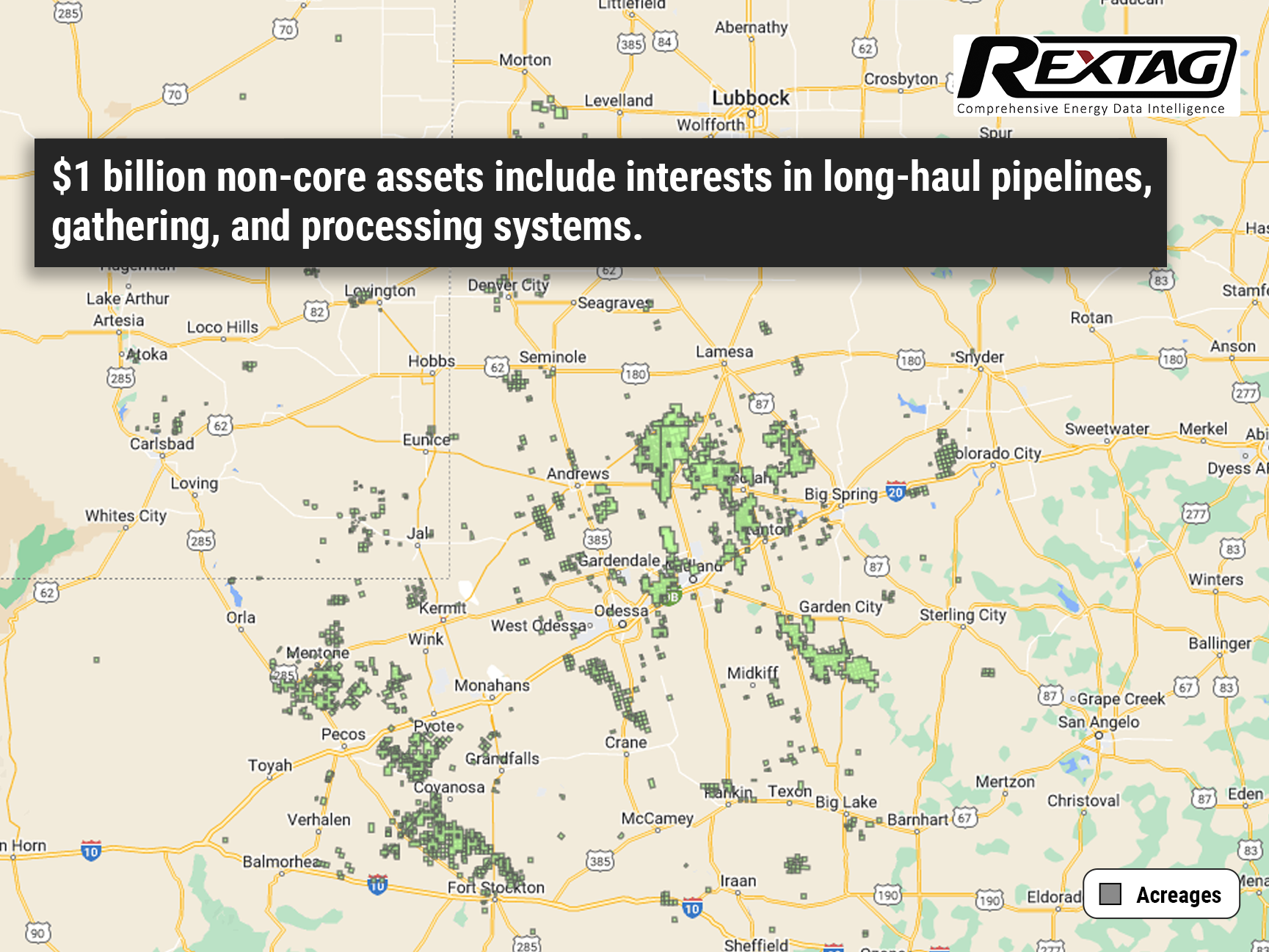

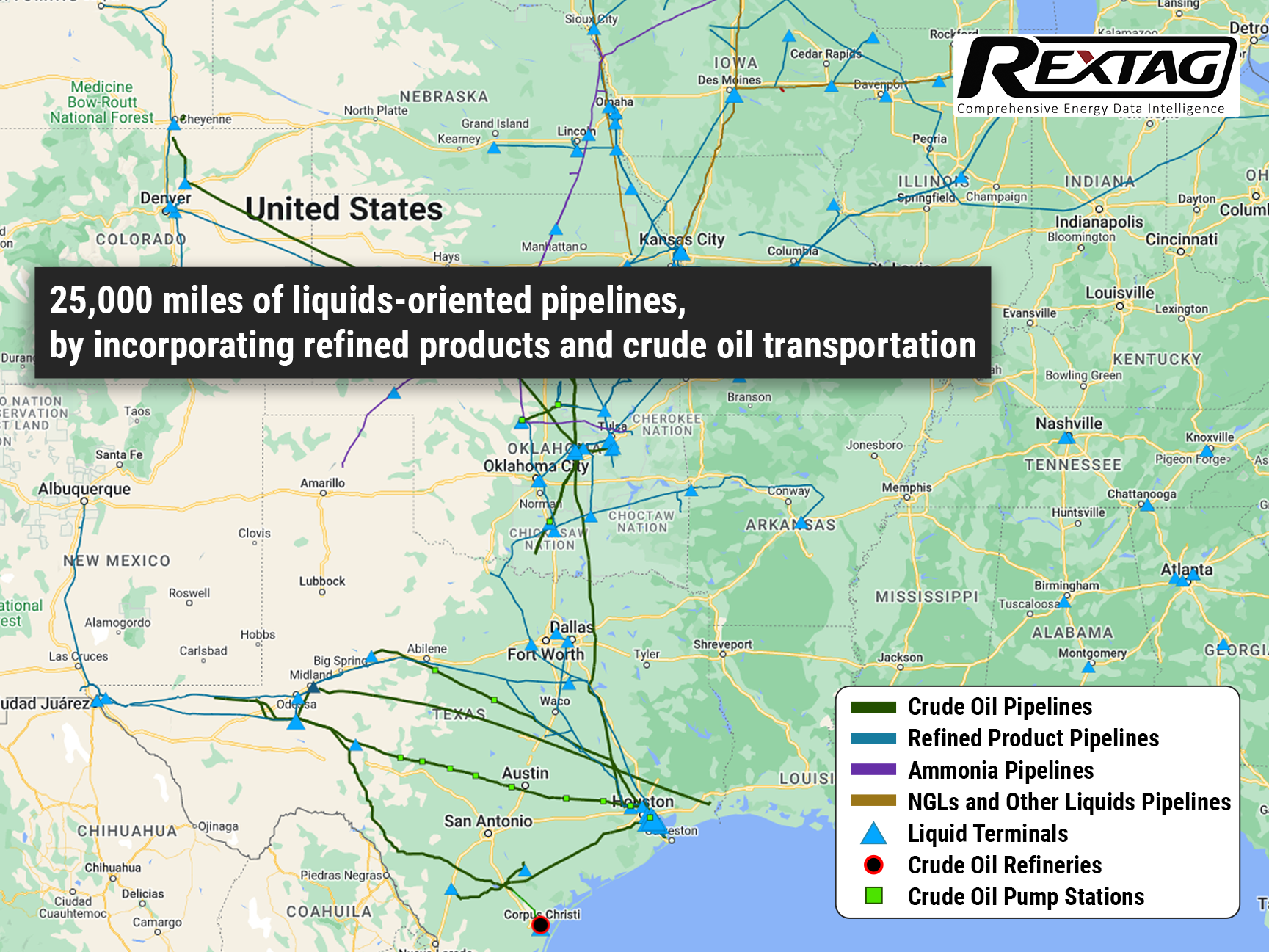
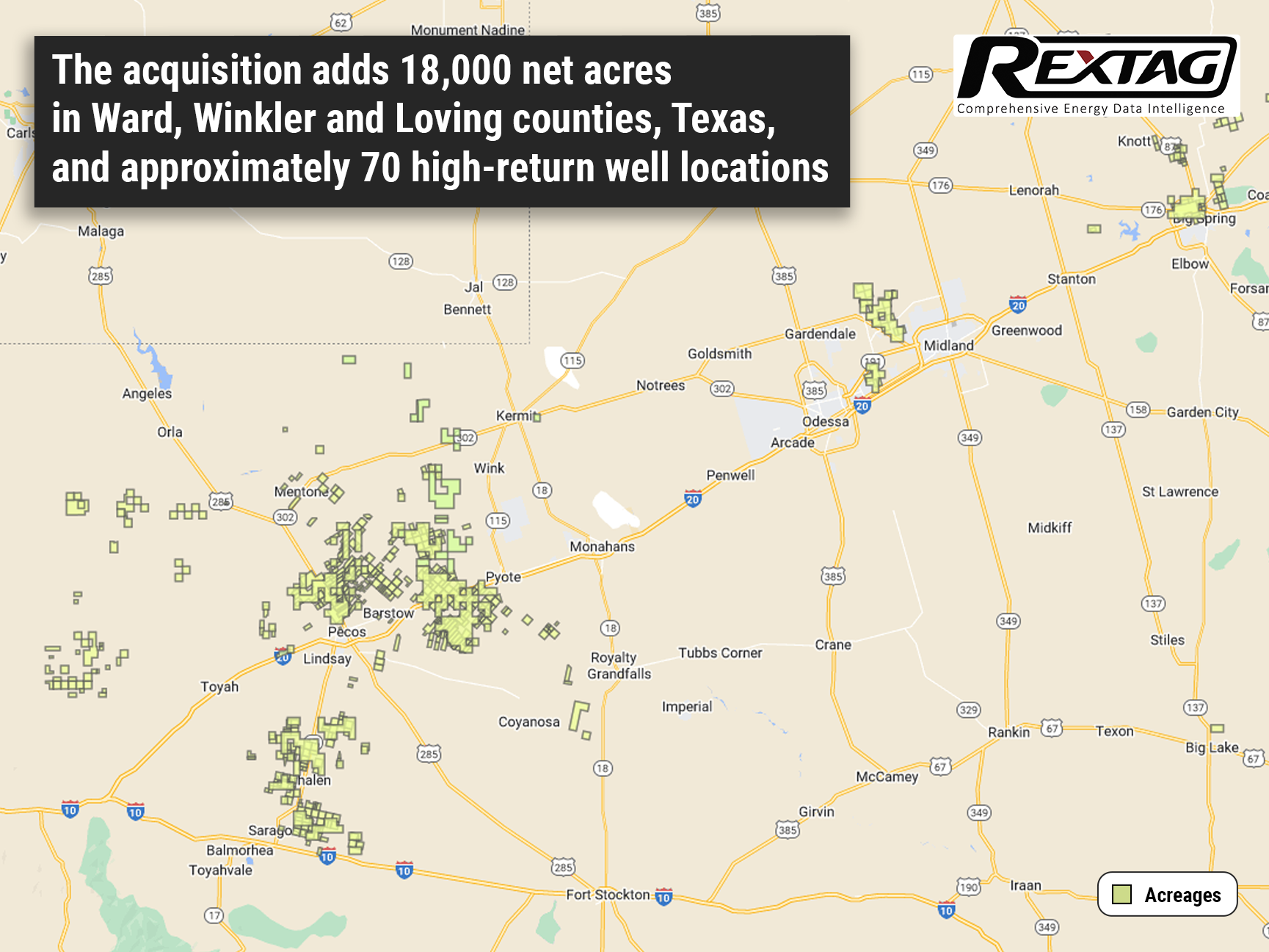
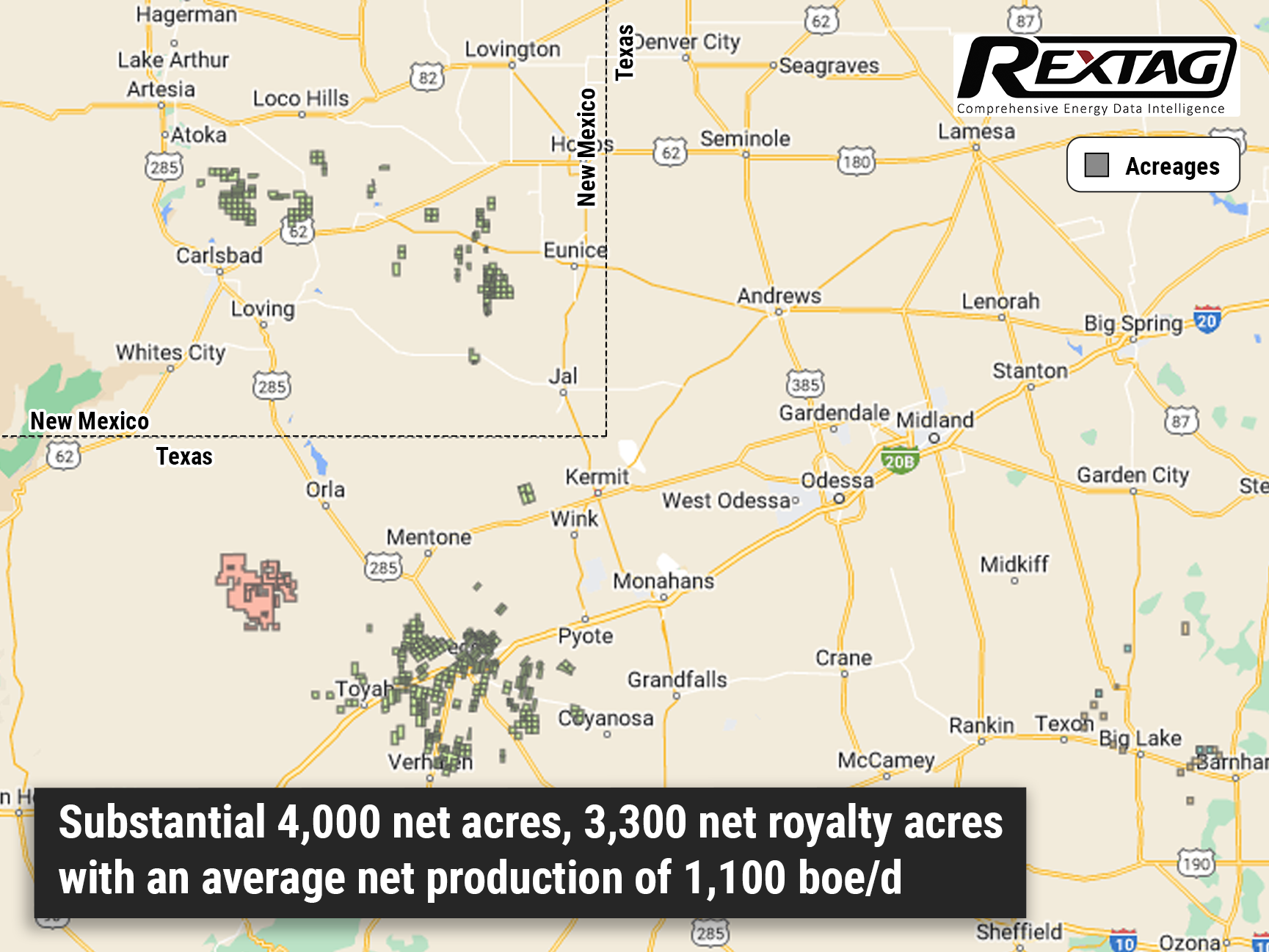
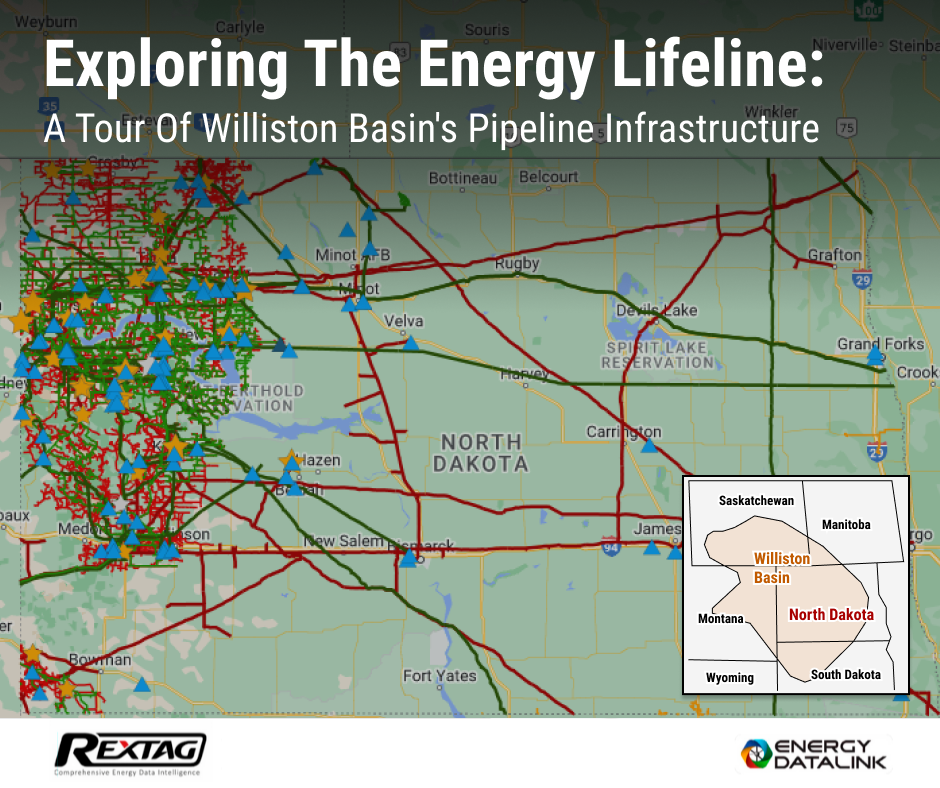
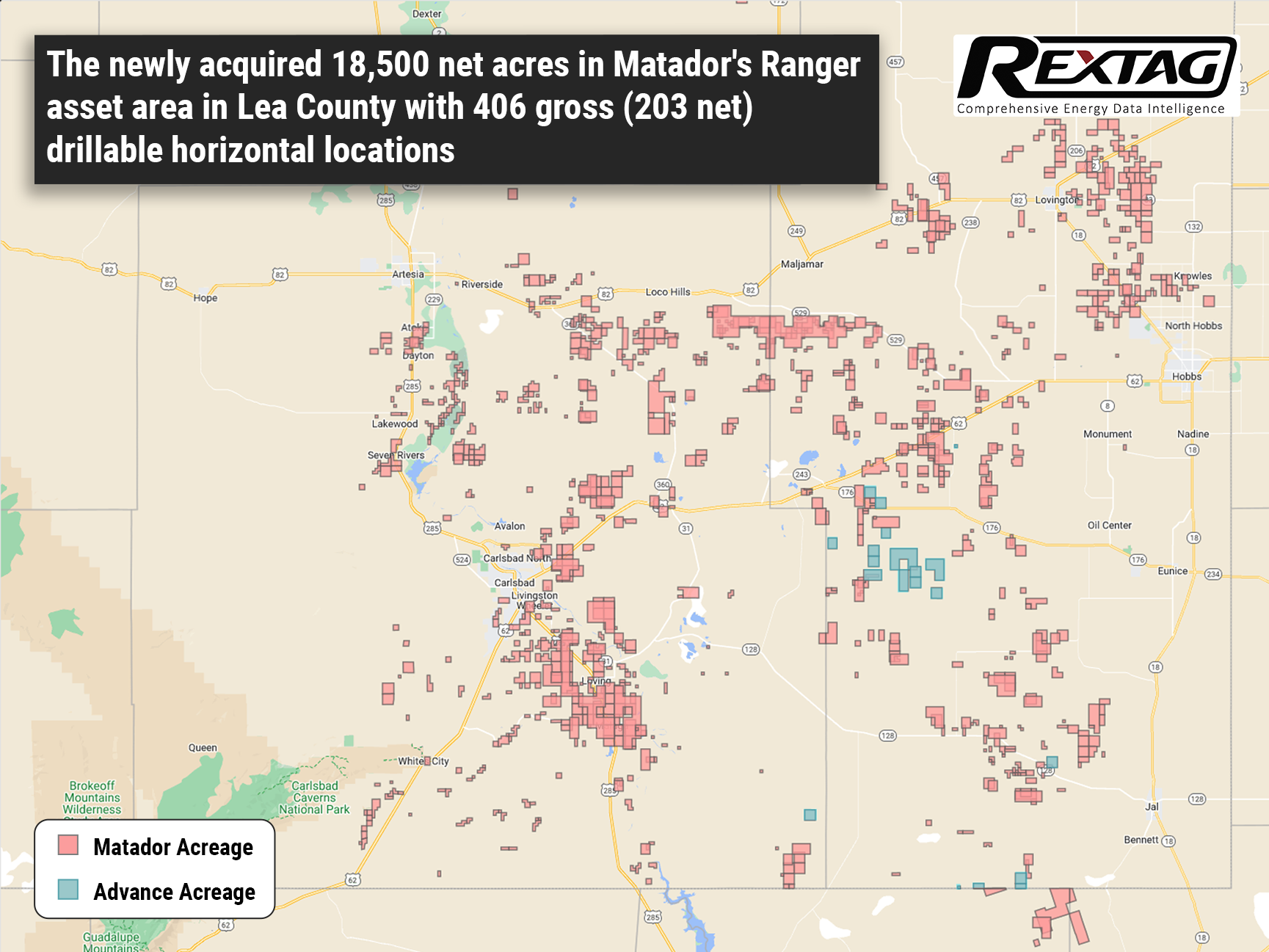
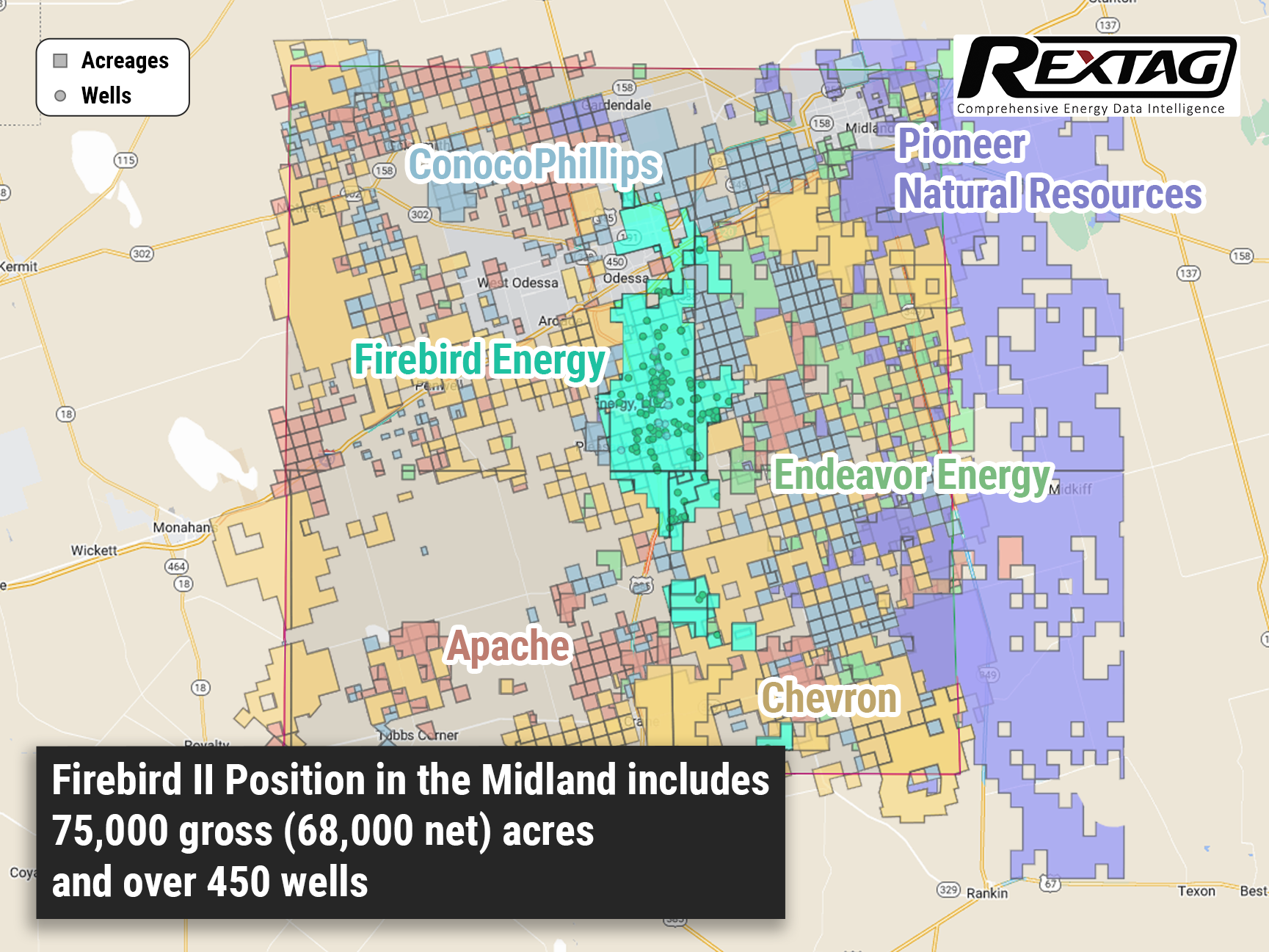
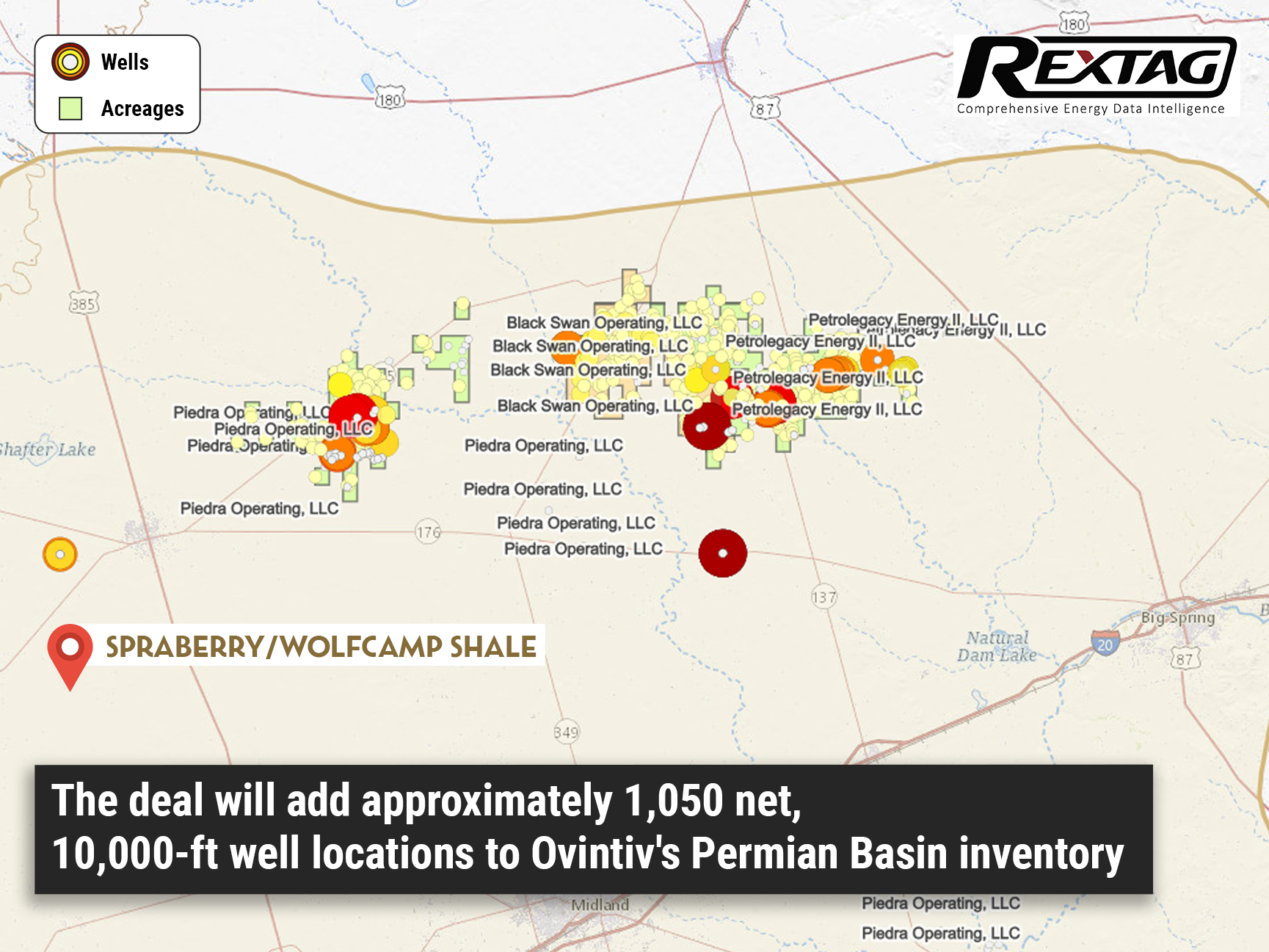
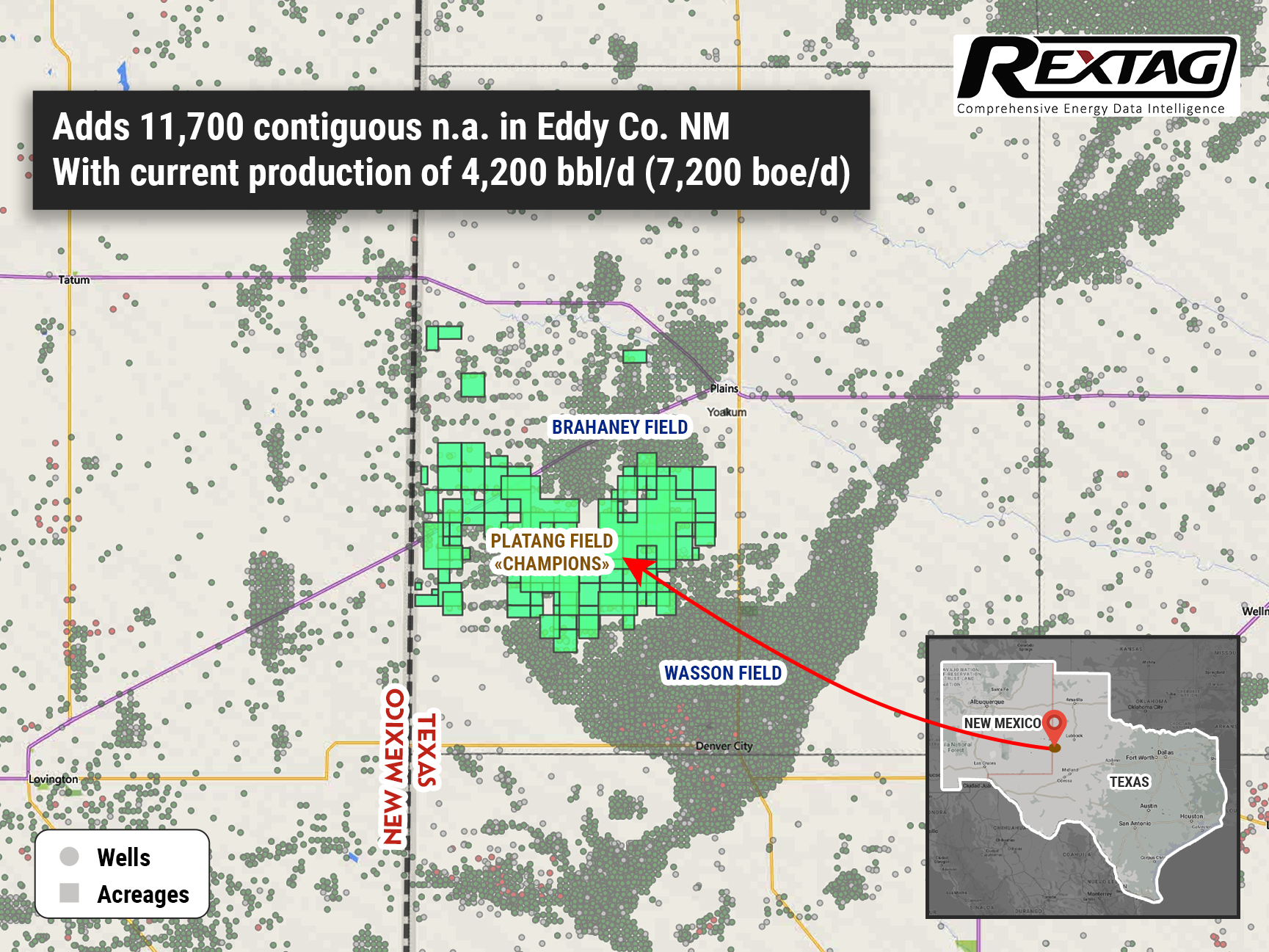
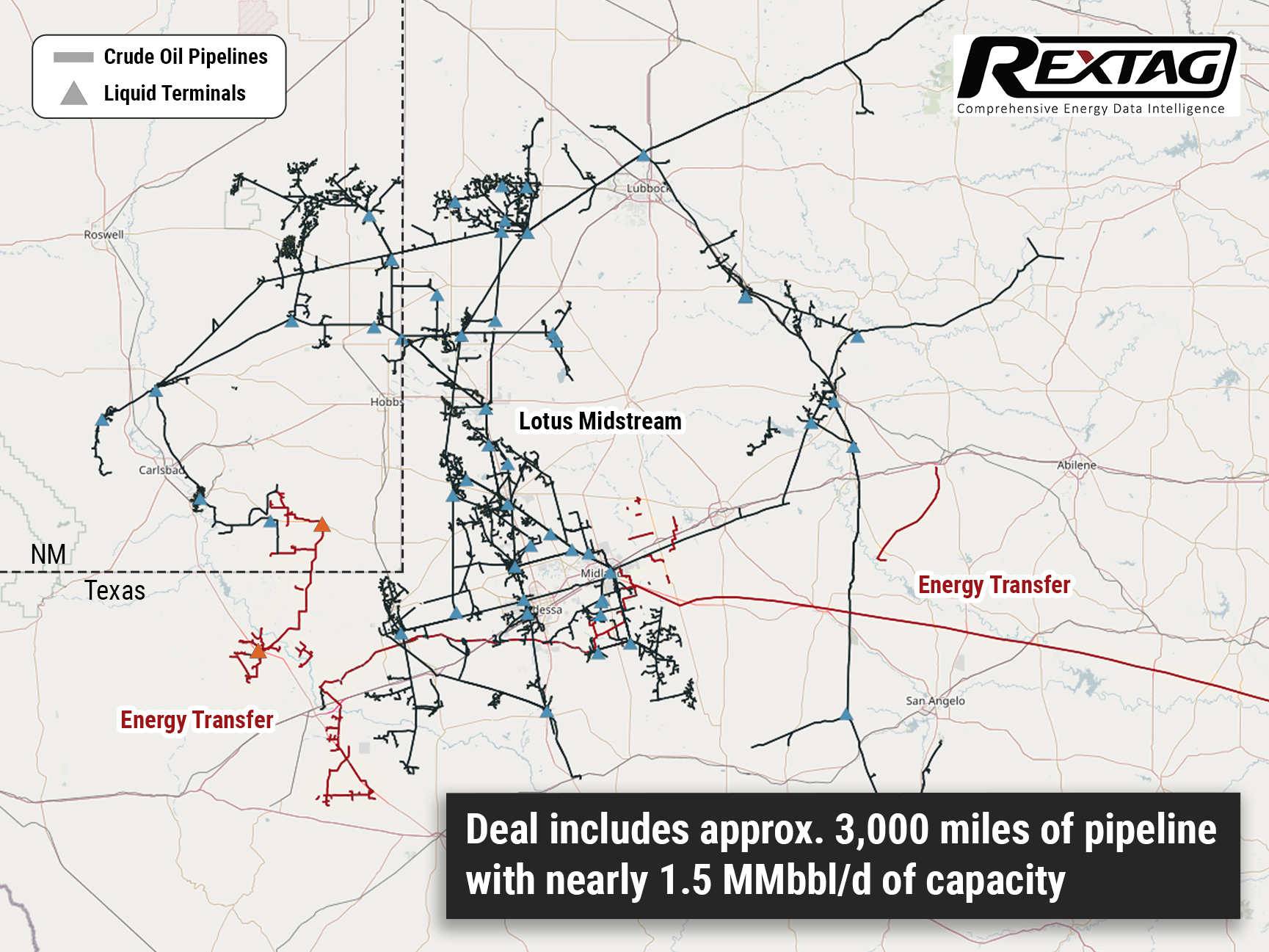
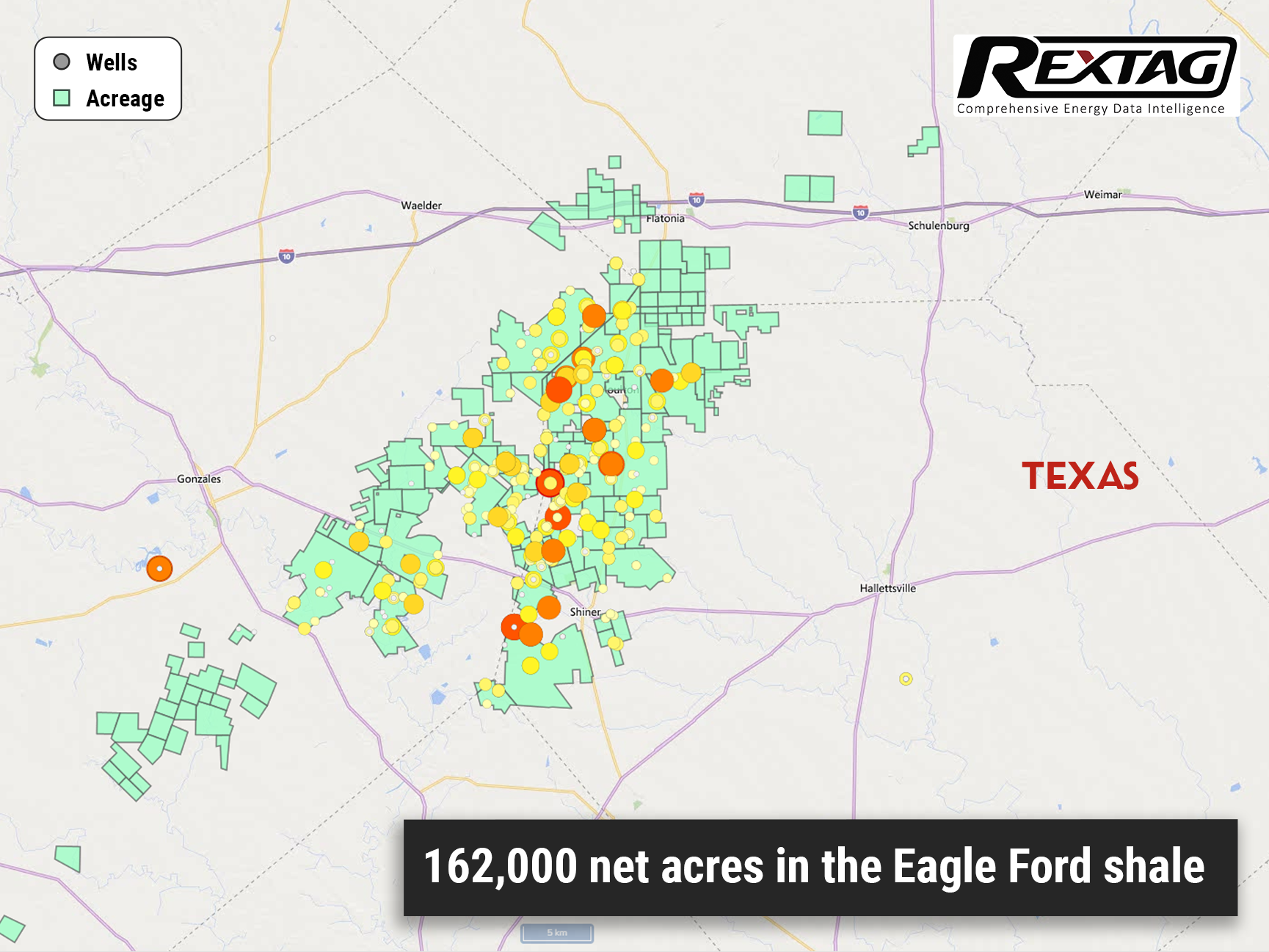
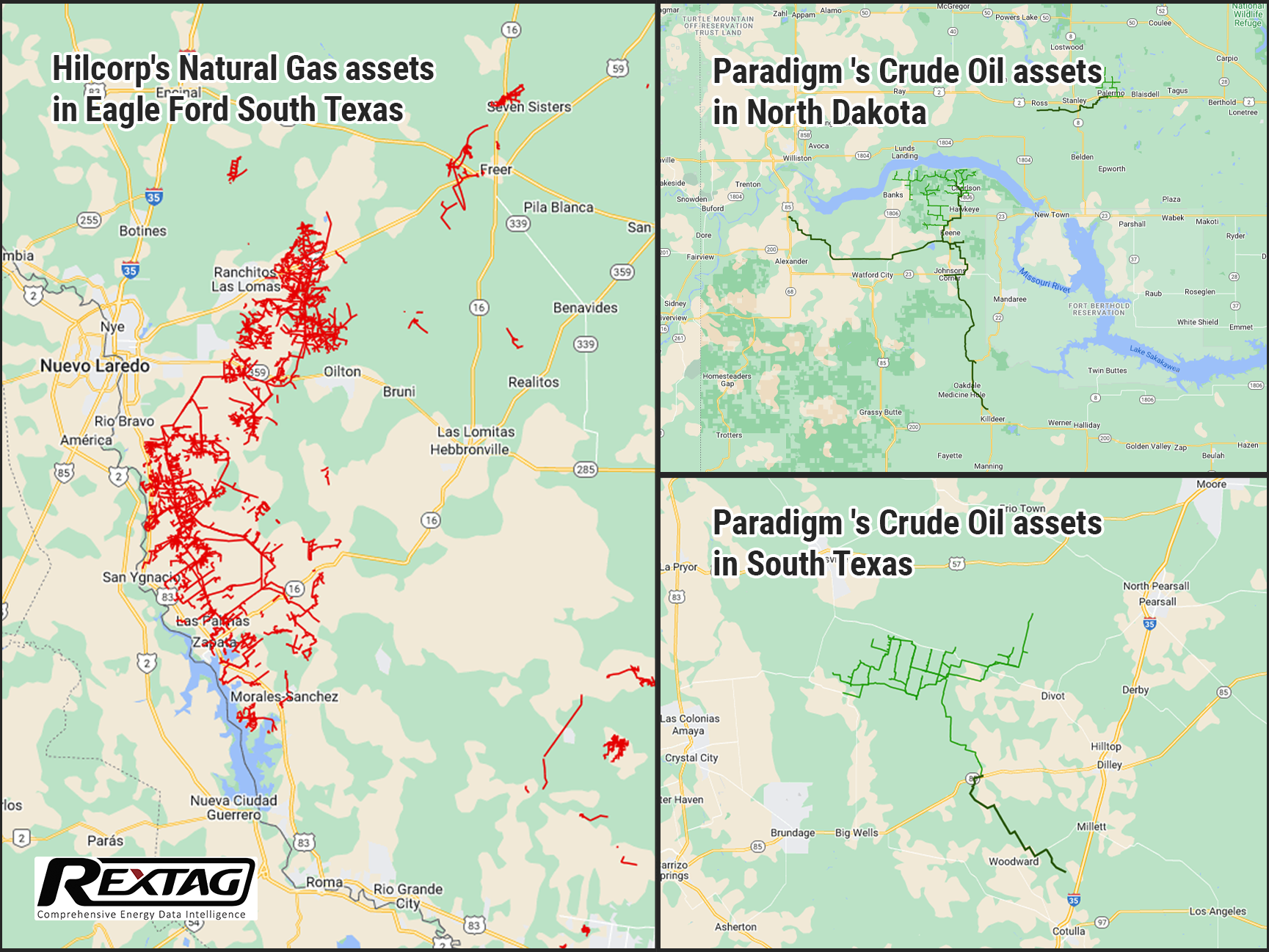
.png)
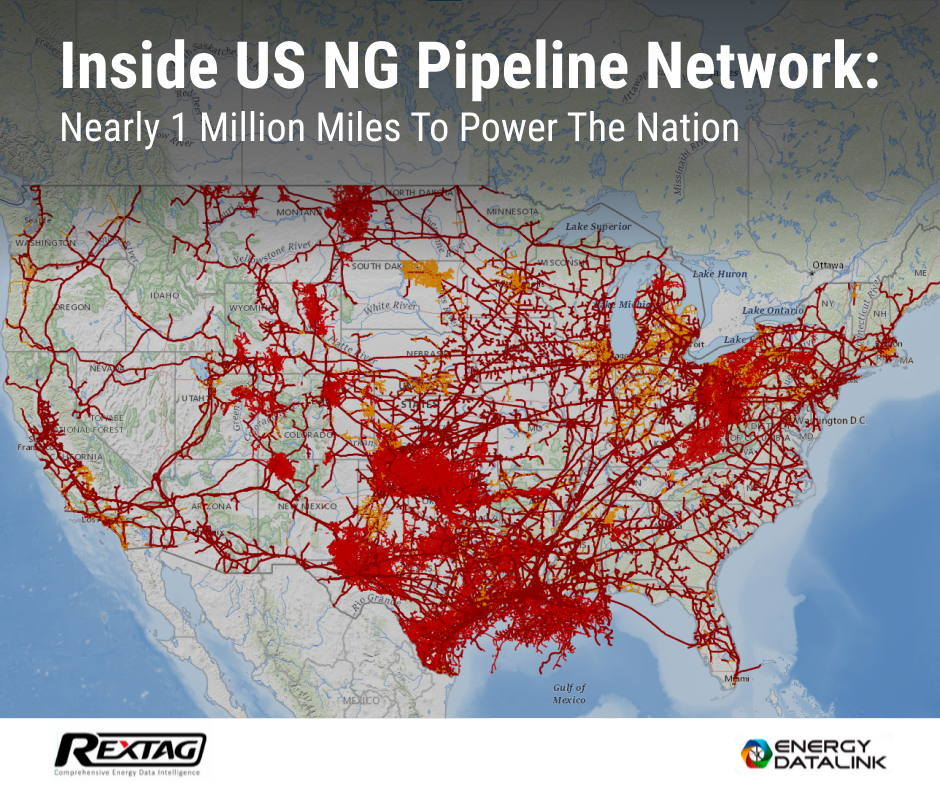
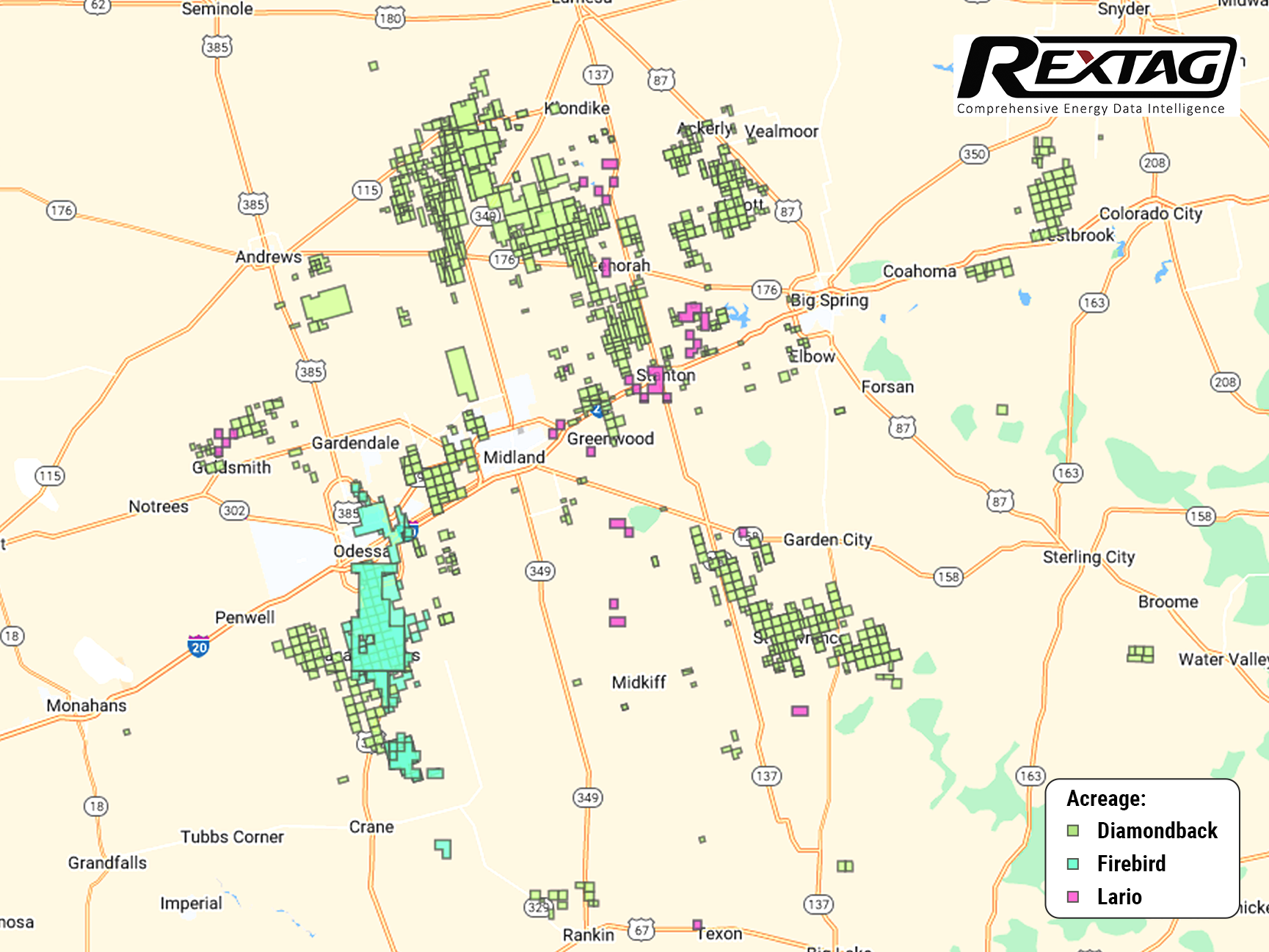
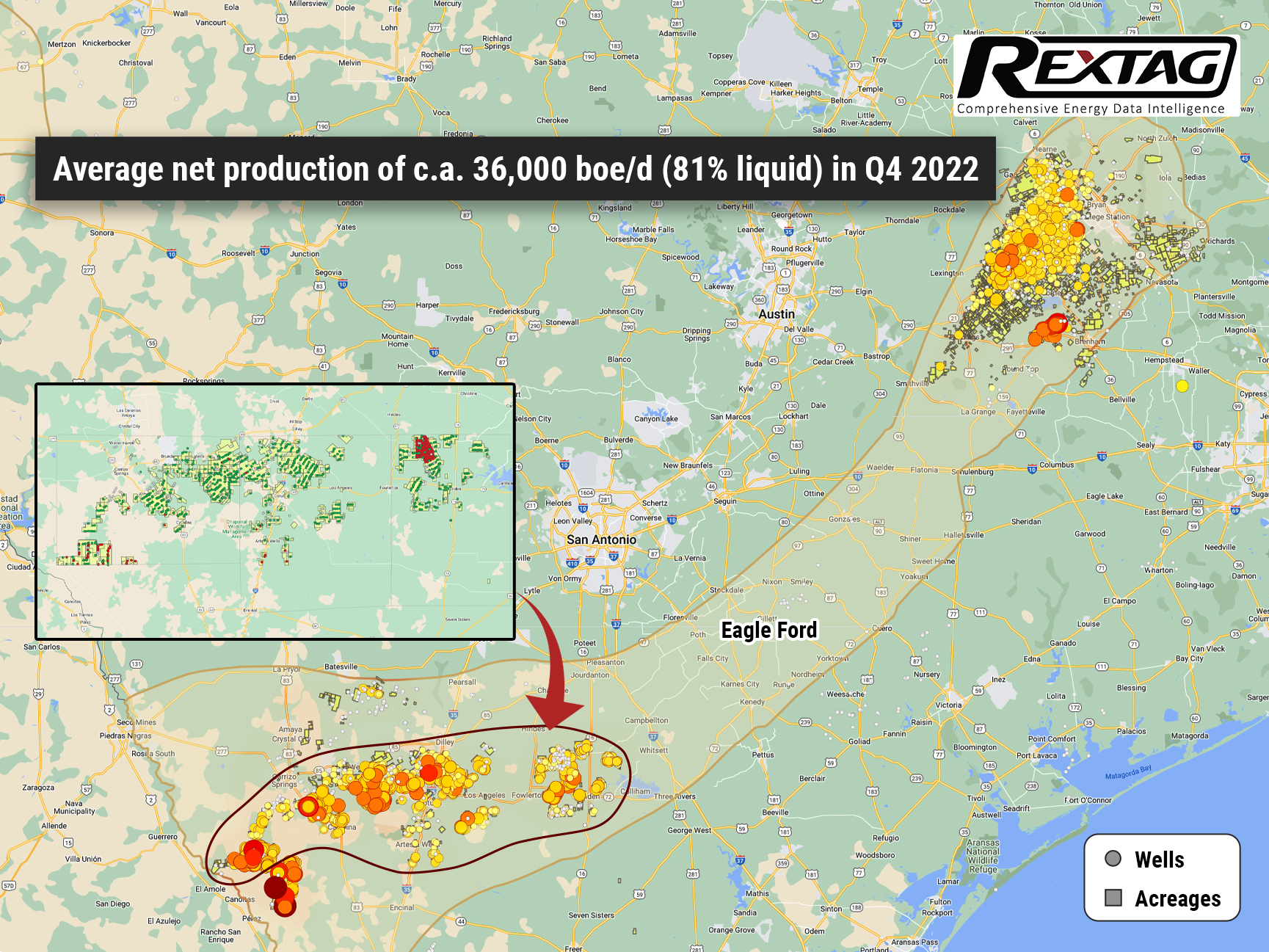
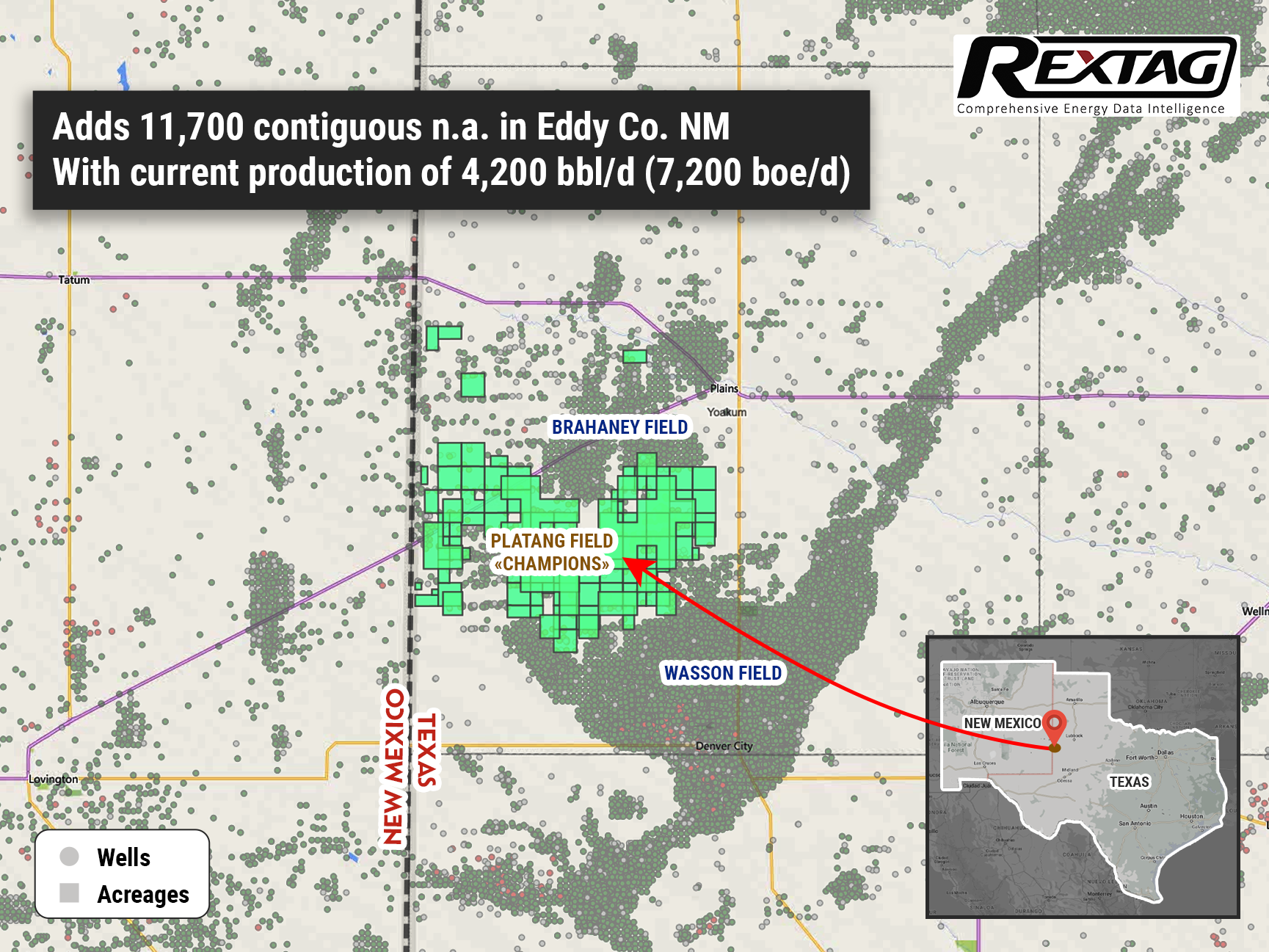
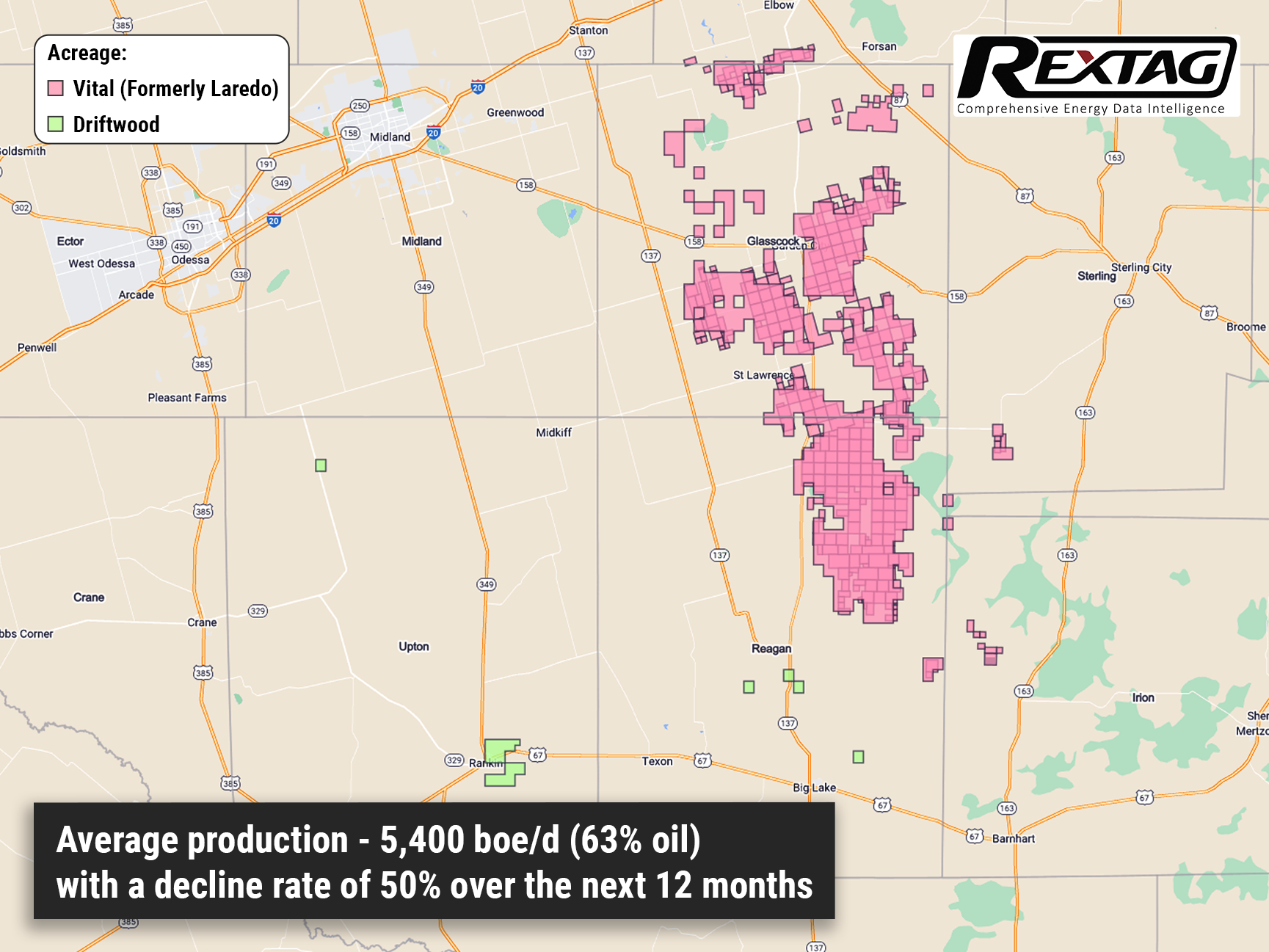
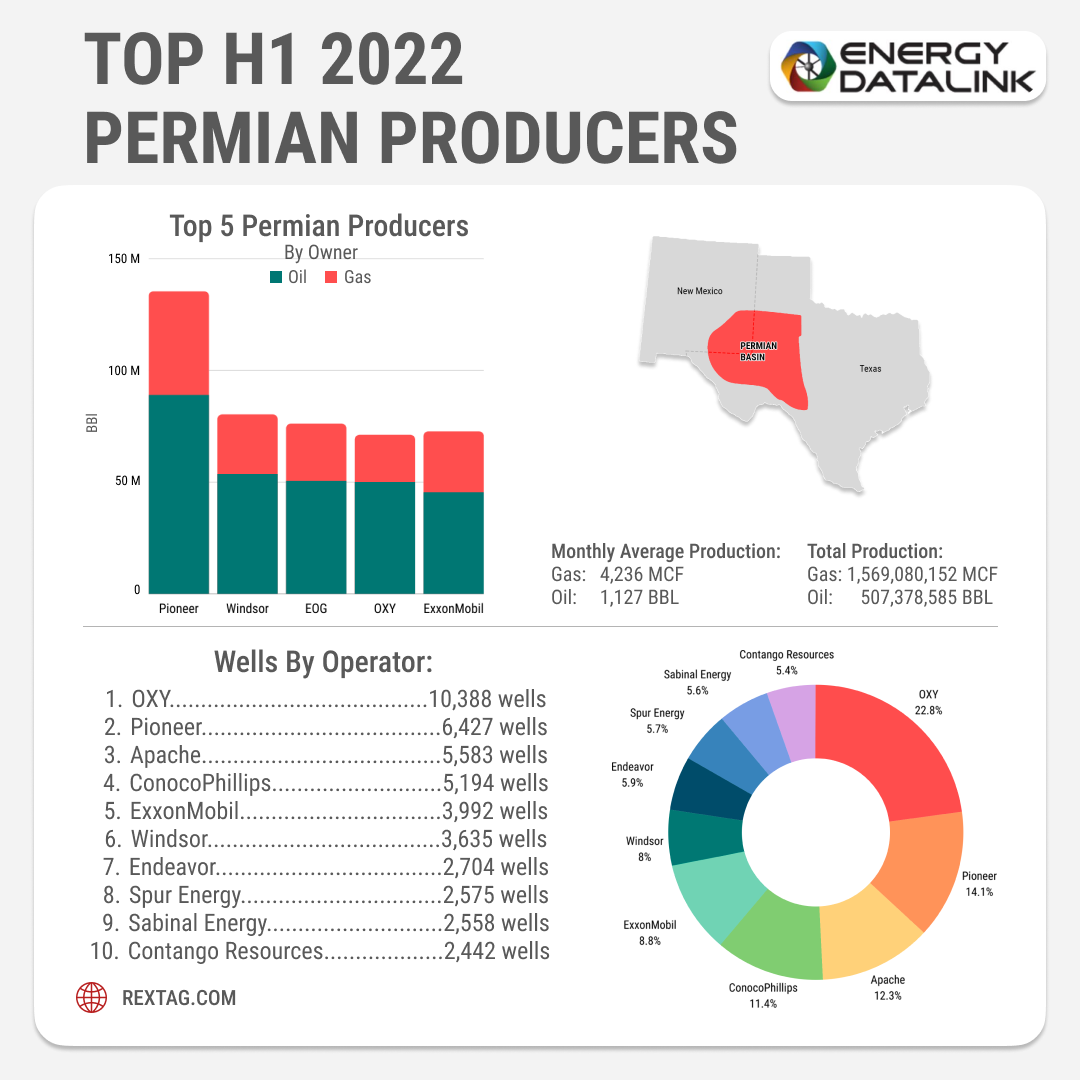




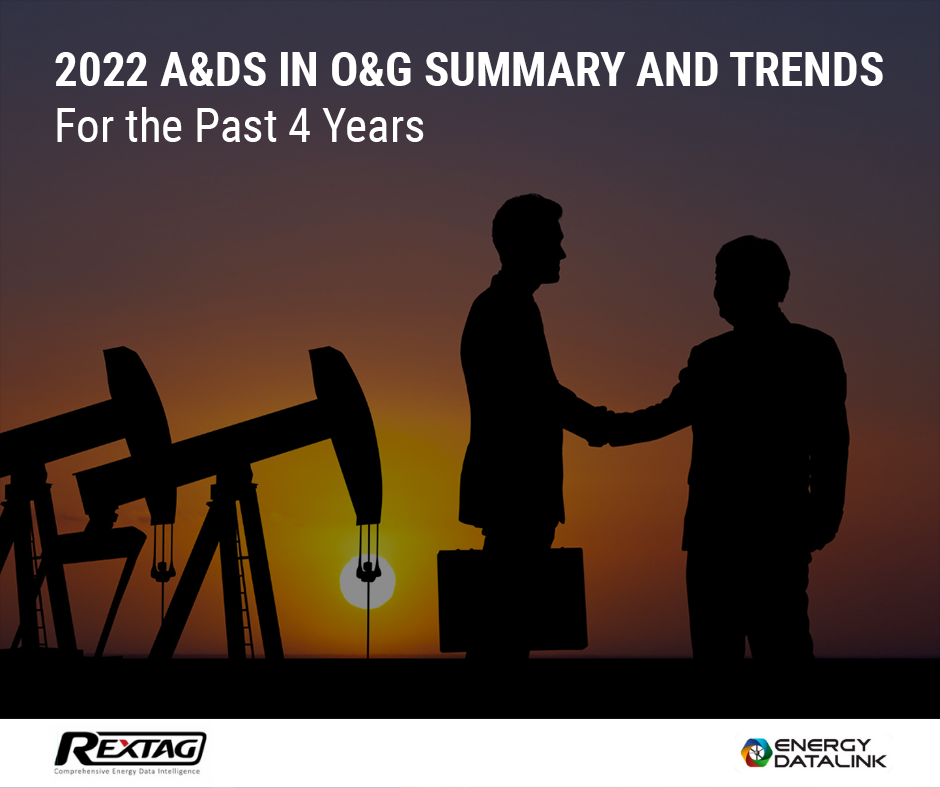



.png)
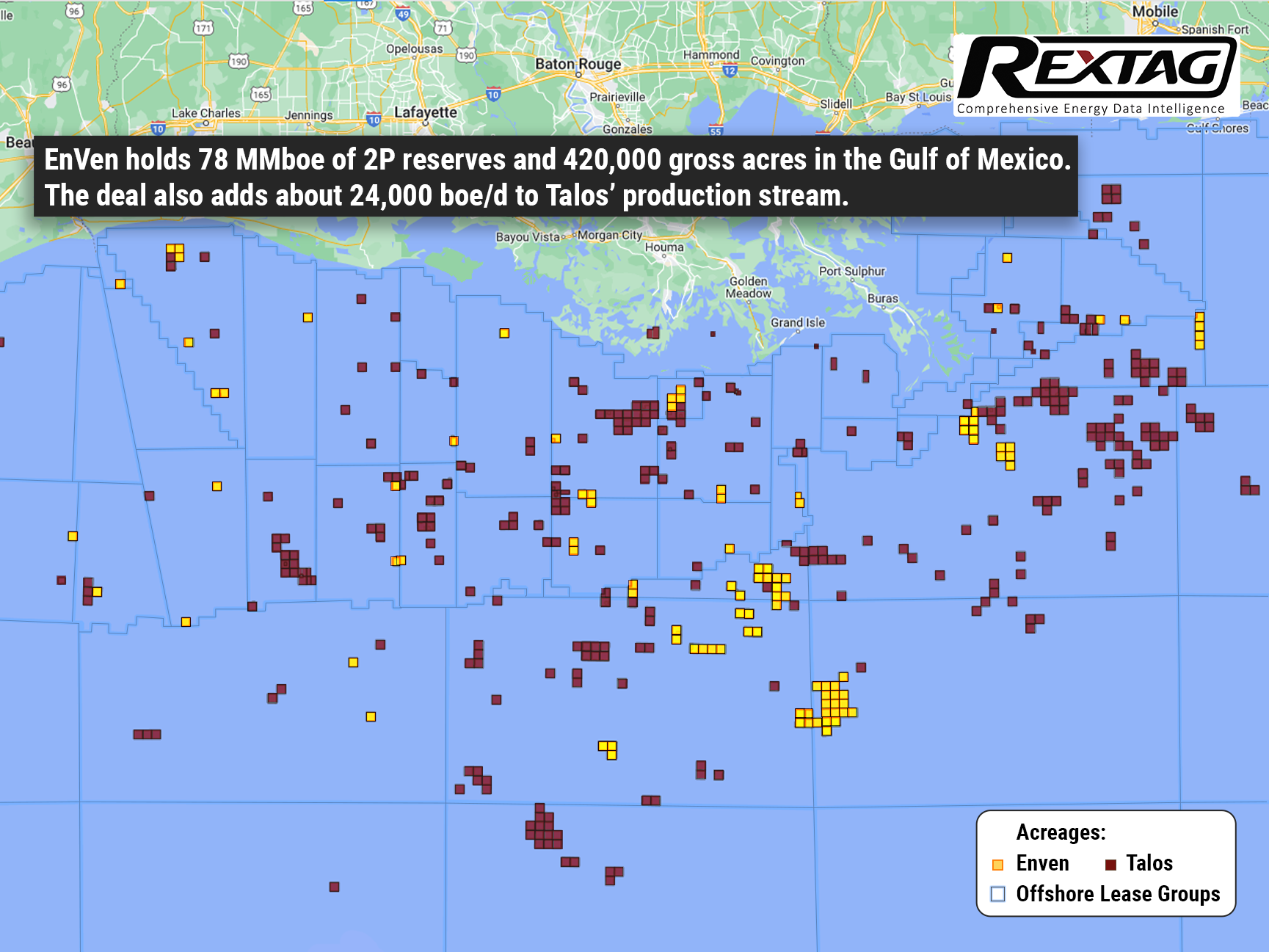
.png)
